- 2024 TRAVEL UPDATE
- Work with us
- Beyond Bologna
- Regions of Italy
- Travel books
- Best group tours
- Itineraries
- Accommodation guide
- Italian phrases for travel
- Rocket Italian review: 2024 update
- Ultimate Italy Travel Planner
- City Planners
- Essential Guides
- Italy themed gift ideas
- Trip planning services

How to plan an Italy trip
Want to know how to plan an Italy trip? You’ve come to the right place. Italy trip planning is one of our favorite things to do. So much so that we set up this website.
We wrote this article to take you step by step through planning your trip. From deciding when to go and how much it will cost to what to take and how to use your mobile phone, it’s all here to remove the overwhelm and make your trip planning easier. Even if you choose to hire a travel agent to assist with your bookings, it is a good idea to walk through these steps as it will help the agent build the best trip for you.
You can see an overview of the steps you need to follow in the article contents below. Follow our guide and you’ll be on your way to planning your own trip or choosing the right tour for you and your travel companions.
Article contents
Step 1 – Decide when you want to go and your budget
When to go to italy.
There is no bad time to visit Italy but there may be one that suits you better. Depending on your interests and the places you want to see you need to be aware of seasonal differences that you need to know about:
- Summer – June to August: peak tourist season, weather is hot and prices higher. Many Italians are on vacation and the coastal areas are very busy especially in mid August
- Fall / Autumn – September to November: September remains hot and busy in most of the major tourist centers. By October the weather is cooling and ferry services on the coast and lakes stop running. At this time grape harvest is in full swing. November is generally quite wet but there is lots of sunshine between the showers.
- Winter – December to February: As the weather cools so do the crowds. Attractions are much less busy and the lead up to Christmas is magical with lights and decorations in shop windows. In January and February restaurants in many coastal areas are closed. February’s Carnevale in Venice is generally one of the most expensive times to visit the city
- Spring – March to May: In March and April wildflowers bloom and the countryside is awash with color. Easter is a popular holiday for Europeans to visit Italian cities especially Rome, Florence and Venice.
NOTE: peak season in the most visited destinations is May – October.
Our favorite time to visit Italy in the shoulder months. In April and May and October and November the weather is generally sunny and mild, the crowds are manageable and you can find great value deals on your flight and accommodation.
Although we are past the worst of the pandemic and travel restrictions, things can change quickly – you can check our article Can you travel to Italy plus current situation. We update this regularly with the latest travel news.
READ: Our full article on the best time to visit Italy
How much will it cost?
This will depend on your expectations, interests and travel style. You can travel very cheaply in Italy if you visit lesser-known regional areas and avoid the big cities. Even in the big cities it is possible to find free attractions and budget accommodation if you know where to look.
If you want to see the main sights and enjoy experiences such as cooking classes, private boat cruises and wine tours then the sky is really the limit when it comes to cost.
Most travelers fall somewhere in the middle however and a reasonable daily budget per person for food, transport and activities is around €100 on top of flights and accommodation.
READ: Our full article on Budgeting for your trip to Italy.
Expert Assistance
Need some help planning your trip?
Book in for a trip consultation with our expert Italy travel planners ready to help you build your dream vacation in Italy whether that be a classic first timer trip or an off the beaten path adventure
Step 2 – Do some preliminary research and preparation
Where to research your trip to italy.
From online news and magazines, blogs, Instagram, Facebook groups (check out Italy Travel Planning ) and even podcasts like ours – there are thousands of resources online. I am sure you’ve already seen quite a few of them already. Sometimes endless options can be overwhelming so we recommend collecting ideas in an online folder or scrapbook and organizing them into destinations that you really want to see.
You’ll probably want to “do it all” but really have a think about your interests and what will best suit you and your travel style. Once you have some ideas, it’s best to consult a structured resource to check your assumptions and thoughts.
Traditional guidebooks definitely have their place for planning a trip to Italy. Well researched and structured, they’ll give you in depth information on destinations and sights to see as well as practical tips to help you plan. Even after 30+ trips to Italy we still consult guidebooks for new destinations we want to visit. You can find our favorite Italy guidebooks here .
Italy travel planners
We noticed that even guidebooks can provide too much information in the planning process so we created one page travel planners for the top places to visit in Italy. Our planners tell you the top sights, best viewpoints, must have experiences and our favorite places to eat (including best gelato stops) in each place.
You can print them off or keep them on your phone and there’s a link to an online map so you can map out your days. We have guides for Rome, Florence, Venice, Milan, Cinque Terre, Amalfi Coast and Sorrento. Our goal is always to simplify the trip planning process and we know you will find them useful.
DISCOVER: Our Digital travel guides and planners .
Group tour itineraries
Tour companies – like ours ! – put a lot of effort into designing tours that cover the main sights and even lesser known regions. They know the times it takes to get around and how long you can stay in each place to get a taste or feel for the destination.
We often check itineraries of places we would like to visit as an input into our own planning. Here are some recommended tour companies and itineraries to investigate.
Private tours
If you want maximum flexibility and comfort, consider a private driving tour . From the moment you land, to when you depart, you’ll have a personal driver with local knowledge making sure your trip is exactly what you imagined.
Passports and visas
At this stage of your planning it is a good idea to check the validity of your passport and if you require a visa. Citizens of the United States, Australia, Canada, United Kingdom and New Zealand may enter Italy and stay up to 90 days without a visa within an 180 day period. You must have 6 months validity on your passport when you enter Italy. Go and check this now as it can take several months for new passports to be processed.
All other nationalities should check this Italian government site that will walk you through whether a visa is required for your visit.
Citizens of the European Union can travel with photo identification.
Please note – this information is subject to change and it is always best to check with your local foreign office for the latest advice on travel to Italy.
- United States – click here
- Australia – click here
- United Kingdom – click here
- Canada – click here
READ: Can you travel to Italy plus current situation .
Step 3 – Confirm your itinerary
Itinerary planning is where many people get stuck. We understand. There are so many amazing places to see in Italy that deciding where to go and how much time to spend there can be hard. As a general rule, we like to spend a minimum of three nights in each place to minimize time spent traveling and also enjoy each place as much as possible. So if you have a 10 day trip then 3 main stops would be a good baseline to start with.
Where to go
From your research, you probably have an idea of where you want to go. You may want to visit the popular cities and regions on your first trip however each city and region in Italy offers something special.
Most popular cities
Most popular regions.
On our site, you can also browse Italy’s lesser-known cities and regions on the destinations page or visit our article on hidden gems in Italy for inspiration.
Itinerary suggestions
As a general rule, for a 3-5 day trip we suggest choosing one destination – a city or region. If you have a week to 10 days then you can plan 1-3 places in either the north OR south of Italy. In a two week trip you could cover 3-4 places and see both north and south.
Try not to squeeze too much in. It’s easy to underestimate transit times and getting in and out of airports and train stations. Plus you want to have plenty of time to enjoy yourself and soak up every last moment.
Suggested itineraries
If it is your first trip to Italy, like many first-time visitors you may choose to start your journey in Rome and visit Florence and Venice. This 10 day Italy itinerary covers that route. It includes detailed instructions on how to make the most of your time in Italy.
Want our FREE Italy trip planning checklist? >> Click here .
Alternative 10 day itinerary suggestions
Most people travel to Italy for 10 to 14 days so we built some itinerary suggestions to cater for that time frame that cover both northern and southern Italy.
Group Tours
Packaged group tours of Italy are a popular way to travel and avoid the stress of planning your own trip. They are also a great option if you would like some company along the way. Here is a quick summary of popular tour companies:
- Untold Italy small group tours – we run exclusive small group tours for food and wine-loving travelers wanting to get off the beaten path to see hidden Italy beyond the major cities and tourist areas. We lead groups of 14 people on journeys of discovery to experience the regions of Sicily, Puglia, Piedmont, Tuscany, Umbria, Bologna and surrounds, Capri and the Cilento coasts > learn more
- Trafalgar – popular and well respected brand appealing to the 50+ age group. Travel is by coach and the focus is on culture and history. Expect group sizes of 40-45 passengers and 4 star hotels. Trafalgar also include interesting local experiences such as wine tastings and unique stays in their itineraries. Check out their popular Best of Italy tour
- Intrepid Travel – small group tours with an average of 10 travelers with plenty of free time built in for exploring. Their popular Italy Real Food Adventure is an 8 day itinerary that showcases their travel style well
- Peregrine – Intrepid’s premium brand offers some interesting hiking tours of the Italian Lakes and Amalfi Coast
- Tourradar – is a market place for group packaged tours where you can browse hundreds of package tours by different operators, and by date. You then filter by your interests and age group and read detailed reviews. You can browse fully organized tours to independent self-drive or train itineraries
READ: Our full article on the Best package tours for Italy .
When should you start booking your trip?
Italy is one of the most visited destinations in the world, so in our opinion, it is never too early to start the booking process. Book accommodation as soon as possible, and at least 6-12 months in advance especially for peak times in July and August. We prefer to pay the higher rate for flexible bookings on both Booking.com and Plum Guide .
Day tour and attractions also sell out months in advance at peak times. In 2020 our preferred booking site GetYourGuide refunded all tours canceled due to the pandemic and stand by their policy of allowing cancelations with a full refund up to 24 hours before your activity starts.
Flight bookings will depend on where you are flying from. For long haul flights the best deals are generally found 6-12 months in advance while deals pop up regularly for travel within Europe.
Rail bookings can be made up to 4 months in advance on high speed intercity and standard intercity trains.
Step 4 – Book your flights, inbound travel & insurance
Flights to italy.
It is easy to fly direct (or with a single stop) into Italy from most places in the world. Rome Fiumicino [Leonardo da Vinci](FCO) international airport is the main hub for air traffic but you can also easily fly into Milan Malpensa (MXP) or Venice Marco Polo (VCE) airports from major hubs around the world.
There are many other airports throughout the country that can be accessed within Italy and Europe. Pisa is useful for trips to Tuscany and the Cinque Terre and you will need to fly into both Sicily and Sardinia.
To source the best flight deals to Italy we use a combination of Skyscanner , CheapoAir and Google flights .
- Skyscanner – portal where you can view cheapest days and routes to fly and set alerts for price drops
- CheapoAir – uncovers the best deals on first and business class flights around the world
- Google flights – great for checking schedules and airline routes
Secure the best deals by setting up alerts on Skyscanner for the month you wish to travel and wait for price drops. It’s good to have a price that you wish to pay in mind but be prepared to be flexible on dates and stopovers. It is often cheaper to fly into Milan rather than Rome and that city is a useful entry point for northern Italy itineraries.
TIP: always use an incognito browser window to search for flight deals. Prices are amended up for users known to be searching for specific dates and times.
Inbound rail from within Europe
Major Italian cities – Milan, Rome, Florence and Venice – have fantastic fast speed train links from other capitals and major cities in Europe. The website Seat 61 is a great resource for planning train travel within Europe.
Bus travel to Italy
If you’re on a tight budget and traveling within Europe, then you might want to consider coming to Italy by bus. Low cost operator Flixbus covers 3,000 destinations in 39 countries.
You can compare schedules and prices using Omio – a useful site for booking a combination of train, bus and air travel within Europe.
Organize travel insurance
Once you have booked your flights or tour, we recommend organizing travel insurance straight away. The main reason you should purchase insurance is to cover health costs and emergency repatriation to your home country should you fall ill. Since 2020 you need to check whether there is cover provided for issues relating to covid19 however general health cover is recommended regardless.
Cover for cancelation, delays and loss of belongings is a bonus and again they may not apply under pandemic conditions. You need to read all the terms and conditions of your cover including any exclusions before you commit to buy.
Policy costs vary by your country of residence, what is covered, age, existing conditions and the insurer. You can visit Worldnomads for a quick quote. We use this company for our family travels and find the cost, coverage and claims process to be good to excellent.
Another option if you are in the United States is Safety Wing’s Nomad Insurance . Unfortunately neither option provides policies for those aged over 69. In this case you can try Travel Insurance Master – a service that allows you to compare quotes and insurance policies.
Step 5 – Book accommodation and transport
Accommodation.
Choosing where to stay at each stop is an important part of itinerary planning. Italy has many different options for tourists and you can expect the usual range of hotels and bed and breakfast accommodation as well as apartments and villas.
If you plan to spend any time in the country, consider staying at an agriturismo or farm stay. This is accommodation offered by Italian farmers who earn additional income by providing rooms and meals. Very popular in Italy and Europe, prices ranges from budget to luxurious. You can find agriturismi (plural) with swimming pools, hammams, restaurants and wine cellars. We always try to build them into our itinerary.
LISTEN: Find out about farm stays in Italy in this podcast episode .
How much will accommodation cost?
Here is a rough guide to average prices for a double room. This will vary with prices higher in popular areas at peak times
Upscale / Luxury – €210+ [USD $240+] per night Midrange / Boutique – €120-260 [USD $135-295] per night Budget / B&B – €70-130 [USD $80-150] per night Ultra budget / Hostel or shared room in AirBnB – €30-45 [USD $30-40] per night
Best accommodation sites
Our favorite sites for booking lodging are Booking.com and Plum Guide – between them, you’ll find a huge range of options from hotels and resorts to bed and breakfast, apartments and farm stay accommodation.
Plum Guide is particularly useful for longer stays in apartments and villas and if you’re traveling as a family and need some extra space. Use the code “Untold5” for a 5% discount here .
Other sites we use and recommend
- BookingsForYou – beautiful villas and apartments in Tuscany, Italian Lakes and Puglia – 5% for readers when you mention our site or code – UntoldItaly – when booking
- VRBO – has some great options for long stay villas and apartments, particularly on the Amalfi Coast
- Agriturismo.it – great for finding smaller farm stays but the booking engine is terrible. You can usually find the same properties on Booking.com
- Airbnb – we have used Airbnb on many occasions in Italy but are now finding better value and booking conditions on Booking.com and VRBO
LISTEN: To more accommodation options and what to look for in this podcast episode .
Further reading:
- Where to stay in Rome – a district by district guide to the best areas to stay
- Best places to stay in Florence – neighborhoods and areas best suited to your trip
- Where to stay in Venice – a neighborhood and area guide
- Where to stay in Milan – best areas, places and hotels
READ: Our Italy accommodation guide .
Transport while in Italy
As a general rule, if you are traveling between cities and major towns then the best way to travel around Italy is by train. If you want to explore the countryside and small villages you will need to rent a car.
When you are mapping out distances to travel between destinations use Google maps or Rome2Rio .
Train travel in Italy
Trains in Italy are modern and efficient. Fast speed services link the major cities and regional trains connect smaller towns and villages. Two major train networks operate throughout Italy – Italo and Trenitalia .
You should book in advance for high speed intercity services where seats are allocated. If you purchase non-flexible tickets you can make significant savings with advance bookings. They are not required on regional services.
READ: Our Complete guide to train travel in Italy .
Recommended train booking sites – Omio and The Trainline
You can book directly with the Italian operators or an easier way is with:
Omio – compare train times and prices across both Trenitalia and Italo schedules and keep your ticket details on their handy app. Click here to search for rail tickets on Omio
The Trainline is a similar service to Omio offering schedules, pricing and booking for train companies in Italy and Europe. They also have a useful app and great instructions in English. Click here to search for rail tickets on The Trainline
High speed train intercity travel times on popular routes
Rome to Florence – 1 hour 30 minutes Rome to Naples – 1 hour 15 minutes Rome to Milan – 3 hours Rome to Venice – 4 hours Florence to Venice – 2 hours Florence to Milan – 2 hours
Car rental in Italy
One of the best ways to see the smaller towns and countryside in Italy is to rent a car and take to the open road. Driving in Italy is quite straightforward. You just need to do some forward planning and use your common sense. Here are some tips to
- You are required to carry an International Drivers Permit – these can be arranged in your home country at minimal cost
- Standard transmission on cars is manual or stick shift. If you want to rent an automatic car expect to pay extra, if you can find one available
- Rent the smallest car you can to fit you and your luggage – roads are often narrow and you don’t want to get stuck!
- Heavy fines apply if you enter ZTL zones or historic districts where driving is not allowed
We use both Car Rental by booking.com and AutoEurope to find the best car rental deals in Italy including one way options. They both search international and local providers so you get a wide variety of choice and there is 24/7 support if you need it. AutoEurope is usually your best option if you want a one way rental.
Click here to search for car rentals in Italy with Car Rental by booking.com .
READ: Our guide to Renting a car in Italy .
Internal flights
If you want to visit the islands of Sicily or Sardinia, or travel very long distances, flying makes the most sense.
Check on Skyscanner or Google flights for routes and prices. Remember to set alerts for those routes you want to fly and book early for flights in the summer months.
READ: Our guide to all transportation in Italy .
Step 6 – Book Attractions, tours and activities
Major attractions.
The major cities of Italy – Rome, Florence, Venice and Milan – are some of the busiest cities for tourists in the world. And most visitors want to spend time at their famous attractions
We strongly advise you to prebook advance skip-the-line tickets for the following attractions – the Colosseum, Vatican Museums, Uffizi Gallery and Doge’s Palace. Otherwise, you could spend precious vacation hours standing in lines to enter these sites. Note – in winter months booking in advance is not as necessary.
We have given you the official booking sites and an alternative for approved ticket partners should you have trouble using the official site – unfortunately, that happens a lot! The direct sites are usually cheaper but the partner sites are generally more user friendly. Always check the terms and conditions of your purchase, particularly in relation to changes and refunds. GetYourGuide has a very easy cancelation policy which in many cases allows cancelation with refunds up to 24 hours prior to departure.
- Colosseum – official ticket site OR buy Colosseum tickets on Get Your Guide
- Vatican Museums – official ticket site OR buy Vatican Museum tickets on Get Your Guide
- Omnia pass – Colosseum + Vatican + one other museum + hop on, hop off bus – click here for details
- Uffizi Gallery – official ticket site OR buy Uffizi tickets on Get Your Guide
- ‘David’ statue [Accademia Gallery] – official ticket site OR buy Accademia tickets on Get Your Guide
- Duomo roof climb – official ticket site OR buy Dome climb tickets on Get Your Guide
- Doge’s Palace – official ticket site OR buy Doge’s palace tickets on Get Your Guide
- San Marco basilica – official skip the line tickets OR buy a tour of San Marco including tickets on Get Your Guide
- ‘Last Supper’ painting – official ticket site OR buy Last Supper tickets on Get Your Guide
- Duomo rooftop – official ticket site OR buy Duomo tickets on Get Your Guide
READ: Our full review of Get Your Guide .
If you want to learn about the sites you are visiting then we recommend a group day tour. We prefer small group or private tours where you learn about the culture and history of the places you are visiting. It’s so much more fun than reading plaques and you are also able to ask questions.
So make sure to build in a couple of tours when you are planning a trip to Italy.
Our favorite small group tour companies are Take Walks (formerly Walks of Italy) and Liv Tours and we prefer With Locals for private tours. Both offer very well designed and engaging tours of the major sights in Italy as well as interesting food and cultural tours.
- Take Walks have a longstanding reputation for excellent service, groups under 20 people and guaranteed departures. So if you are the only person booked on a tour it will still go ahead. We recently enjoyed our Colosseum at night tour and day trip to Tuscany with them
- Liv Tours – family run Italian company offering true small group tours of 6 people or less. All of their tours use expert guides who will help you fall in love with Italian history, culture, and food. Tours include a popular golf cart tour of Rome’s highlights and their fascinating Women’s history tours
- With Locals offer great value private tours. You choose from a series of set itineraries and guides in cities across Italy. There are tours focused on history, food, culture and other themes or they can be customized them for your group. We tried their 10 Tastes of Naples recently and it was lots of fun. They also have great options for families
- Eating Europe – food tour specialists who will ensure you discover the best local dishes
Save 5% on Liv Tours with code – ‘untold italy’ >> click here to browse tours
- Rome: A 3 Day Itinerary
- The best tours in Rome
- Unmissable day trips from Florence
- Day trip from Rome to Pompeii
- Best tours of the Vatican
- Tickets and tours for the Colosseum
- Rome’s best food tours
Activities and experiences
Seeing the sights of Italy is always a treat but you’ll also love immersing yourself in Italian culture. These days you can choose from a wide range of experiences and activities. From food and wine tours, to football matches, concerts and exploring the countryside by vintage car, there are memorable experiences to suit you.
Recommended experiences
- Cooking class with Nonna Nerina near Rome – Grandma Nerina teaches you how to make fresh pasta and welcomes you into her home. If you can’t wait until you get to Italy to do this she also does online classes
- Capri boat trip – small group on a private boat means a slower pace and more time to see the island. You can read what to expect on this day trip here
Our favorite companies for searching for interesting and unique things to do in Italy are:
- Cookly – cooking class and food and wine experiences like truffle hunting from small operators across Italy
- Get Your Guide – has the biggest listing of tours and experiences
Step 7 – Get ready for departure
Organize your money and credit card.
The local currency in Italy is the € Euro.
You do not need to carry too much cash when you are there. Credit and debit cards VISA and Mastercard are widely accepted while American Express and Diners Club are not as popular. You may want to consider a foreign currency card like the Wise Mastercard where you can convert Euros easily and cheaply from your US dollar, Australian dollar or Canadian dollar accounts (plus many other currencies)
Be aware of foreign currency charges and ATM withdrawal fees applied to your account when you are abroad. You may want to review the cards you are taking with you prior to your trip. We recommend that you take two – one as a back up for emergencies. And inform your bank before you go. Sometimes they can be overzealous and place a block on your card if they see unusual activity.
Book airport transfers
Planning your arrival in Italy is recommended. Most of the airports are a fair way out from the city center – and in the case of Venice, in the middle of a lagoon!
Compare different transfer services on Suntransfers – a company that specializes in transfer options from major airports. They have options to suit all budgets and prices for coach, mini bus, private car and limo services.
Rome – transfers from Fiumicino airport
Taxis are fine to take in Rome. There is a set rate into the center of €48 and the ride takes around 45 minutes. Or, if you would prefer to be met at the airport you can pre-book a transfer. A transfer is the best option if you are traveling with more than 2 people and have several items of luggage. We recommend:
- Welcome Pickups – available 24/7, a private car transfer means you are met at the arrivals hall and will take between 30 minutes and one hour door-to-door.
- Suntransfers – offers a wide range of vehicles for groups of all sizes. Transfers can be canceled up to 48 hours in advance with no penalty.
Another popular way to transfer into Rome is to take the Leonardo Express train . This non-stop service between Fiumicino and Rome Termini (the main station) takes 32 minutes. Trains depart every half hour from 6:08 to 23:23, and the cost is €14. You can purchase tickets at the station on the day. Unless you are staying close to Termini you will then need to get a taxi to your accommodation.
The cheapest transfer option – this bus goes direct from the airport to Termini – €6-7 one way.
READ: Our full article on Rome airport transfers .
Venice transfers
The water bus company Alilaguna runs shuttles every 15 -30 minutes in peak season to and from the airport and the islands on the lagoon. This bus stops at San Marco and Rialto as well as some other secondary stops. The fare is €8 one way €15 return and the journey takes 1½ hours – you can book online here
A private boat transfer or shared transfer in a water taxi is the fastest (and most glamorous) way to transfer to your accommodation in Venice. Journey times and prices depend on the number of people in your party and exclusivity. A direct private transfer to the airport takes around 45 minutes.
- Private transfer – around €200 for 6 people – book here
- Shared water taxi transfer – around €32 per person – book here
You can also take a taxi (cost €25) or express airport bus to Piazzale Roma (cost €8) and then take a vaporetto (water bus) or walk your hotel/accommodation. A one way trip on the ferry costs €7 per person and is valid for 60 minutes.
READ: Our full article on Venice airport transfers .
Florence transfers from Florence airport
Florence airport is very close to the city center and a 15 minute taxi ride away. There is also an airport bus that takes around 20 minutes. A 20 minute tram ride takes you to the main Santa Maria Novella train station and costs €1.50.
Florence transfers from Pisa airport
Many people fly to Pisa to reach Florence as it is a larger airport. If you arrive during the day take the PisaMover train to Pisa Centrale train station – journey time 5 minutes. Then take a train to Florence. Starts at 6.00 am and the last train departs at midnight and it costs €5.00.
On our last visit we arranged a transfer with Suntransfers as we arrived too late for the last train. There is also a coach transfer option.
Amalfi Coast or Sorrento transfers from Naples airport or train station
We recommend organizing a private transfer for this journey. The train, ferry and bus via Sorrento can take 4 hours while a car service is around 1.5 hours. You can compare different services on Suntransfers – a site specializing in ground transportation.
You may find sites or groups where specific drivers are recommended. We do not recommend booking a driver this way for safety reasons – how do you know that the person recommending the driver is reputable, let alone the driver? And also for practical reasons – small operators may not have capacity or availability.
Plan how to access the internet
Consider how you will access the internet on your trip. You may be happy to disconnect and use paper or offline maps however many of us need internet access.
Italy has high speed internet and there are many options to stay connected depending on your needs. If you use minimal data and are happy to use offline maps and guides then you should be able to get by using wifi at your hotel or accommodation. Do not expect wifi to be available in restaurants and cafes because in Italy restaurants are for eating.
If you plan to use wifi make sure to turn off international data roaming before your trip to avoid unpleasant bill surprises.
Paid internet options
- Use your provider’s roaming plan – usually very expensive and slow speeds if coming from outside Europe
- Local SIM – purchase a tourist SIM before your depart or when you arrive that has enough data for map navigation and research. Italian provider TIM comes highly recommended and there are outlets at the airports and train stations
- Portable wifi device – connect multiple devices to high speed internet for reasonable prices. We use and recommend Solis Wifi (Get 10% off with our code – UNTOLDM )
READ: Our full guide to Cellphones and getting online in Italy (SIMs, wifi and more) .
Packing for your Italy trip
The key to packing for Italy is to pack the minimum that you need. Many people like to take carry-on luggage only for their trips. This is a great way to travel as you will find it much easier managing trains, cobblestones and stairs that are a feature of travel in Italy.
But, most of us find that a challenge, so try to stick to a medium bag per person plus one carry on item. Large suitcases are not a good idea. You will also thank yourself if you consider your footwear carefully. Three comfortable pairs will see you through most trips.
Note – We have a complete packing guide coming soon.
LISTEN: to packing strategies in this podcast episode .
Must have items for your trip
- Luggage – get the size right with our guide to the best luggage for Italy
- Untold Italy travel planners – one page checklists of the must see sights, restaurants and gelato bars in Italy’s most popular places
- Collapsible water bottle – stay hydrated and fill up at free water fountains all over Italy
- Camera – for your vacation snaps. We recommend lightweight mirrorless models like these ones
- Packing cubes – these make packing, organizing your luggage and unpacking so easy. We love them!
- Power cube – don’t bring lots of bulky converters. This one has 3 USB ports
- Battery pack – keep all your devices charged
- Plug adapter – you will need one!
- Face masks – for your safety and you may be required to wear one indoors
- Hand sanitizer wipes – to keep germs at bay
READ: Our Complete packing guide for Italy .
Get started and plan your Italy trip now!
We hope you now have more confidence to start planning your trip to Italy. This will no doubt be a trip that you’ll remember and cherish for years to come. And, like many of us, you may find it sparks a passion to return to bella Italia again and again.
Latest Italy Travel Podcasts and Articles
Can you travel to italy – latest travel information [june 2024], how to pack for your trip to italy, hidden gems in italy – off the beaten path from north to south, transportation in italy, 3 days in rome: itinerary ideas for visiting the eternal city, episode #225: avoiding italy trip planning mistakes – 2024 edition, italy in november – reasons to visit and what to expect, italy in september – reasons to visit and what to expect, planning a trip to italy.
We love travel in Italy and sharing our knowledge. Read our Italy trip planning guide or join our FREE Italy travel planning community . Our 140,000+ members are happy to answer questions about your itinerary, how to get from place to place, the best places to stay and fun things to do.
Sign up for our news and podcast updates where we share mini guides, tips, exclusive deals and more and we'll send you our Italy Trip Planning Checklist to say grazie ! >> click here to subscribe
13 things to know before visiting Italy

May 16, 2023 • 9 min read

Make the most of your trip to Italy with our top insider tips © Westend61 / Getty Images
With an unmatched abundance of Unesco World Heritage sites, diverse scenery ranging from some of Europe’s highest peaks to the turquoise waters of the southern coasts, and an endless list of regional cuisines to taste, planning an Italian adventure can easily get overwhelming.
Add a variety of dialects – both spoken and hand-gestured – and hard-to-decipher etiquette rules into the mix and attempting to dive into the local culture can quickly turn into feeling like a fish out of water.
Returning to Italy after years of living abroad has made many of the odd rules that dictate social interactions more evident to me – even I, as an Italian, find myself often questioning why things work as they do. While clear answers are not always available, I’ve done my best to compile a list of rules, customs and habits that will make every visitor's time in my homeland a little easier. Here's everything you need to know before visiting Italy.
1. Italians all go on holiday at the same time (more or less)
For some reason, we Italians have collectively decided that August is the best month to go on holiday. It's understandable – with temperatures regularly surpassing 35C (95F), expecting people to do anything other than lie on the beach is simply too far-fetched.
During the weeks surrounding the holiday of Ferragosto , on August 15, Italians migrate to the coast en masse, leaving humid cities half empty. Many businesses in the country’s interior close, prices rise significantly, and crowds are the norm on popular beaches. If you choose to travel in the high season , make sure to book your accommodation well in advance.

2. Italy was built for driving, but it’s not the only option
While the public transport infrastructure is cheap and mostly reliable , Italy remains devoted to driving. Recent stats have shown that the country is second in Europe after tiny Luxemburg when it comes to cars per capita – nearly 40 million vehicles are currently roaming around the country with 59 million inhabitants.
Part of this has to do with the mountainous, uneven geography of the peninsula. Trains cannot reach the more remote corners of the country and the low population of rural areas does not justify frequent bus services. There is also a cultural aspect to Italy’s love for driving – huge investments were put toward motorways in the post-war era, which made mobility increasingly car-centric and Italians more used to relying on cars.
Does this mean that a car is essential for visiting Italy? No. Renting a car will give you the most freedom, but trains and buses connect most urban centers and are a great, sustainable way to visit cities, medieval hamlets and coastal towns without worrying about traffic rules and limiting your intake of vino and spritzes. Train tickets can be bought online at Trenitalia or Italo – tickets for slow, regional trains can be purchased on the spot without price increases, while high-speed train tickets are much cheaper when bought in advance.
3. If you do rent a car, be aware there's a shortage of vehicles
Among the many inconveniences the pandemic has brought upon travelers is a lack of available cars for hire. As the world went into lockdown and traveling became impossible, many rental companies sold their vehicles. Meanwhile, people got increasingly used to avoiding public transport and the demand for rental cars has grown.
During peak holiday season, prices skyrocket and in popular destinations, cars for hire can simply run out. If you are planning a road trip , make sure to book your car well in advance.
4. Card payments are now widely accepted, but carrying some cash is a good idea
For a long time, Italy has been a cash-first country. But in 2022, a new law introduced a fine for businesses not accepting card payments. Technically, paying by card should now be possible everywhere, although you can still encounter merchants frowning upon small electronic transfers or shops where the POS machine is mysteriously not working – having some cash on you is a wise move.
Apart from such (rare) exceptions, card payments will not be an issue. Most major networks are widely accepted, American Express is the only card provider that might be rejected by smaller businesses.
5. Regional pride is worth embracing
Moving abroad or to a different city has become increasingly common for members of the younger generations, but a sense of pride for one’s place of birth continues to pervade the consciousness of many Italians. You won’t have to wait long before meeting someone who will exalt the food, traditions, and landmarks they grew up surrounded by, often at the expense of neighboring regions or cities.
Such an intense form of pride – known in Italian as campanilismo – translates into endless opportunities to taste carefully guarded flavors, participate in events rooted in the local folklore, and experience a different facet of the country each time you come back.

6. Learn the language of sarcasm
On the one hand there is local pride, on the other is the art of breaking down barriers by making fun of ourselves. Italian humor has long been reliant on a self-inflicted form of sarcasm and the exaggeration of those very stereotypes you’d think we’d rather forget about.
Self-deprecation is only one shade of it, however. When jokes are directed at others, they can be ferocious. In regions such as Veneto or Tuscany, blasphemy is considered part of the local lingo, while Romans are unchallenged when it comes to sharp irony. To the uninitiated, such wit may feel like crossing a line, but it’s usually well meant.
7. Imitate hand gestures 🤌 at your own risk
Italians are globally known for talking with their hands, but they don’t particularly enjoy having their body language mocked by foreigners who are not aware of the meaning behind physical communication. Hand gesturing does not happen randomly; while a burst of anger or excitement may get people moving more intensely than usual, each signal has a specific meaning that – like in any language – should be learned before being inserted into a conversation.
Shaking your hand while pinching your fingers, for instance, is typically used in combination with a puzzled look to mean “What are you talking about?” or “What are you doing?” with a tone that can range from the confused to the aggressive. Use at your own risk.

8. Don’t be overwhelmed by restaurant menus
Enter any osteria and you’ll find yourself deciphering a list of dishes split into categories such as antipasti (starters), primi (first courses), secondi (second courses), contorni (side dishes), dolci (desserts), vini (wines), amari (digestives). Yes, a full Italian meal is composed of all these elements.
You are not expected, however, to order a dish from each section of the menu every time you sit down. It’s perfectly fine to order a pasta course followed by a dessert, or a starter and a second course. Mix and match as you like.
9. Tipping is not expected unless the service is especially personalized
Leaving a tip is always a nice gesture, but you should not feel obliged to do so in every bar or restaurant you enter. Most people in the service industry do not rely on tips to get by. However, when someone is particularly attentive to your needs and actively trying to improve your experience, it's a welcome gesture to thank them with a tip.
Note that you will be charged for “coperto” in many restaurants – a cover charge of around 2€ per person. This is neither a scam nor a tip that goes to the staff. It is simply a flat fee that Italians are used to paying when sitting down at a table.
10. When it comes to eating and drinking, there is a time for everything
Everyone has heard of the “no cappuccino past 11 AM” rule – you should know that this is not the only dieting constraint Italian culture is attempting to force upon you. Milky coffee is considered a breakfast-only drink, just like an Aperol Spritz is considered a pre-dinner cocktail and limoncello is considered a post-prandial liqueur. Lunch happens around 1pm and dinner hardly ever starts before 8pm.
Such habits are often described as commandments set in stone, but know that the emphasis on their importance is often exaggerated. Not following the etiquette might be looked down upon at a formal gathering, but in cities where tourists are a permanent presence, exiting the boundaries of social conventions won't raise many eyebrows.

11. Drinking outside is allowed – and fun
While there are some municipalities that restrict drinking alcohol on the street in certain areas, this is not an issue in most of the country. On the contrary, many public squares fill up during summer evenings with people having a beer or a glass of wine in the open-air.
12. Cheek kisses can cause some awkward situations
Imagine meeting up with your Italian friends for an aperitivo and finding yourself lip-to-lip with your new acquaintance’s spouse – this is only one of the embarrassing situations you could fall prey to by underestimating the cheek kissing etiquette.
Italians often greet each other by giving two light cheek kisses. This happens almost exclusively in informal situations with people you’ve already met in the past – you are not expected to kiss your Italian language teacher or someone you’re being introduced to for the first time. People will typically start on the left side, although this is not a strict rule. If unsure, let the other person take the lead and go with the flow. Not comfortable in having your personal space invaded? A simple handshake is perfectly fine.
13. Political polarization is on the rise
Contrasting political views have always played a central role in the animated conversations of Italians, both in the private sphere and in the media. In recent years, however, polarization has become more evident. Part of this has to do with political conversations moving onto social media platforms where nuances and context fade away, favoring stark opinions over constructive debates. But this is far from the only reason.
A 2022 study showed that Italy is the only European nation where salaries have decreased compared to 30 years ago and conflicting opinions on issues related to migration flows, energy supplies, housing and workers’ rights have contributed to splitting the public opinion. In 2022, Italy elected Giorgia Meloni as its Prime Minister – the first woman to hold power and the first far-right leader since Fascist-era dictator Benito Mussolini. The ability to read the room is a useful skill to have if you choose to talk politics.
Explore related stories
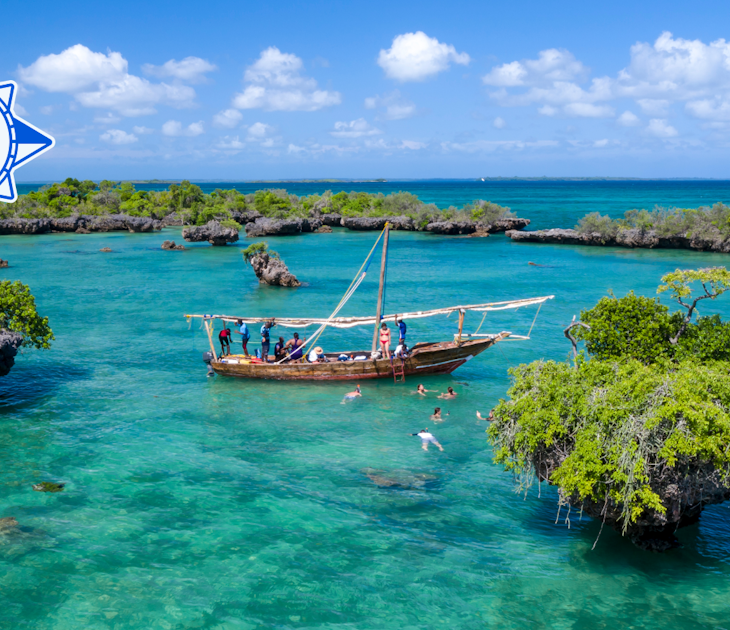
Tips & Advice
May 28, 2024 • 9 min read
From Aarhus to Zanzibar, plan your travels for July 2024 with these top places to visit.

May 24, 2024 • 4 min read
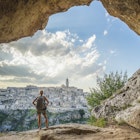
May 4, 2024 • 4 min read
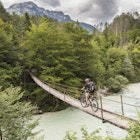
Apr 27, 2024 • 5 min read

Apr 19, 2024 • 10 min read

Apr 17, 2024 • 6 min read
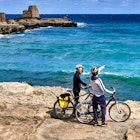
Mar 30, 2024 • 4 min read

Mar 26, 2024 • 6 min read

Mar 26, 2024 • 4 min read

Mar 21, 2024 • 6 min read
Best Time to Visit
Weather & Climate
Best Destinations
Top Cities to Visit
Must-Try Foods
Two-Week Itinerary
Things to Do
Best Beaches
Best Museums
Dolomites Guide
Where to Go Hiking
Where to Go Skiing
Italy Guide: Planning Your Trip
:max_bytes(150000):strip_icc():format(webp)/ElizabethHeath-Headshot-horiz-e7525e97616245958bf3d94e8db7f119.png)
Italy is one of the most fabulous destinations in the world and ranks high on most travelers' must-see lists. As the seat of the once-mighty Roman Empire, home of the Catholic Church, and the birthplace of the Renaissance, its historical, artistic, and cultural treasures are almost too numerous to count (in fact, it boasts 55 UNESCO World Heritage Sites ). Italy is also a spectacularly beautiful country, with dazzling monument-filled cities, charming small towns, plus gorgeous beaches and mountain ranges. And the food? Don't even get us started. Let's just say there's a reason Italian cuisine is celebrated the world over.
This Italy trip-planning guide is a starting point for organizing your trip of a lifetime, deciding where to go and what to see, how long to stay and most importantly—what to eat!
Planning Your Trip
- Best Time to Visit : The best months to visit Italy depend on your preferences as a traveler. Springtime and early summer—April, May, and June—sees gorgeous weather, mostly mild temperatures and crowds that range from moderate to dense. Summer is the most crowded season, and it can be stiflingly hot in most parts of the country. September and October are still packed, but the weather is more pleasant. Except for December, wintertime is less crowded. If you can put up with cold, rainy weather—maybe with a few sunny days thrown in—January, February, and March are the least crowded months to visit.
- Language: Italian is the first language in Italy , and in major cities, shop owners, hotel and restaurant workers generally speak at least a little bit of English, and often French and German as well. In more rural areas, away from tourist centers, you may find that very few people speak English—an Italian-English pocket dictionary or a translation app on your smartphone will come in handy. It's always helpful—and polite—to be able to say a few words and phrases in Italian .
- Currency: All of Italy uses the euro , and other currencies are not accepted. Credit cards such as Visa and Mastercard are accepted everywhere, except for most street food stalls and smaller, independent merchants. It's always a good idea to have cash on hand, especially when stopping off for a caffe (coffee), buying bus, tram or Metro tickets, and at smaller stores or market stands. Note that American Express and Diners Club are less widely accepted in Italy. Be sure to confirm in advance with your hotel or restaurant if you intend to pay with these cards.
- Getting Around: Italy's cities and towns are connected by a comprehensive rail network of high-speed trains servicing major cities and slower, regional trains serving smaller destinations. Trenitalia is the national carrier and covers the entire country, while private rail company Italo serves major cities. If your trip to Italy involves mostly cities and towns on rail lines, you can quickly get around without a rental car. If you wish to spend a lot of time in the countryside, say, visiting wineries in Tuscany or hiking through the Dolomites, then a car will likely be necessary. In nearly all of Italy's major cities, tourist attractions are clustered in the centro storico , or historic center, and are within walking distance of one another. Otherwise, cities have a system of buses, subways, and often trams, all of which are inexpensive and relatively easy ways to navigate. Most smaller towns are entirely walkable.
- Travel Tip: Buy or reserve tickets in advance for those hotspot attractions you want to see. The Colosseum, the Uffizi Gallery, and Leonardo's "The Last Supper" are just a few of the sights in Italy where reservations are either required or strongly recommended. And, don't over schedule. While it's tempting to try to pack in every museum and attraction, remember that a big part of the appeal of Italy is its more relaxed, dolce vita lifestyle. Don't be so rushed that you miss out.
Patience is a virtue, especially in Italy. You may find slower restaurant service, trains that run late, and a general lack of urgency when it comes to customer service. Take a deep breath and adjust to life, Italian-style.
Things to Do in Italy
What you see and do in Italy depends mostly on how much time you have and what your interests are. When planning a trip to Italy, looking at a map of Italy's best attractions and cities is a great way to gain perspective on your travel itinerary. That way, you can make informed decisions about where you want to visit, how long you will need to explore each location, what time of year you want to travel, how you can get around from place to place most effectively, and most importantly, what you want out of your trip.
Everyone knows the three most significant destinations in Italy—Rome, Venice, and Florence—but one of the biggest mistakes travelers make is to try to see this triumvirate in 10 days. While you can certainly travel to each of them within 10 days, you won't get to experience any of the depth of these diverse and interesting places. If you have just a short time in each city, a half-day walking tour is a great way to cover a lot of ground.
To help you start forming your itinerary, here's a brief list of some of the top destinations and activities in Italy:
- Rome : The capital of Italy is the home of the Colosseum, the Pantheon, the Trevi Fountain, Vatican City, including St. Peter's Basilica and the Vatican Museums, and so, so much more.
- Florence : Michelangelo's David, the treasures of the Uffizi Gallery, Ponte Vecchio bridge, shopping for leather goods at San Lorenzo Market.
- Venice : A gondola ride on the Grand Canal, the glory of St. Mark's Square and Basilica, getting lost, and seeing the smaller Venetian islands.
- Naples : Art, archaeology, history, and Baroque churches, plus fantastic street food and proximity to Pompeii, Capri, and the Amalfi Coast.
- Tuscany : Italy's most famous region, known for red wine, rolling hills, and picturesque cities and towns; home to Siena, Lucca, Pisa, and Florence.
- Umbria : The hill towns of Orvieto, Perugia, and Spoleto, plus regional wines and hand-painted ceramics.
- The Lakes Region : Italy's northern playground, with lakes Garda, Maggiore, Como and more.
- Pompeii and the Amalfi Coast : The ruins of a city buried by Mt. Vesuvius, plus the incredible scenery and ambiance of the Amalfi Coast towns.
- Milan and Torino : Italy's fashion capital is also packed with important museums and is home to "The Last Supper," while busy Torino is an underrated European city, with museums, performing arts, and cafe culture.
- Cinque Terre and the Italian Riviera: Hiking from one lovely seaside town to the next, discovering Genoa, enjoying the beaches near San Remo, Savona, and those south of Genoa.
- Puglia : Curious Trulli dwellings, 1,000-year-old olive trees, beautiful beaches, and the "heel" of Italy.
- Emilia-Romagna : Come for the cuisine, then enjoy the great art and culture cities of Bologna, Ravenna, Modena, and Parma.
- Sicily : For Europe's most active volcano, magnificent Greek ruins and regional cuisines like caponata and cannoli .
What to Eat and Drink
Italy is, of course, famous for pasta and pizza, both of which can be found in virtually every corner of the country. These dishes, especially the kinds of pasta, will vary widely depending on the region, with each dish utilizing readily available local products. In Milan and other northern cities, you may find more polenta and risotto on the menu than pasta. At seaside areas and on Italy's islands, fresh seafood will dominate. Desserts are also regional, but tiramisu and panna cotta, a dish similar to flan, are found just about everywhere. Be sure to try some of the local cuisines wherever you are, rather than limiting yourself to familiar dishes.
Outside of your hotel's buffet, breakfast in Italy is light, consisting of an espresso ( caffe ) or cappuccino with a cornetto (breakfast pastry like a croissant), usually eaten standing up at the bar . Lunch is often the biggest meal of the day and is eaten from 1 p.m. to about 2:30 p.m. Restaurants probably won't open before 12:30 p.m. Similarly, dinner is eaten late by U.S. standards. If you show up at a restaurant at 7:30 p.m., you'll likely be the only customers, but by 8:30 or 9 p.m., the place will have filled up.
Wine in Italy is also regional, with every part of the country producing its own. House wines are usually from the region, very cheap and perfectly drinkable. In all but the priciest restaurants, you can find bottles on the wine list priced from around 15 euros. Craft beer is increasingly popular in Italy, and pairs well with pizza. Aperitivo , the before-dinner drink, is an institution in Italy, and usually consists of a glass of sparkling prosecco or an Aperol Spritz, plus light snacks. Bottled water is served in restaurants, either as normale (still), frizzante (with gas), or leggermente frizzante (lightly gassed).
For a more thorough look at the art of eating in Italy, check our guide to dining out in Italy .
Where to Stay
Accommodations in Italy run the gamut from simple to luxury city hotels, rustic farm stays at agriturismi , cozy B&Bs, and private homes and apartments available through sites like Airbnb and Vrbo. If you're visiting a city like Rome, Florence or Orvieto, especially for the first time, we recommend a hotel or lodging as close to the city center as possible. Even if it costs a little more, the convenience is worth it. Renting a private apartment can be a cost-saving measure, especially for families, but you miss out on the services of a hotel. In most hotels large and small, breakfast is usually included in the price and is quite often an extensive buffet.
Agriturismo are country houses set a few miles away from major towns. They offer a bucolic countryside atmosphere and locally sourced food, often grown on-site, and many have outdoor pools. They are ideal for large groups of family and friends, though many rent individual apartments or rooms.
Getting There
Most U.S. travelers to Italy arrive at Rome's Fiumicino airport on the outskirts of the city. International flights also arrive at Milan Malpensa airport , Naples, and Venice , though with far less frequency than Rome. All airports have rental car centers, as well as train stations for connecting into their nearest city. For example in Rome, trains depart every 30 minutes for Termini Station, one of the country's major transport hubs. From there, travelers can take taxis, trams, buses or Metro to their Rome hotel, or catch one of the hundreds of daily trains connecting to all parts of Italy.
Culture and Customs
Generally speaking, travelers from the U.S. won't find Italians too different from themselves. But there is a friendliness mixed with formality here, which visitors should try to adapt to:
- Greet people with a cheerful " Buongiorno !" during the day and " Buona sera " from late afternoon onwards. Say " arrivederci " when leaving a store or restaurant.
- When dining out, remember that sharing plates is frowned upon, but you can ask for a half-portion of pasta.
- In all but the most touristy restaurants, you'll have to ask for your check, il conto —it's considered rude for the waitstaff to present the check before you ask.
- Be respectful when visiting churches, by speaking in hushed tones and observing posted dress codes.
- While shorts, t-shirts, flip-flops, and baseball caps are standard attire for visiting Americans, Italians tend to dress a bit more elegantly. Especially for evening meals, wear something a little less casual.
- Italy is a safe country with a low crime rate. But in busy areas like train stations and public squares, and even in crowded museums, keep a firm grip on your valuables.
- Don't buy contraband purses or souvenirs from unlicensed street vendors, who are selling illegally.
- Uber is illegal in most of Italy or is allowed only in a limited capacity. Taxis are inexpensive when compared to most U.S. cities.
Money Saving Tips
- Save on evening meals by heading to a pizzeria . Even in most cities, diners can enjoy a pizza and house wine or soft drinks for 15 euros per person or less.
- During the day, look for a tavola calda , a cafeteria-type eatery where you can choose from a range of already prepared items.
- If you have an apartment or at least a mini-fridge in your hotel, you can buy lunch supplies at a local grocery store.
- In most cities, museums are free on the first Sunday of the month.
- Instead of buying costly and wasteful bottled water, refill a reusable bottle at any city water fountain, where water is always safe to drink and often, refreshingly cold.
- Look for city passes, like the Roma Pass, which offers savings on museum and attraction admission, as well as transportation passes.
Want more tips? Check out our guide on how to save money on your Italian vacation .
Italian National Tourist Board . "UNESCO World Heritage Sites."
Italian National Tourist Board . "More Information."
The Top 23 Things to Do in Italy
The 15 Best Destinations in Italy
Your Trip to the Amalfi Coast: The Complete Guide
48 Hours in Florence: The Ultimate Itinerary
Your Trip to Florence: The Complete Guide
Tuscany Guide: Planning Your Trip
Top 6 Tourist Attractions in Italy
Siena Guide: Planning Your Trip
The 14 Best Day Trips from Rome
The 25 Top Attractions in Rome, Italy
Your Trip to Rome: The Complete Guide
The Most Romantic Places in Italy
Capri Italy Guide: Planning Your Visit
How to Travel From Rome to the Amalfi Coast by Train, Bus, and Car
Your Trip to Milan: The Complete Guide
Where to Go on Italy's Mediterranean Coast
Fearlessly Italy
The Ultimate Italy Travel Guide – A Local’s Guide To Traveling To Italy
Even though a popular tourist destination, when planning a trip to Italy , there are several things to keep in mind, especially if it’s your first time. Our extensive Italy travel guide will cover the most important steps to organizing the trip and all the useful information that you need to save in order to avoid surprises and know what to do if a problem arises.
From how to get to Italy, to how to get around to a detailed cost breakdown, this is a complete checklist that allows you to start planning right away.
Being a very tourist-friendly country, the planning process is pretty straightforward. But like for every trip out of your comfort zone, careful preparation will make things easier and smoother once you are here.
Apart from the necessary planning tips, our Italy travel guide will cover essential information including the important numbers you need to save, how to get to Italy, how to move around the country, and a detailed cost breakdown.
Table of Contents
Travel Guide To Italy – What To Know Before Planning Your Italy Trip
What do you need to know before traveling to Italy? Apart from basic facts like currency, how to apply for a visa, and deciding whether you should visit Northern Italy or Southern Italy , we suggest you start booking hotels and transportation in advance to find better prices and more places. This is particularly important if you are traveling in the high season.
With our Italy travel guide, we give you the tools to organize a trip on your own. But if you’d rather sit and relax and delegate all things logistics, below you will find also a choice of the best companies for top Italy tours , including Italy bike tours and Italy food tours , both complete packages and day trips.
Italy Facts
- Language: Italian plus German and French in some regions and local dialects that change depending on cities, towns, and small villages.
- Population: Around 60 million according to 2019 stats.
- Size: 331.338 km².
- Government: Republic, EU member, Schengen area.
- Currency: Euro.
- Borders: France, Switzerland, Austria, Slovenia, San Marino, Vatican.
- Regions: 20.
How To Get To Italy
The most common way to reach Italy is by far by plane. All airlines fly to Italy from all over the world, both flag carriers such as British Airways, Air France, Lufthansa, Etihad, Emirates, Qatar Airways, Air China, Air India, and low-cost airlines such as Wizz Air, RyanAir, EasyJet, Vueling.
Apart from the major international airports of Rome’s Fiumicino and Milan’s Malpensa, there are flights from other European hubs to Italian cities like Florence, Venice, Naples, Cagliari, Alghero and Olbia in Sardinia, Palermo and Catania in Sicily, Bologna and more.
Click here for the prices and to book your flight
You can reach Italy by railway both with day and night trains from several European countries such as Austria, France, Germany, and Switzerland, and with a few changes and also connections to cities in Spain and Eastern Europe.
Recently there has been a revival of night trains as they are seen as a more sustainable way of traveling by many and an alternative to airplanes. After a steady decline in the past decades, now all over Europe, long-distance rides and night trains are becoming a new favorite, like the scenic ride you can enjoy on the Paris to Switzerland train .
Booking a train trip is perfect especially for slow travelers, because you can stop in several places and also enjoy cities originally not on your bucket list.
Click here to check the timetables and book your train
By ferry/cruise
You can also reach Italy by ferry from different countries such as France, Greece and Spain. In the high season, meaning summer and close to Christmas, there certainly are more ferries and cruises, but you can book trips pretty much all year long.
Cruises have their own routes and stop in many ports of the Mediterranean allowing you to visit different cities. For example, since Turkey and Greece are very close, they are often in the same cruises with some Italian ports. So you can enjoy some Athens sightseeing or a 1 day Santorini itinerary and then hop back on the ship and head to Naples or Civitavecchia (Rome).
Some of the main ferry companies are Grimaldi, Grandi Navi Veloci (GNV), and Tirrenia. You can reach Genoa from Barcelona with Grandi Navi Veloci, and from several Greek cities, you can reach Venice, Brindisi, Ancona, and Bari with companies like Blue Star Ferries, Superfast Ferries, and Fragline Ferries.
Grimaldi and Tirrenia also connect Italy to Tunisi while Marmara Lines to Cesme in Turkey, Virtu Ferries connects Sicily to Malta and Jadrolinija connects Dubrovnik to Bari in Puglia, southern Italy.
Click here to check the prices and book your ferry
Best Time To Visit Italy
Any time is good to visit Italy, where to go in Europe with kids for a dream holiday. Each season has its own perks. Summer is usually hot everywhere, so you might prefer to visit the coast and be close to the sea or a lake, or maybe be in the mountains where the air is fresh. Summer is also the most crowded season, so you will always need to queue to enter major landmarks. Obviously, it’s also the season when the weather is more stable and you will need to pack fewer clothes.
Fall and Spring are lovely seasons to visit the cities as they are not too crowded nor too hot or cold. Both fall and spring can give you some showers, but then the nice weather comes back. Usually, fall is rainier than April or May , which are among the best months to choose if you are booking a walking holiday in Italy .
Winter is the season for skiing, so Valle d’Aosta, Lombardy, Veneto and Trentino Alto Adige are pretty busy. However, in many Italian regions , winter is quite mild and properly dressed, you can visit big cities and small towns without problems.
How To Get An Italian Visa
Italy is in the Schengen area, so if you are doing a European road trip and were granted a visa to another Schengen country, you can also visit Italy. If you are applying just for Italy, you need to check with the Italian embassy or consulate in your country to make sure what the requirements are and what documents you need to submit.
First of all, inquire if you need a visa because not all nationalities do. To find out if you do need a visa and what procedure you need to follow, answer a few easy questions on the Italy Foreign Ministry’s website . I always recommend checking with the local consulate in your country as the time it takes to issue the visa depends a lot on where you are located and also on your nationality.
How long should you stay In Italy?
The duration of your Italy trip really depends on how many holidays you have, how much you want to visit and ultimately, also on your budget.
If it’s your first trip and you really want to visit all the major cities, I suggest no less than ten days. With ten days at your disposal, you would ideally be doing a Venice-Florence-Rome itinerary with no time for day trips. If you spend two weeks in Italy , it’s more likely that you can take some day trips from the main cities or include other places such as Naples or the Cinque Terre, also very touristy.
All a different matter is if it’s not your first time in Italy and you have already visited the main destinations. This way, you can even devote a week to a single region or a few days for a city break, especially if you live in another European country a few hours plane away.
How To Get Around Italy
If you are planning a road trip, you can rent a car wherever you land in Italy. With a navigator that is now included in many rental cars or even your Google Maps app, it will be easy to find your way. Around Italy, from a region/city to another, you will likely enter high-speed highways with a toll. Sardinia is the only region without highways. Although, the navigator will tell you when you are going to a paid highway and sometimes will also give you the option to choose a toll-free route.
Something you need to pay attention to is the ZTL (Limited Traffic Zone) imposed in many cities including Rome and Florence, but also small towns like Bracciano, near Rome. If you are renting a car, make sure you pick your hotel out of the ZTL because fines are pretty high. Some day and some hours, ZTL gates are open, so you can get through, but when they are closed, only authorized vehicles can. Check out the municipality website of each city you are driving to.
To rent a car in Italy, you need to be 23 or 25, depending on the agency, and extra-EU citizens also need an international license, which you can get in your home country.
Click here to rent your car
If you’d rather not drive and visit mainly the biggest cities, traveling by train in Italy is easy and straightforward. The railway network in Italy is pretty widespread, especially going northward. Trains stop in all the big cities, most towns and also many smaller villages. If you are visiting smaller villages, chances are that you will need a car (or a tour) for the surroundings, unless you are interested in the village itself.
Traveling by train is easy also because from one city to the next, you will directly get to the historic center so ready for sightseeing. This will make it also possible to stay less in each place and still visit a lot.
Click here to check timetables and book your train
Another way to travel around Italy is by plane. You can find most cities connected through the flag carrier Alitalia but also other regional airlines such as Meridiana for Sardinia, and low-cost airlines such as Ryanair and EasyJet.
While traveling by railway is easy and can take you to many cities, if you are in the north and want to reach the south, a flight is the fastest way. Or also if you want to travel to Sardinia, you can either choose the ferry or the plane.
There are several flights every day from and to Rome Fiumicino, Milano Malpensa, and Milano Linate, being among the biggest airports. But also airports like Cagliari-Elmas, Olbia-Costa Smeralda, Palermo, Venezia and Bologna are pretty busy.
The tickets are not too expensive and it applies the general rule that by booking in advance you can find better offers and promotions. Sometimes it’s also possible to find last-minute offers and plan some detours from your original itinerary or add more places to visit.
Click here to check the prices and book your flight
This is probably the cheapest option but also a slow and, sometimes, limiting one. There are several extra-urban coaches that connect different cities and different regions. For example, you can book a bus from Rome to Sicily, but it will obviously take much longer than the plane and also the train.
Sita – www.sitabus.it (soprattutto per le tratte da Veneto, Toscana, Campania, Basilicata e Puglia), Arpa – www.arpaonline.it in Abruzzo, Sais – www.saistrasporti.it in Sicilia, Busweb – www.busweb.it, Saj – www.saj.it in Calabria, Marino – www.marinobus.it in Puglia e Basilicata, Arst in Sardegna, Sena – www.sena.it in Toscana, Autostradale – www.autostradale.it in Lombardia, Busitalia in Umbria.
Click here to check timetables and book your bus
To reach the islands you can opt for the ferry instead of the plane. Some of the companies operating the ferry routes to and from Sardinia are Tirrenia, Grimaldi, GNV and Sardinia Ferries, with Tirrenia being the one that operates the whole year.
To reach Sicily, there are also Caronte & Tourist, Liberty Lines and TTTLines. You can reach Sicily from Cagliari, Civitavecchia, Naples, Salerno, Livorno, Reggio Calabria, Genoa.
The Italian ports from where you can board to reach Sardinia Civitavecchia near Rome, Livorno, Genoa, Naples and Palermo.
How Much Does A Holiday In Italy Cost? Expenses Breakdown
Your Italy trip doesn’t have to be expensive. The overall budget depends on many factors, such as the season, the places you want to visit, the type of hotel you want to book and the type of restaurants you want to try.
Ideally, a holiday in Rome would be more expensive than a trip to Sardinia. But this is not always the case. For example, if in Sardinia you are aiming at a 5-star resort in the exclusive Costa Smeralda, your holiday will certainly be more expensive than booking a guest house or an apartment in Rome, even those in the city center.
Here I’m going to do a costs breakdown for a typical trip to Italy of medium budget. Choosing a higher or lower lifestyle, will make your costs go up or down.
Travel Insurance
A very popular travel insurance is World Nomads . Their rates vary depending on the options, how long is the trip, and how many people are traveling. As per some examples, for 10 days in Italy for one 30-year-old traveler, the standard coverage costs about 75$, while for a 2-week Italy trip for a family of three with a mother, father, and 4-year-old toddler, the standard coverage will be around 275$.
Transportation from the airport
This depends on where you land and where you are going from the airport. But since one of the most common airports is Rome’s Fiumicino, you can already take note of some 50/60 euro Roman taxi fare to the city, while from Ciampino is a bit cheaper, around 30 euro. The price from the local airport to Florence is less than 25 euro, while in Milan, from Malpensa airport to the city is almost 100 euro. You can also check Uber services in different Italian cities if they are more convenient than regular taxis.
Obviously, you can opt for public transportation, either train or coach, and it would be much cheaper. From Fiumicino to Roma Termini train station is 14 euro for the direct train called Leonardo Express, while if you want to get off at other minor stations, you can take the train to Ostiense that costs 8 euro and stops in stations such as Trastevere and Ostiense. Check out Omio for timetables and tickets.
Transportation around Italy
The costs of moving around in Italy vary according to your transportation choices. As mentioned above, the cheapest way to move around is by bus, but if you are short in time, this might not be ideal.
Train travel in Italy is not too expensive especially if you plan your trip, and purchase your tickets, in advance. As an example, a train ticket from Rome to Milan is about 80 euros if you buy it a couple of weeks in advance, while it can cost you some 100 euros if you purchase it the days before the journey.
The ticket from Rome to Florence costs around 40/45 euros. Sometimes you can also find offers for 25 euros. If you are interested in taking some day trips from Florence, tickets to Pisa, Siena or Lucca are all less than 10 euros. If you are going south, a trip to Naples from Rome is about 40 euro, and from Naples to reach Pompeii is around 4 euros. Prices change also depending on the season.
Renting a car is not necessarily more expensive but obviously you also need to consider the price of petrol. Check out Discover Cars for rates and promotions.
Depending on the city and on the season, your hotel rates will vary enormously. Booking in advance can make quite the difference and also choosing an apartment instead of a hotel can be much cheaper.
Cities like Florence and Venice are usually more expensive when it comes to accommodation, while smaller towns and lesser-visited regions like Marche or Basilicata offer less costly options.
To mention some examples of what we paid during our trips, in Florence , we booked a guesthouse we didn’t particularly love some half an hour walk from the historic center in May and we paid 62 euros per night for a double room. On our two-day trip to Milan , we booked and enjoyed Delle Nazioni Milan Hotel , very close to the main train station Stazione Centrale, and we paid 122 euros for two nights in June.
In Turin , we booked an apartment for 202 euros for 4 nights and we loved our stay there. Although it wasn’t in the city center, it was easy to reach by tram and the flat was comfortable and equipped with everything we needed.
When it comes to Sardinia, on the other hand, we stayed in Mamoiada, Nuoro province, for the Mamuthones festival and a B&B cost us 80 euro per night, while in Olbia in August, we paid 120 euro per night for a double room comprehensive of baby’s cot.
Apart from the city center of the major tourist destinations, especially Venice, eating in Italy is not too expensive. In average restaurants, a starter, a side dish and the dessert range around 5 to 6 euros, the first course of pasta or rice can be prices between 10 to 18 euros, while the main course is usually between 15 and 25 euros. Wines make the price go up whether you order a bottle or just a glass.
A sandwich ( panino ) in a bar or coffee shop is usually around 2 to 5 euros, a salad maximum of 10 euros. Sometimes you can also buy one of the always more popular Buddha bowls take-away for some 10 euros and have it in your hotel room.
Gelato can cost around 2 to 4 euros depending on how many scoops and what type of cone or cup you choose. High-quality artisan gelato is not more expensive than an industrial ice-cream, but the taste and experience are much different, so make sure you know what and where to buy yours.
What To Visit In Italy
Let’s face it, this is a bit tricky because there are just too many places to visit in Italy. If you have never been, you might want to visit major cities or popular areas. Some of the places to visit in Italy if it’s your first trip:
No need for an introduction here. Italy’s capital and an unmissable destination, there are so many things to do in Rome that even if you stay two weeks only here, you won’t run out of places to see. With something for everyone, in Rome, you can spend the whole day sightseeing and never have enough of it. If you are on a classic Italy tour for first-time visitors, you can easily book a Florence to Rome train to reach the capital in an hour and a half.
Explore its ancient ruins such as the Colosseum, the Roman Forum, and the Baths of Caracalla, the main sights of the Christendom in the Vatican City , famous landmarks such as Piazza Navona, the Pantheon and the Spanish Steps in the historic center, quaint neighborhoods such as Trastevere, and trendy and former working-class districts filled with colorful murals such as Ostiense and Testaccio. Obviously, don’t forget to try some of Rome’s hearty traditional dishes .
Make sure you read our article on the best places to visit near Rome if you can afford more time in the city!
The birthplace of the Renaissance, Florence is a must-see for everyone visiting Italy for the first time. Or even the second and the third. If you are into art and beauty, hardly any city can compete.
Start your Florence tour from the Santa Maria del Fiore complex and carry on to see landmarks such as Michelangelo’s David, the Uffizi Gallery, Santa Maria Novella Basilica, Palazzo Pitti, Boboli Garden and more. All without forgetting to try the traditional dishes in the best Florence restaurants .
If you have limited time and are forced to make a choice, our article will help you decide whether you should visit Rome or Florence !
They call it the most romantic city in Italy. Whether you agree or not, Venice is a must-visit. Stroll around its canals and bridges, take a gondola ride, and try the local food. If you are traveling to Italy in winter, try to see Venice Carnival, it’s a beautiful parade of posing, camera-loving masks.
Some of the places to see in Venice are San Marco Piazza and Basilica, the Doge Palace, the Bridges of Sighs and of Rialto, the Jewish Quarter, and the nearby colorful island of Burano.
Milan is often the city where international flights land so you can easily make it the first leg of your itinerary. If you don’t have much time, you can see Milan in one day , while if you can afford a longer stay, you can explore more of its landmarks, nightlife, and restaurants.
Some of the places you should see, whether you stay one or two days in Milan , are the gorgeous Gothic-style Duomo, Galleria Vittorio Emanuele, Leonardo Da Vinci’s Last Supper, Castello Sforzesco, and La Scala Opera House.
Naples and the Amalfi Coast
Famous all over the world for its landscape and dolce vita lifestyle, the Amalfi Coast, Costiera Amalfitana in Italian, never fails to impress. With places like Positano, Ravello and the same Amalfi, it attracts thousands of tourists every summer.
If you are in Campania, however, you shouldn’t miss its capital, Naples. Gorgeous and historical city, Naples is also the home town of the pizza and many other delicacies. If you are on a weight loss diet, here you will likely cheat on it.
From Naples, you can also take a day trip to see the spectacular ruins of Pompeii and the town of Sorrento on the Bay of Naples.
Cinque Terre
Always more famous and popular among tourists, the Cinque Terre of the Italian Riviera in the Liguria region is a great destination for hikers and sea lovers. Italian for Five Lands, the Cinque Terre are Vernazza, Monterosso Sul Mare, Riomaggiore, Corniglia, and Manarola.
They are picturesque towns on the Ligurian coast in La Spezia province. You can go from one to the next by hiking or by taking the frequent local train. You can either stay in one of the five towns overnight or make it a day trip from Genoa, the capital of the Liguria region.
The Alps and the Dolomites
If you like the mountain, some of the places you should visit are the Dolomites of Trentino Alto Adige or the Alps of Valle d’Aosta.
Your door to the Dolomites can be the cities of Trento and Bolzano , fantastic destinations to explore and where to spend a few days, or other towns in Trentino Alto Adige such as Bressanone and Merano.
You can reach the Dolomites also from the Veneto and Lombardy regions, while a great place to visit high peaks of the Alps is the scenic Valle d’Aosta region on the border with France. Here, you can hike and ski the gorgeous Mont Blanc, Monte Rosa, Cervino and Gran Paradiso, apart from wandering its quaint towns such as Vens.
The Islands: Sardinia and Sicily
Are you coming in summer and want to hit the beaches? What better places than the Italian islands of Sardinia and Sicily? Both islands boast stunning coastline and beautiful beaches all around. It’s the summer holiday paradise for swimming, sunbathing and breathing some fresh air compared to the inland areas far from the sea.
Both Sicily and Sardinia are not known only for their beaches. There are many towns and villages to see if you are a fan of offbeat travel, such as Cabras, Pula, and Fordongianus in Sardinia, or Taormina and Ragusa in Sicily, to name a few.
Don’t miss our guide to the most beautiful beaches in Sardinia .
What To Eat In Italy
With each region and each city boasting its own recipes, deciding what to eat in Italy really depends on where you are traveling to. From breakfast to lunch to dinner, you can experience the typical Italian dining style and try the most popular and traditional dishes in every area.
So if you are in Rome, enjoy your tonnarelli cacio e pepe, bucatini all’amatriciana or spaghetti alla carbonara. In Naples, try their delicious pizza, in Bologna tortellini or lasagna, in Turin, polenta or bagna cauda and in Florence meat-eaters will sure order the Fiorentina steak at least once in their trip.
Some of Italy’s most famous dishes?
- Pizza . No need for an introduction here. You find it all over Italy and everywhere in different ways and shapes. The round on the plate mainly for dinner, except for tourist areas or some restaurants. By the slice with the most different toppings is pretty much all over Italy and it’s a favorite street food.
- Pasta. This, too, in Italy is everywhere. Short, spaghetti, lasagna, ravioli, tortellini, fettuccine, you name it. Each region has its own shape, way to make it and sauce to season it.
- Stews. Made it using different types of meat from lamb to sheep to beef, and different herbs and seasonings. Also the stews you are likely to find them in every region. They mainly are winter dishes, but in tourist areas, you can find them also in summer.
- Pastries and sweets. Don’t even get me started here. From north to south, if you are on a diet when visiting Italy, you will have a hard time refusing a pastry at every occasion. Croissants, bombe, crostata, cakes, tiramisu, panna cotta, gelato, you name it. From breakfast to all throughout the day, you can close off every meal with a dessert.
- Soups. Made with veggies or meat, they sometimes are used as first courses or as a consommé to open the meal.
Shopping in Italy
Whether you are looking for gifts or for something for yourself to remember your trip by, there are plenty of things to buy in Italy .
While clothes and shoes might be too personal, some of the most favorite gifts to bring home to friends and family are a bottle of good wine, some jewelry, accessories like bags (ask for Pollini or Coccinelle), or a piece of local handicraft which can ceramic, glass, or textile.
Some nice and much-appreciated gifts certainly are to be found in the food department. You won’t get it wrong if you buy artisan chocolate, traditional pastries, good-quality Italian pasta, or a good pasta sauce.
Italy tour packages and city day tours
While our Italy travel guide gives you plenty of tools to organize a trip your own, if you want your holiday to be just relaxing and free from all the planning hassle, here are some tour companies and websites providing great expeditions and day trips.
G Adventures
G Adventures organizes 2-week or 10-day tours to Italy striving to give an in-depth experience of the country and its society. With G Adventures, you can either book a classic tour to all the major destinations or some more location-specific trips.
Intrepid Travel
With small group tours, Intrepid Travel promises “real-life experiences”. Their tours go from 14 to as little as 4 days and cover a different range of places and activities such as a retreat in Veneto, a trip to the south from Rome to the Amalfi Coast
Take Walks – Former Walks of Italy
Take Walks is one of my favorites, I took many tours with them and all delivered plenty. They don’t organize full packages around Italy but only day tours or themed tours lasting a few hours in different cities such as Rome , Florence , Venice , and more.
With Take Walks, you can join different types of tours, from cooking classes to day trips to cultural tours to the most important landmarks of a city.
Get Your Guide
Get Your Guide (GYG) is not exactly a tour company but a website where you can book a tour from many different companies and agencies. This is why you will find a huge variety of experiences as well as ticket sales and taxi transfers.
TourRadar is similar to GYG with the difference that they feature companies offering full-package tours so trips of 2 weeks, ten days, one week, or even a month.
Useful sentences when you travel to Italy
No Italy travel guide is complete without some useful expressions you might need in Italy, especially in non-touristy areas. Here are some to remember:
- Buongiorno – Good morning
- Buonasera – Good evening
- Buonanotte – Goodnight
- Arrivederci – Goodbye
- Grazie – Thank you
- Sì/No – Yes/No
- Ciao – Hi
Check out our guide to greetings in Italian
Daily-use phrases
- Che ora è? – What time is it?
- Come stai? (informal)/Come sta? (formal) – How are you?
- Scusa/scusi/mi dispiace – I’m sorry
- Non lo so – I don’t know
- Permesso – Excuse me
Eating/At the restaurant
- Colazione – Breakfast
- Pranzo – Lunch
- Cena – Dinner
- Ristorante – Restaurant
- Forno, fornaio – Bakery
- Pasticceria – Pastry shop
- Sono vegetariano/vegano – I’m vegetarian/vegan
- Non mangio carne – I don’t eat meat
- Sono intollerante al glutine – I’m gluten-intolerant
- Sono allergico a X – I’m allergic to [whatever ingredient/food]
- Posso avere il menu per favore? – Can I have the menu, please?
- Posso avere il conto per favore? – Can I have the bill, please?
- Mancia – Tip
- Posso avere un bicchiere d’acqua per favore? – Can I have a glass of water, please?
- Liscia/Gasata – Still/Sparkling
- Dov’è il bagno? – Where is the toilet?
Don’t miss out guide to the most common Italian words for foods and drinks .
- Che strada devo prendere per raggiungere X? – How do I get to X?
- Dritto – Straight
- Destra – Right
- Sinistra – Left
- Macchina – Car
- Bici, bicicletta – Bike
- Treno – Train
- Aereo – Airplane
- Metro – Metro, subway
- Parcheggio – Parking lot
- Solo andata – Single ticket
- Andata e ritorno – Return ticket
- Dov’è il rifornitore di benzina più vicino? – Where is the closest petrol station?
- Dov’è la stazione ferroviaria/dei treni? – Where is the train station?
- Binario – Platform
- Dov’è la stazione degli autobus? – Where is the bus station?
- Questo treno/autobus ferma a X? – Does this train/bus stop at [your destination]?
- Biglietto – Ticket
- Bancomat – ATM
- Non funziona – It’s broken, it doesn’t work
- Polizia/Carabinieri – Police
- Parla inglese? – Can you speak English?
- Mi può aiutare per favore? – Can you help me, please?
- Albergo, hotel – Hotel
- Camera singola/Camera matrimoniale/Camera doppia con due letti – Single room/Double room/Twin room
- Bagaglio, valigia – Luggage, suitcase
- Contanti – Cash
- Bancomat – Debit card
- Carta di credito – Credit card
- Caro, costoso – Expensive
- Economico – Cheap
- Mercato, supermercato, negozio – Market, supermarket, shop
- Edicola – Newsagency, kiosk
- Vorrei, sto cercando – I would like, I’m looking for
- Quando costa? – How much is it?
- Ospedale – Hospital
- Pronto Soccorso – ER
- Farmacia – Pharmacy
- Febbre – Fever
- Vertigini – Dizziness
- Nausea, vomitare – Nausea, vomiting
- Diarrea – Diarrhea
- Dolore – Pain
- Ferita – Injury
- Infiammato – Inflamed/inflammation
- Bruciore di stomaco – Heartburn
- Gastroenterite – Stomach flu
- Medico, dottore – Doctor
- Pediatra – Pediatrician
- Dentista – Dentist
Important numbers to know in Italy
Here are some of the most important Italian emergency numbers :
- Police: 113
- Carabinieri: 112
- Ambulance – Health emergency: 118
- Firefighters: 115
- Street assistance – ACI: 116
- Guardia di Finanza: 117
- Viaggiare informati – information on street traffic: 1518
Do you need to book hotels and restaurants? Learn everything about the days of the week in Italian !
WANT TO READ IT LATER? PIN IT TO YOUR BOARD!
Leave a Comment Cancel reply
Save my name, email, and website in this browser for the next time I comment.

Italia. Open to meraviglia.

At the court of Frederick II of Swabia

Ostia: discovering the sea of Rome

The Gran Sasso and the Barony of Carapelle
Landscapes that will take your breath away, rich history, and delicious food, your trip to italy will be nothing short of unforgettable. , unmissable sites.
- UNESCO sites
- Thermal baths
Food and wine

The best open-air cinemas to watch films during the summer and live the dream
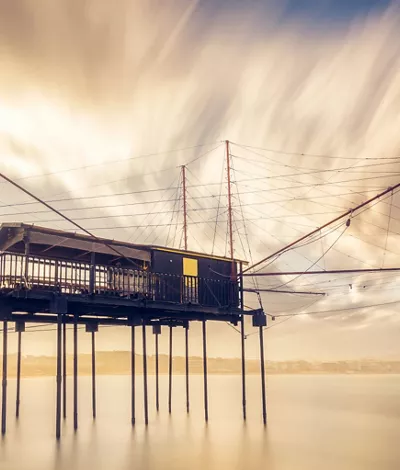
In Abruzzo, along the Costa dei Trabocchi

Between past and present: a tour of Bergamo and Brescia's mills

Isola dei Conigli: the world’s most beautiful beach on Lampedusa

Tour de France 2024

Emilia-Romaña: unas vacaciones inolvidables volando con las alas del viento, planeando sobre las colinas, los pueblos y los sabores de los Apeninos
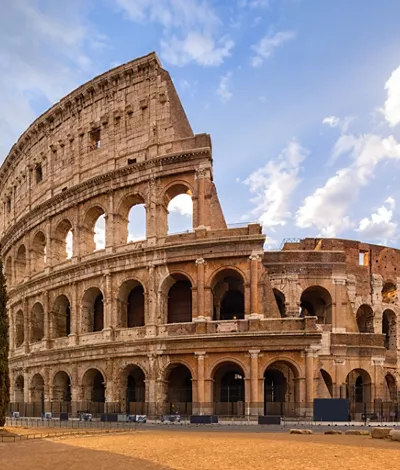
The best trails in UNESCO heritage sites in Italy: 10,000 steps amid nature and beauty

The 15 Italian UNESCO Intangible Cultural Heritage excellences
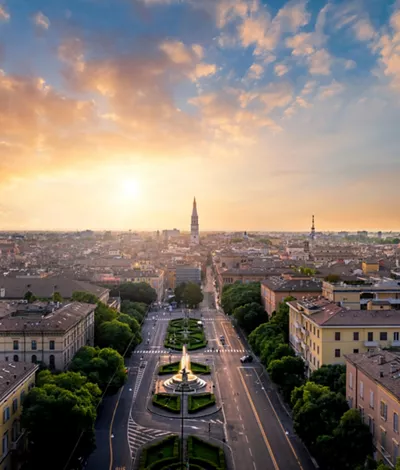
Artistic masterpieces and gastronomic marvels in Modena
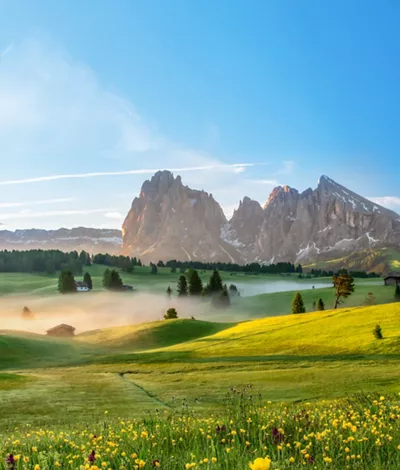
The Dolomites: the most beautiful architectural work in the world
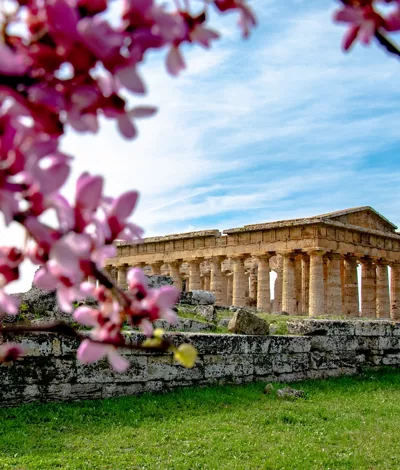
Cilento, between unspoilt beaches, wild nature and charming hamlets
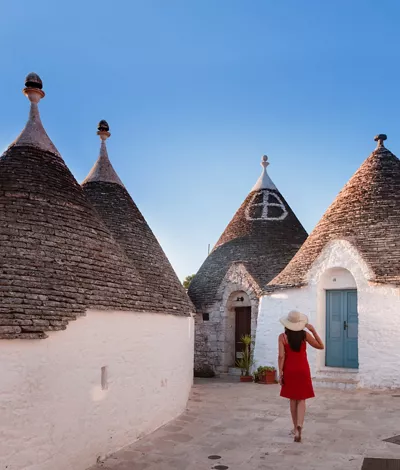
Alberobello, the Trulli capital, a fairy tale experience
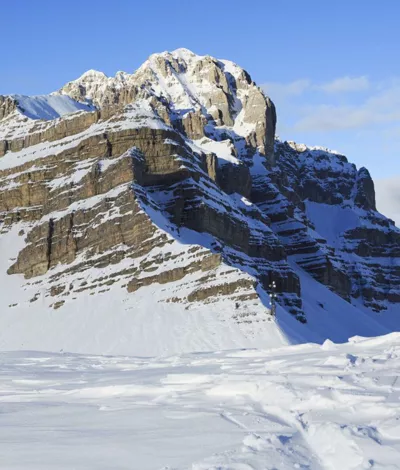
Emilia-Romagna
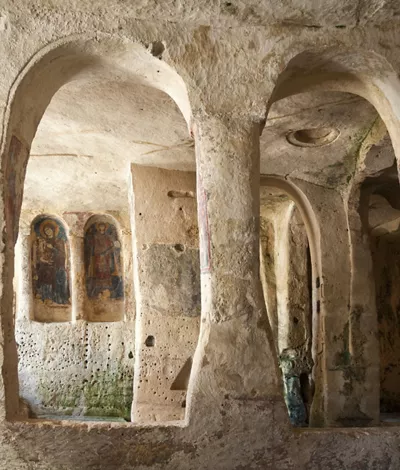
Small and proud, with a focus on sustainability. Here are the most charming rural villages to visit in Italy

Cycling around nature and historic hamlets in Abruzzo
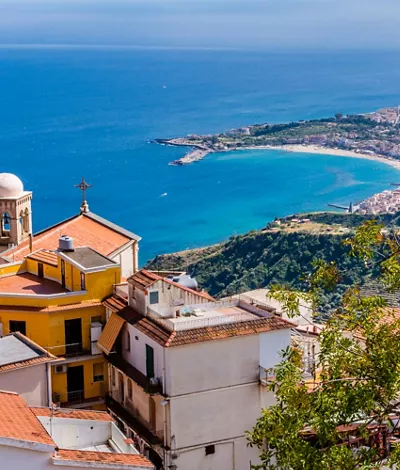
Tax breaks for moving to the charming villages of central and southern Italy
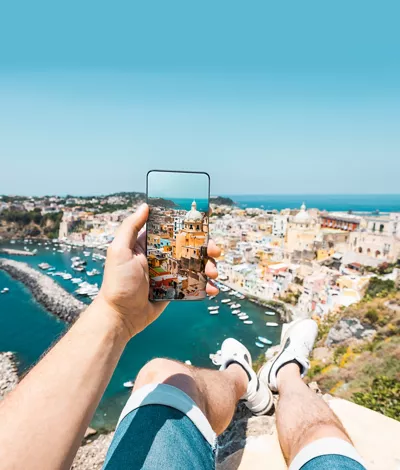
Seaside Villages
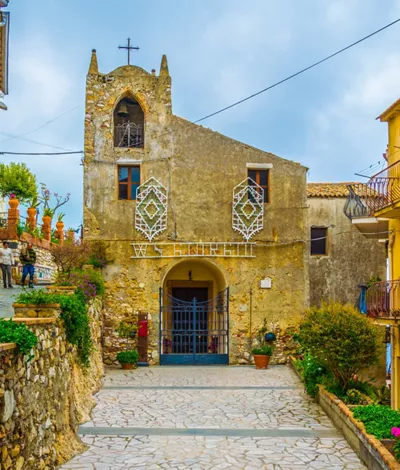
Castelmola, a window on the sea a few steps from Taormina
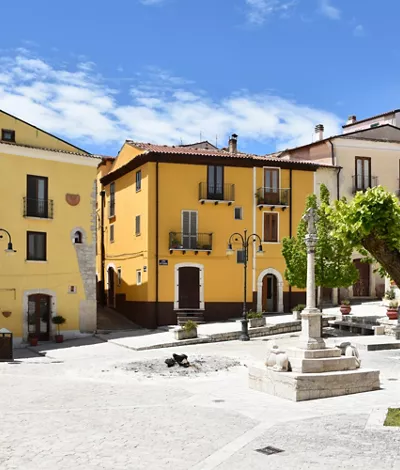
Frosolone: one of the most beautiful Italian villages, in Molise

3 of the best wellness itineraries in Emilia Romagna
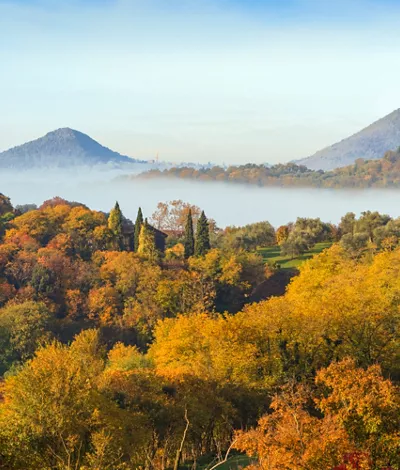
A wellness weekend at the Euganean Spas
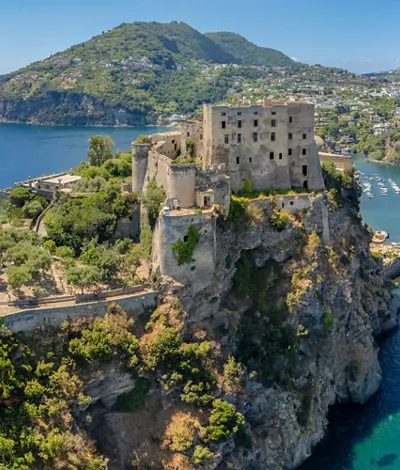
Ischia, the island of wellbeing among thermal gardens and natural springs

Outdoor spas in Lazio, oases of relaxation and wellness to suit all tastes
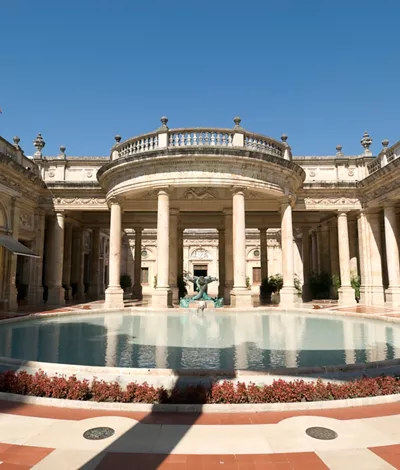
Montecatini Terme, historical thermal centre in Tuscany
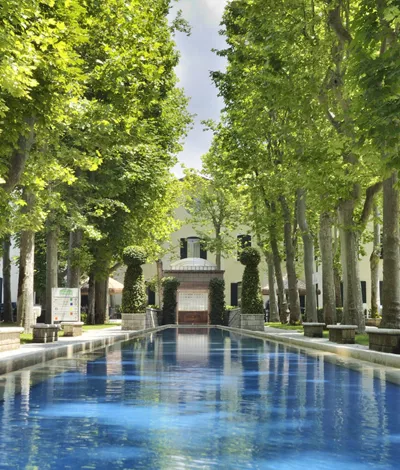
Terme di Caramanico, a haven of wellness and relaxation

Restourants
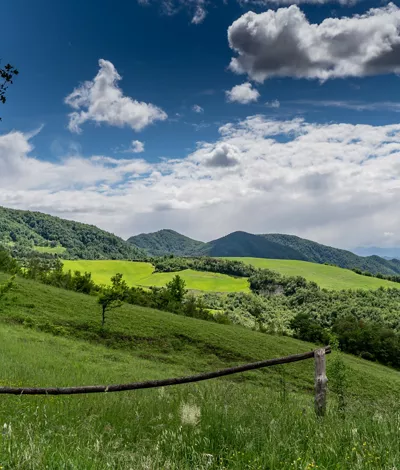
Emilia-Romagna: a journey into the heart of the Food Valley

Pesto Genovese

In Palermo, his majesty the bread with spleen

Lazio and the majestic Roman artichoke PGI
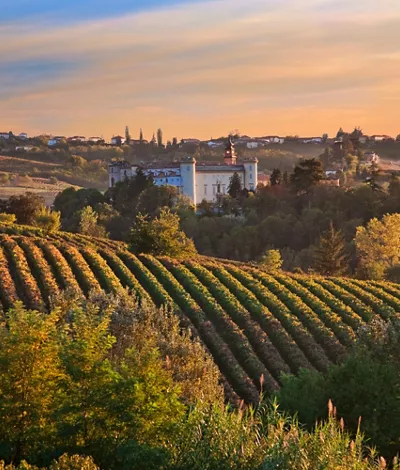
Piedmont, an extraordinary laboratory of products, all to be tasted, and to be drunk.

Festa del Redentore a Venezia 2024

Pre-Raphaelites: Modern Renaissance

Arezzo Antiques Fair

2024 MONZA FORMULA 1 GRAND PRIX

Golden Gala

Sherwood Festival

Lucca Summer Festival

FIM Superbike World Championship

Catania Book Festival

Van Gogh in Trieste

Sonic Park Festival Stupinigi

Festa di Santa Rosalia

Vigneti aperti 2024
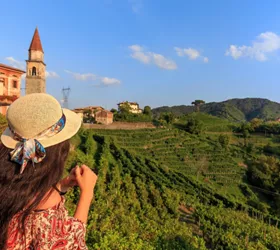
Primavera del Conegliano Valdobbiadene Prosecco DOCG

Palio di Siena

The Palio of Asti
Discover italy.

Aosta Valley
The Aosta Valley is a paradise for visitors seeking outdoor experiences in nature while exploring history and traditions The smallest region in Italy, dotted with the highest peaks in the Alps, it is the ideal destination for anyone who enjoys winter sports and high-altitude walks. Its green valleys and fairy-tale castles make the Aosta Valley an enchanting place to experience all year round.

Piedmont is sure to enchant you with its mountains, hills, typical flavours and uniquely elegant cities An extraordinary heritage of art and history, culture and nature, characterises Piedmont, a region with a thousand faces, one more interesting than the other: cities of rare elegance, mountains that lend themselves to splendid skiing or walking, fascinating villages, hills that are among the best known in the world for their extraordinary wine production.

Lombardy: a dynamic land immersed in the present and reaching toward the future, but with an extraordinary heritage of art and nature Lombardy is a region in the north of Italy known for its industry and finance, of course, but also for its art and extraordinary landscapes, starting with the picturesque lakes and its mountains, Valcamonica and Valtellina in primis. Capital and symbolic city, Milan represents the industrious heart that goes hand in hand with other cities with a vibrant spirit.

Trentino is sure to amaze you with its immense natural heritage, the spectacular splendour of the Dolomites and fascinating sites steeped in history Discover Trentino’s culture of slow travel, taking the time to savour every corner among nature and cultural trails and educational farms. You will find hundreds of hotels offering wellness centres for truly relaxing holidays for the whole family in some of Italy's most beautiful villages, set in unique landscapes.

South Tyrol
Alto Adige is a dream place to discover all year round amidst green valleys and snow-capped peaks Combine the relaxation of spa treatments with the pleasure of fun in the snow for a real wellness boost amidst Alpine lakes, beautiful villages and state-of-the-art ski facilities suitable for all ages. All this and more in the majestic scenery of the Dolomites, a UNESCO World Heritage site in Alto Adige.

Veneto, a region of wonder, with cities of art of undisputed beauty, as well as the most pristine nature The beauty of Lake Garda, the charm of the Dolomites, the sea of Jesolo, the hills covered with vineyards and the relaxing thermal baths, on top of an immense artistic and historical heritage, elegant cities such as Venice and Verona, quaint villages and breathtaking landscapes. Veneto is all this and much more.

Friuli-Venezia Giulia
Friuli-Venezia Giulia Friuli Venezia Giulia: a treasure chest nestled between sea and mountains A border region sandwiched between the Friulian Dolomites and the Upper Adriatic, blessed with an immense cultural heritage resulting from the influence of different cultures and peoples, cosmopolitan and modern, Friuli Venezia Giulia will also seduce you with its temptations of relaxation, sport and fun.

Tucked-away villages, secret little beaches and superb nature: how enchanting Liguria is! Liguria is a wonderful strip of land enclosed between the sea and the mountains, with pastel-coloured houses and breathtaking views. With lush unspoilt nature, many small towns to discover and an incomparable culinary tradition, it enraptures the eye and the heart.

Emilia Romagna, a region of unrivalled charm, with immense artistic beauty and unparalleled hospitality Emilia Romagna with its Riviera Romagnola offers beach tourism that attracts families and young people to its shores every summer. Rich in sites of historical and cultural interest, this region boasts a world-renowned wine and food tradition. Skilful hospitality does the rest, making Emilia Romagna an ideal holiday destination in every season. Video credits: Oliver Astrologo

Tuscany will win you over with its unique landscapes, cities of art, thousand-year-old history and fantastic food Tuscany’s magical atmosphere evolves day by day as you stroll around the cities of art, cycle in the parks, enjoy the sea or savour its typical products, in a region with a one-of-a-kind natural, cultural and historical heritage that has fascinated visitors for centuries.

From Assisi to Perugia, via Gubbio, Lake Trasimeno and Marmore Falls: Umbria is a truly enchanting tourist destination Peaks covered in lush forests and large valleys outlined by rivers, lakes and waterfalls; sorrounded by villages and castles, crossed by paths steeped in history, art and culture, in a natural environment that helps to restore the body and soul: Umbria, the Green Heart of Italy, is all this and much more.

Le Marche, a plunge into the history, art and architecture of a region with the scent of the sea and redolent of traditions and hospitality A great variety of landscapes and an infinite range of colours that make the area's natural beauty incomparable, plus an artistic heritage that fears no comparison: this is how the Marches, with an area of no more than 10,000 square kilometres, will captivate you forever.

Sardinia: a journey to the island of the emerald sea, nuraghi, unspoilt nature and millenary traditions Crystal-clear waters, beaches of soft, white sand, granite rocks framed by wild, fragrant Mediterranean scrub: welcome to Sardinia, an island of a thousand contrasts that will also seduce you with its unique archaeological heritage and its people's innate sense of hospitality.

Lazio is not only Rome: landscapes and monuments of Lazio Rome, the capital of Italy and a unique open-air museum in the world, is enough to make Lazio one of the most beautiful and interesting regions. Even in terms of landscape, it boasts an area of great impact and remarkable variety, with its long coastline, beautiful hills and Apennine mountains. A destination to fall in love with.

Abruzzo, a journey through history between sea, mountains, flavours and unspoilt nature in parks and protected areas A region in central Italy, Abruzzo has two souls and one heart. Predominantly mountainous and hilly, it overlooks a beautiful stretch of the Adriatic Sea. Here, you will find the highest peaks of the Apennines, such as the Gran Sasso and the Majella massif, as well as the only Apennine glacier, but also some of the most popular beaches.

Campania offers landscapes, history, culture and a gastronomic tradition that the whole world envies A consistently mild climate, lush nature framing breathtaking landscapes, unspoilt villages and fairy-tale coastlines: this is Campania, a region that sums up centuries of cultures, between West and East, in a single Mediterranean jewel known for its unparalleled hospitality. A destination for the soul, the eyes and the palate.

Molise, a tiny region with grandiose landscapes: come and discover its history and culinary tradition Molise is a region steeped in history, characterised by numerous tasty food and wine delicacies, but also by rich nature reserves and villages that seem crystallised in history. A destination yet to be discovered, amid marvellous seashores and breathtaking high cliffs

Apulia: the sunny region between two seas and warm hospitality in places rich in history Located in the heart of the Mediterranean, it is a magical combination of artefacts, history, art and unspoilt nature, amidst beautiful coastlines and picture-postcard landscapes. This is Puglia, a region of golden beaches and crystal-clear waters, intense flavours and fascinating destinations: Castel del Monte, the trulli, the islands passing through towns kissed by a unique and unforgettable light.

Basilicata, a region of ancient origins, suspended between two seas and with mountains of great beauty Basilicata is a region where the passage of man has left its mark since prehistoric times. With the ancient name of “Lucania”, it is enriched by an incredible artistic heritage. Not to mention its never-boring panorama, which ranges from the Lucanian Dolomites to the Pollino Park, passing through two seas.

Calabria is the region of crystal-clear sea, the Riace Bronzes, Reggio Calabria and Capo Vaticano, a captivating mix of history and beauty Calabria, also known as the tip of the Italian boot, is a region in Southern Italy characterised by the incredible diversity of its landscapes, with the proximity of mountains to a splendid sea that attracts tourists from all over the world.

A dive into Sicily, where a sea of art, culture and nature will seduce you and become eternal love A predominantly hilly and mountainous area, but one that wins the hearts of tourists from all over the world with its wonderful sea and rich cities with a charm all their own. Sicily is a picture-postcard island characterised by the indelible marks of the people who have lived there and made it unique, amidst artistic and cultural testimonies of enormous value.
The source of inspiration for your Italian adventures
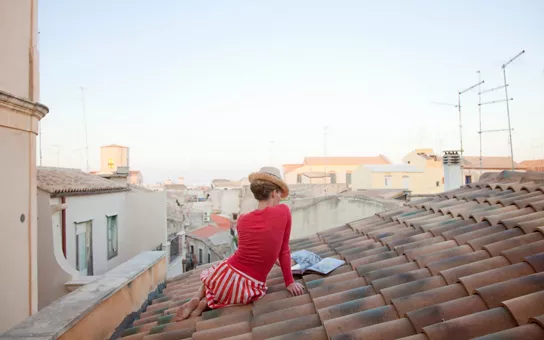
6 unmissable destinations in Italy featured in famous novels

Backpack, trolley suitcase or holdall: how to pack the perfect bag and make sure it’s green
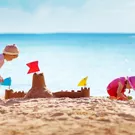
At the seaside with kids: 15 beaches for families in Italy
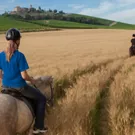
Horse-riding and team building immersed in nature; networking and re-grouping just a stone's throw from the city
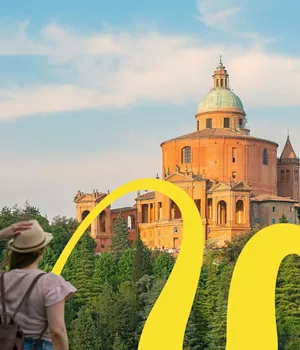
Rediscover your Italian roots

Italian cuisine around the world: a treasure that knows no boundaries
Create your ideal journey.
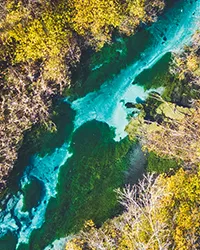
Art and culture

Relax and wellness
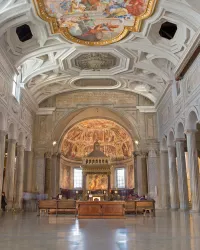
Spirituality

Shopping & Markets
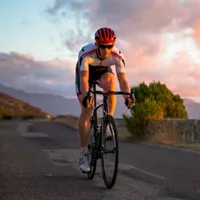
Cycling Tourism
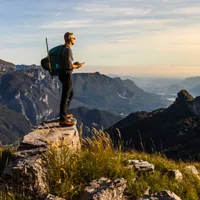
Social Wall
Italy seen by you.
Join the @italiait community and post your experiences

Continue living like an Italian
Subscribe to the Newsletter so as not to miss places, events and experiences for experiencing the best side of Italy: the authentic one.
Keep up to date
Would you like to learn about the most authentic experiences to be had in Italy, stay up to date on the most interesting events, discover our special offers and receive lots of insider hints and tips?
Save your favorite places
Create an account or log in to save your wishlist
Do you already have an account? Sign in
The Insider’s Guide to Traveling Italy
The best of each region—in the most romantic country on earth.
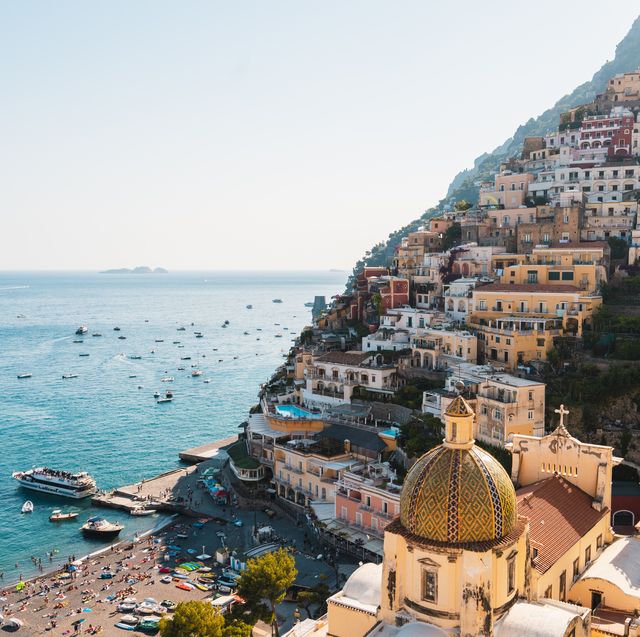
Every product on this page was chosen by a Harper's BAZAAR editor. We may earn commission on some of the items you choose to buy.
For centuries, Italy was the preferred destination for poetically-minded nobles from across northern Europe. The “grand tour” was an exercise in communing with the ancient Roman world at a time when it was considered the height of culture to contemplate its romantically crumbling relics and vine-clad temples. But these “grand trippers” gave little thought to Italy beyond its artifacts and ghosts. For them, Italy—as a living, breathing culture—was an afterthought.
But today, in-the-know travelers seek deeper pleasures than the (still beguiling) ruins of ancient Rome. Italy is a country of 20 provinces, each of them proudly distinct, offering their own unique culinary, architectural, art, history, fashion, sightseeing, and cultural scenes. Ahead, our guide to the very best of Italy, divided by region. Buon viaggio!
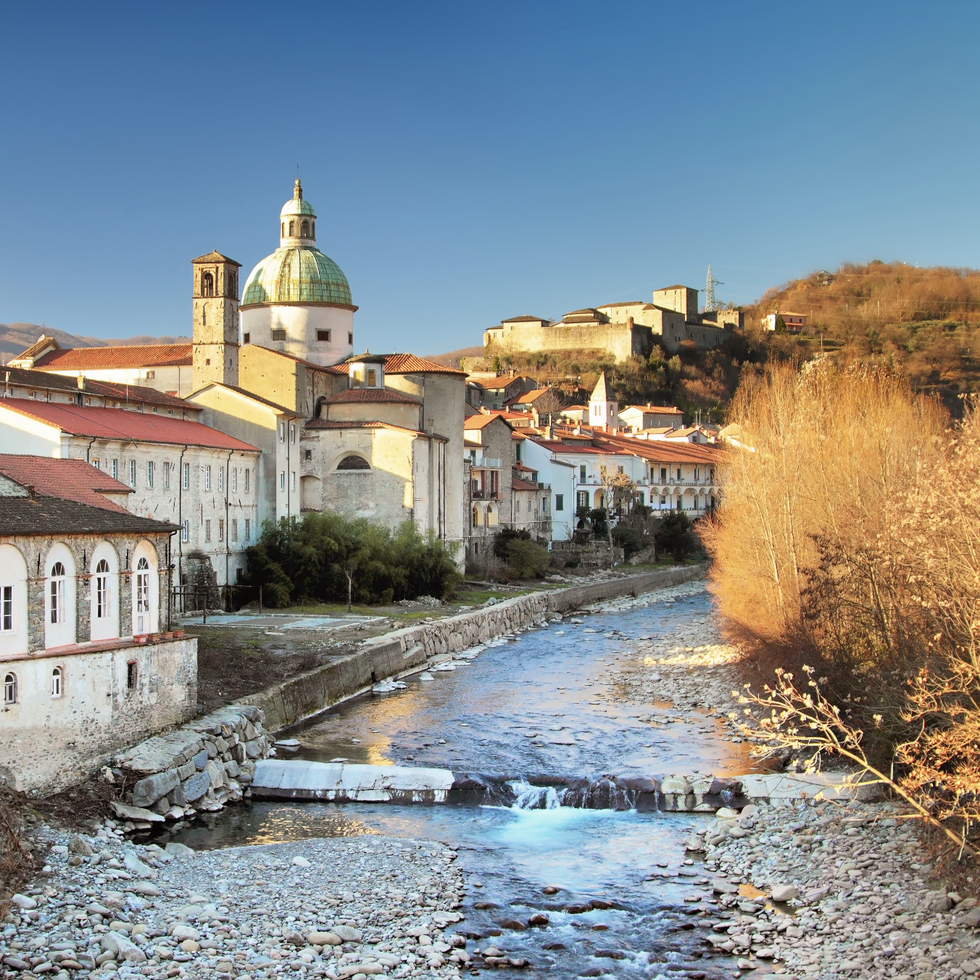
Head away from the Adriatic, and you enter a landscape of hills and forests. This is Basilicata, a hidden territory bordering the better-known environs of Calabria and Puglia. Secrecy is paramount here: the hillside towns are dotted with warren-like cave dwellings, many of which go back thousands of years. Of them, Matera is the most famous (and most spectacular). Francis Ford Coppola even debuted his own distinct hotel in this compellingly concealed region: Palazzo Margherita .
Go for the ancient Greek mythology; stay for the local charm. The beaches of this region are well known—and you won’t want to miss them—but there are countless little fishing villages to explore too. Of the list, we recommend Chianalea di Scilla; it’s here that you’ll get a true, authentic taste of the Italian south, right at the tip of the boot, with boats bobbing in the harbor and fishermen tending their nets.

As far as hotels, we love Villa Paola , a truly gorgeous sea-facing setup with minimal yet sublime decor. A reminder: The food here leans toward the excitingly spicy (thanks to the region’s famous chiles), and you’ll not be short of places to dine. Scilla, a charming fishing village facing the island of Sicily by a hair’s breadth, is a particular gem.
Best known for the Amalfi Coast and its iconic “Path of the Gods,” the region of Campania is a photographer’s dream. A swell of romantically crumbling cliffs decorated with pastel-painted towns and threaded with beguiling alleyways, this is the Italy you’ve seen in films and dreamed about.
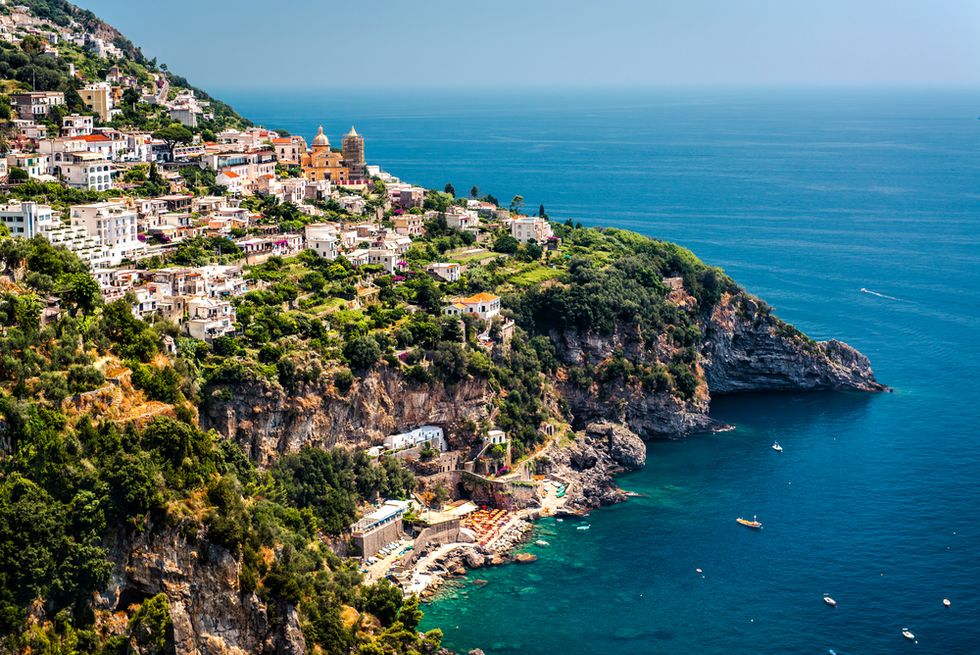
Praiano is our go-to; this sun-drenched stretch of western Italy is sublime not just for the sunsets but for its proximity to the beachside bars in Vivaro and Fioriere. You’d be missing out if you didn’t post up at heavenly Casa Angelina , whose crisp decor and serene views will leave you floating on cloud nine. To eat, you’ll want to set yourself up at the low-key, laid-back Da Armandino in Praiano. Ori Kafri, CEO and founder of J.K. Place Hotels , speaks warmly of Capri (home to namesake J.K. Place Capri )—an island located just off the Bay of Naples. Here is Da Gelsomina , a restaurant of simple but delicious virtue. “It’s a very simple, family-run place that produces their own wine,” Kafri explains. Enjoy it “with wonderful handmade ravioli. To get there, they come to pick you up in a little car to take you to a narrow street where the restaurant is located. It has a spectacular view of the sea.”
EMILIA-ROMAGNA
Home to a staggering eight UNESCO World Heritage Sites, Ravenna is hardly under the radar—but some places are famous for a reason. Combine the historical city with a killer food scene and a stunning classical music festival, and you get a sense of classic Italia as you switch your phone off and forget emails for a few days.
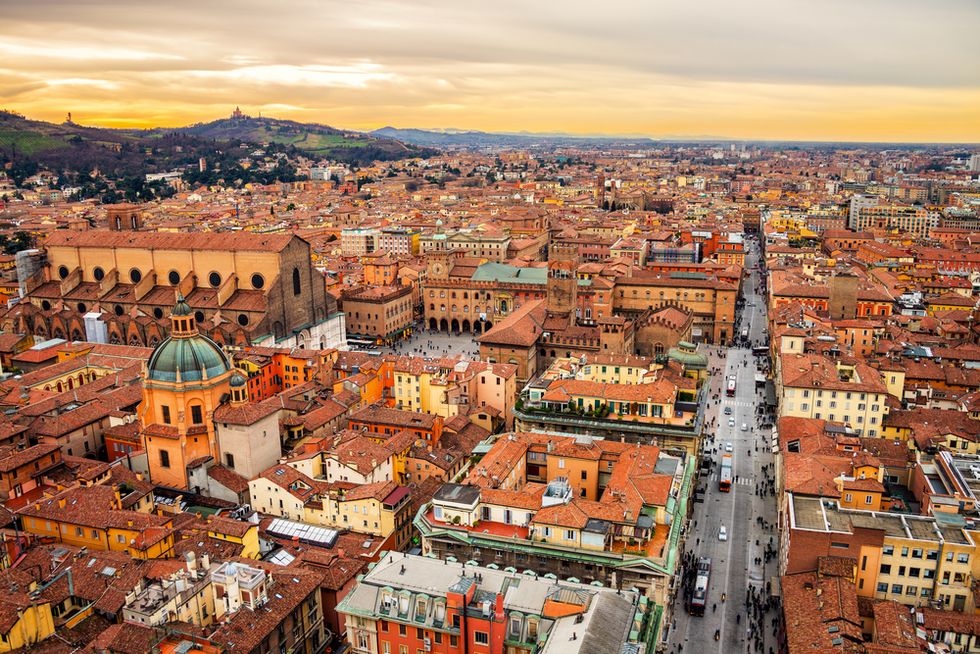
In Bologna, you'll want to stay at the Grand Hotel Majestic , which is, as its name suggests, utterly regal in feel. Think classic Italian style, exquisite views across the city, rooms furnished with antiques, enormous beds, marble bathrooms—the works. Located centrally, it’s just a stone’s throw from Piazza Maggiore and Due Torri, making it an ideal base for a culture-packed weekend.
FRIULI VENEZIA GIULIA
This little-known gem is located in the very northeast of Italy. Its regional capital is Trieste, a favored haunt for artists and musicians throughout the 20th century—James Joyce among them. Give its proximity to central and eastern Europe, its culture and character are often informed by those of its neighbors, and you’ll feel that through the wine, food, and architecture. The Carnic Alps—black-stoned, snow-crusted—jut up mightily from forests of dense green pine. For bon vivants, there’s the exceptional Collio wine route. For the historically minded, there’s the UNESCO-protected Aquileia , with its sublime basilica. Until the 18th century, this was the very heart of Christianity in central Europe, and its thousand-year-old ruins and relics are a sight to behold.
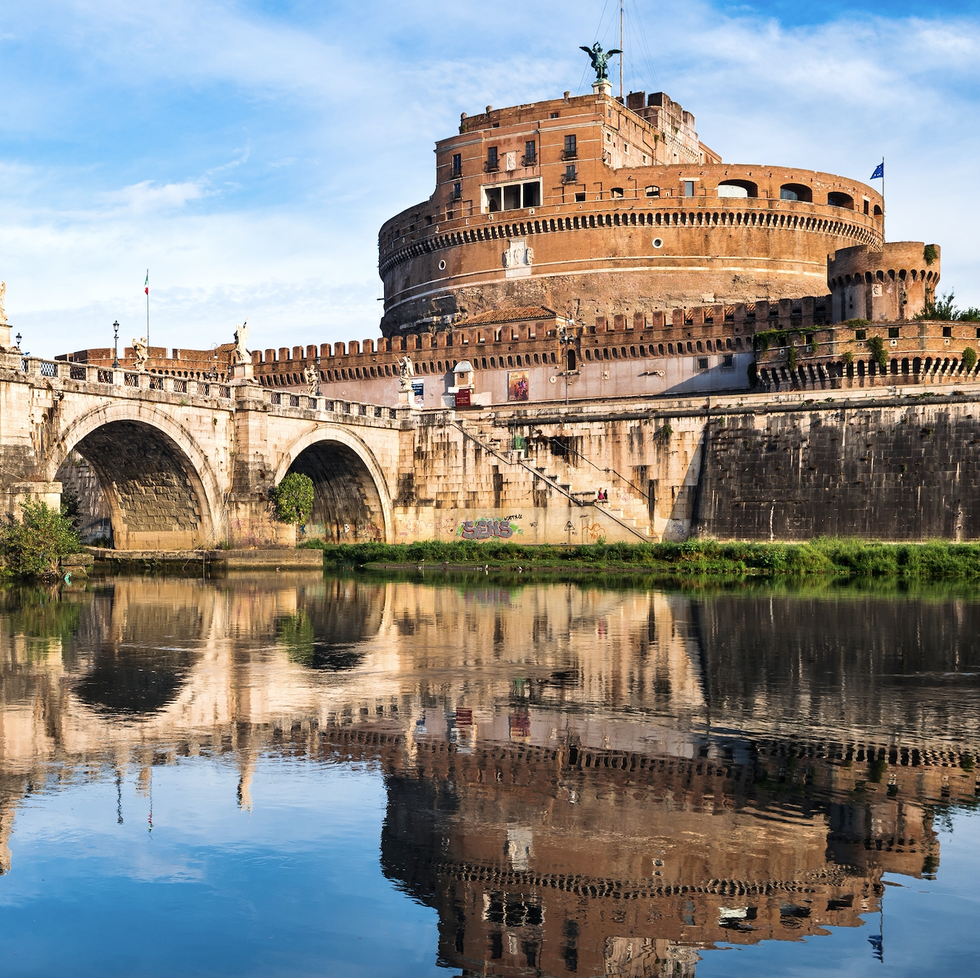
All roads—so they say—lead to Rome. The timeless city moves at its own pace, but it’s truly bursting with life (after all, few would forget the bawdy, thrilling antics of Federico Fellini’s Roma of 1972). To sleep, try Hotel de la Ville from Rocco Forte, a vibrant and modernist refurbishment of an 18-century palazzo located at the very top of the Spanish Steps. It’s at the center of everything and is the best possible place from which to feel the pulse of the city — the epitome of Roman romance and contemporary cool (in that way, it’s a lot like Fellini).
But where to eat? Trust us, it’s a long list. Legendary architect and designer Achille Salvagni recommends “the Market at Piazza Campo de’Fiori, where the food is Italian, local, and incredibly fresh. Restaurant Il Sanlorenzo should be on your list for the absolute best seafood and traditional Roman fare. Dinner at La Trattoria al Moro is a must; they serve earthy and beautiful Italian cuisine.” Salvagni adds, “I also have a soft spot for the Bakery Roscioli on the piazza, where I cannot help but purchase the many types of breads, cakes, and desserts they bake daily.”
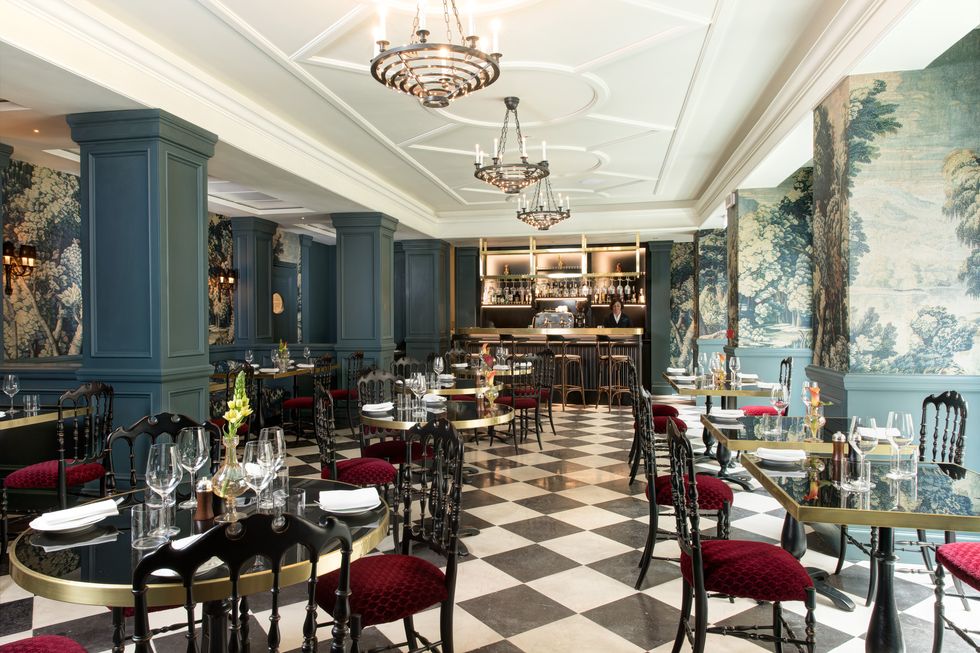
Also not to miss: Trattoria da Danilo (for the cacio e pepe ), Retrobottega (for the moody laboratory vibes), Luciano Cucina Italiana (for its truly unforgettable pasta), and Le Mani in Pasta (for its classic Italian casualness). To walk it off and get inspired, Salvagni recommends, “a visit to Capucci on Via della Fontanella di Borghese. Mr. Capucci is the most famous Roman designer, and I have always been awestruck by his creations. His work is always a great source of inspiration, and I admire the boldness of his vision.”
Liguria, home to the famed Cinque Terre, is typified by statuesque mountains, verdant hills, and stunning coastal views of the Ligurian Sea. Cinque Terre tends to draw endless crowds. Instead, opt for Santa Margherita, a jumble of pastel buildings overlooking a sea of geraniums and bougainvillea. It feels like a scene straight out of a 1950s postcard.
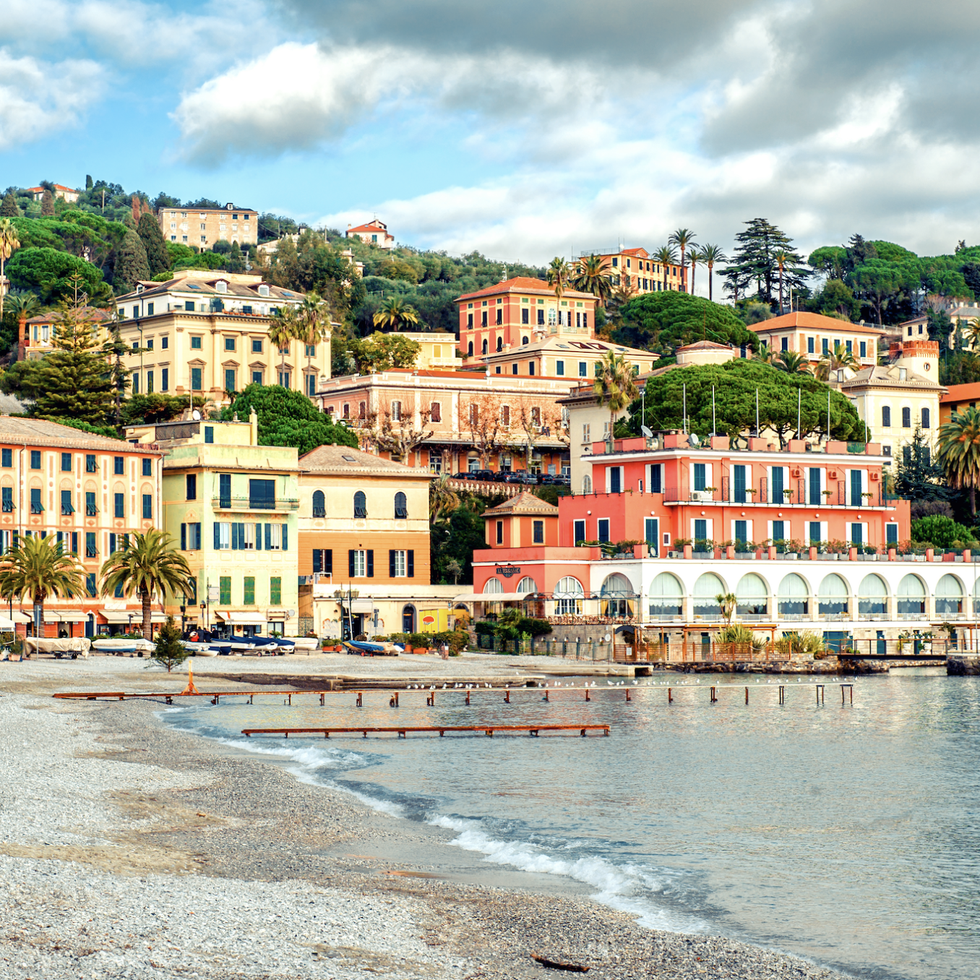
Then there’s Camogli, the riviera that the world forgot. You’ll find the same steep hillsides and pastel-hued homes of the Cinque Terre, but what you won’t find are the tourists in droves. Just sleepy enough to feel undiscovered but with enough local life and quaint trattorias to help you while away the days, this is a place to go before everyone else. Stay at the incomparable Belmond Splendido Mare , a discreet but glamorous grand villa nestled in the wooded hills above Portofino. Impeccable service, exceptional views, and a legendary restaurant make this one of the very best hotels in Italy.
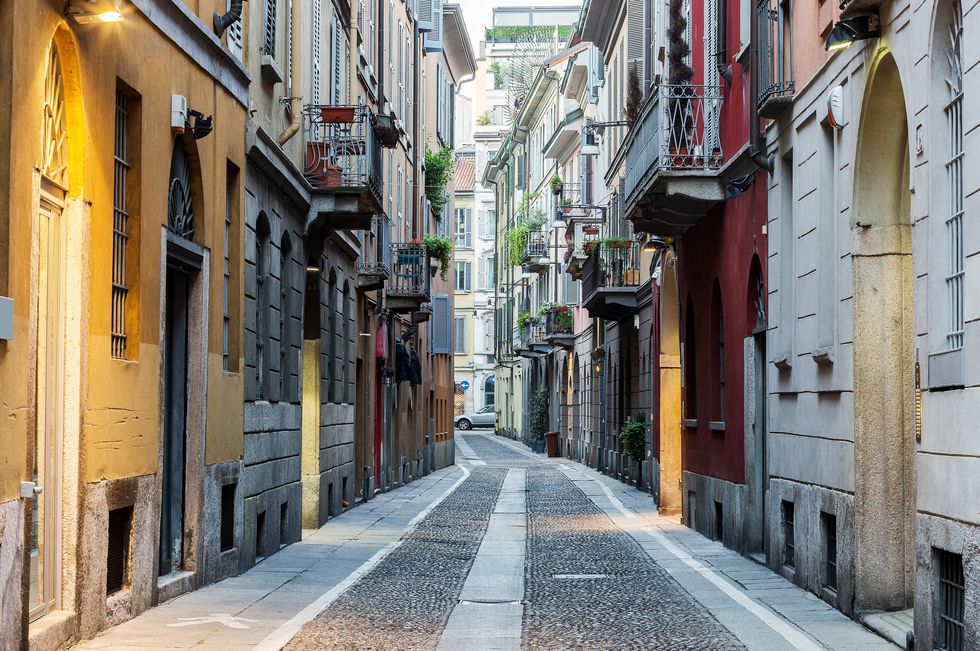
Get ready: There’s a lot to see in this one region alone. Italy’s fashion capital of Milan can sometimes be sidelined as an entry point, but it’s grossly underrated and definitely deserves deeper discovery. This bustling metropolis is best explored on foot for the world-class shopping (explore the Brera area), inspired cuisine, and extraordinary art. Trust us: It’s the perfect base for a luxurious Italian getaway. Just a short car ride away is Fondazione Prada housed in a former gin distillery in the industrial outskirts of Milan. Helmed by its namesake, Miuccia Prada, this institution is dedicated to showcasing the finest contemporary arts through a packed program of permanent and temporary exhibitions. Austere yet intimate, this breathtaking complex houses the colorful Bar Luce , whimsically designed by filmmaker Wes Anderson.
The Mandarin Oriental Milan , quietly hidden away but minutes from the action, is one of the finest places to stay in town. Choose a suite with balconies and soak it all up in this veritable oasis, unwinding in the subterranean spa and pool. The newly opened Galleria Vik Milano , from the stylish Vik family, should top lists, too; it’s beautiful and full of character with every room designed by a different artist.
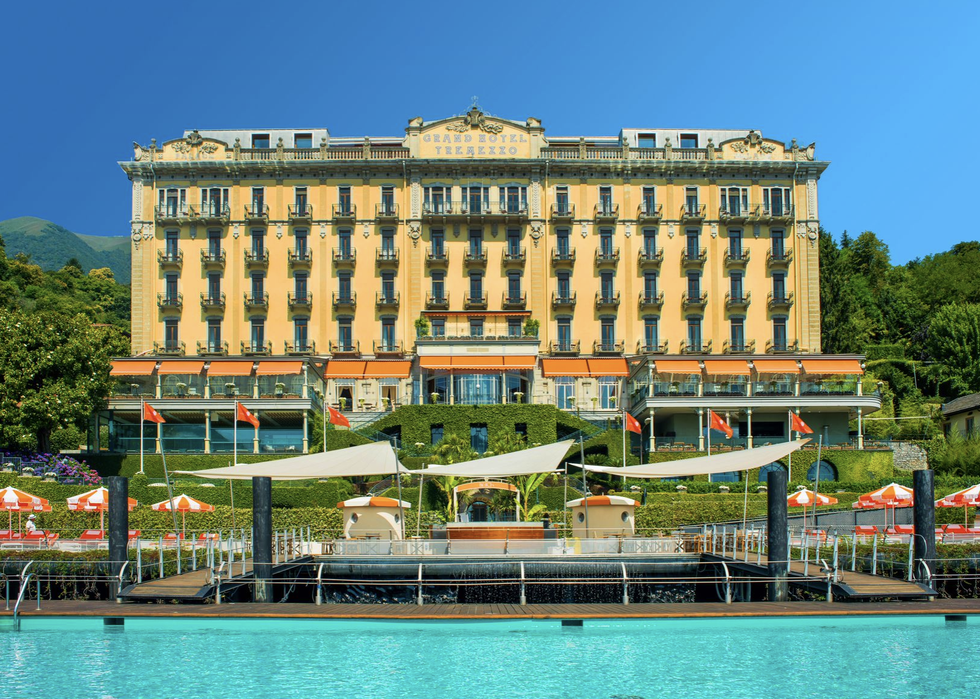
Italy’s sun-drenched Lake District is synonymous with glamour—and not a little bit of history. Gently, calmly buzzing, this is a place of mesmerizing vistas, of lush, manicured gardens, and legendary villas. It’s easy to see why this Y shape of lakes has inspired countless poets, writers, and painters, among them Ernest Hemingway. Nowhere epitomizes la dolce vita quite like Lake Como. Simply put: It’s absolutely stunning. Regal but easygoing, this is where the well-heeled come, year after year, to rest and play. The lake has a rich history, playing host to nobility and celebrities alike; you can easily spot George Clooney’s villa when you take a boat cruise, as well as Villa Sola Cabiati , which houses a suite designed for Napoleon himself. Valentina de Santis, CEO and owner of Grand Hotel Tremezzo , encourages boat sightseeing. “I love to watch the sunset from a boat,” she says. “It is such a different and special perspective of my beloved lake.”
When asked where to dine on a lake that isn’t short of places to eat, de Santis recommends a hot spot in the must-visit village of Bellagio. “I take my friends to Darsene di Loppia , a restaurant located in a historic hamlet of the same name. Speaking of Tremezzo’s grand hotel, there are few places to stay as iconic in this or any part of the world. Perched in the shadows of the Grigne Mountains and boasting every five-star facility you could ever dream of, this is the place to rest your head on the lake. From its elegant mix of period and modern decor to its luxurious suites, lavish alfresco dining, this hotel is straight-up legendary. It’s also quite close to two must-visit restaurants on Lago di Como: Al Veluu , located just up the hill from the hotel, and Locanda La Tirlindana , in nearby Sala Comacina.
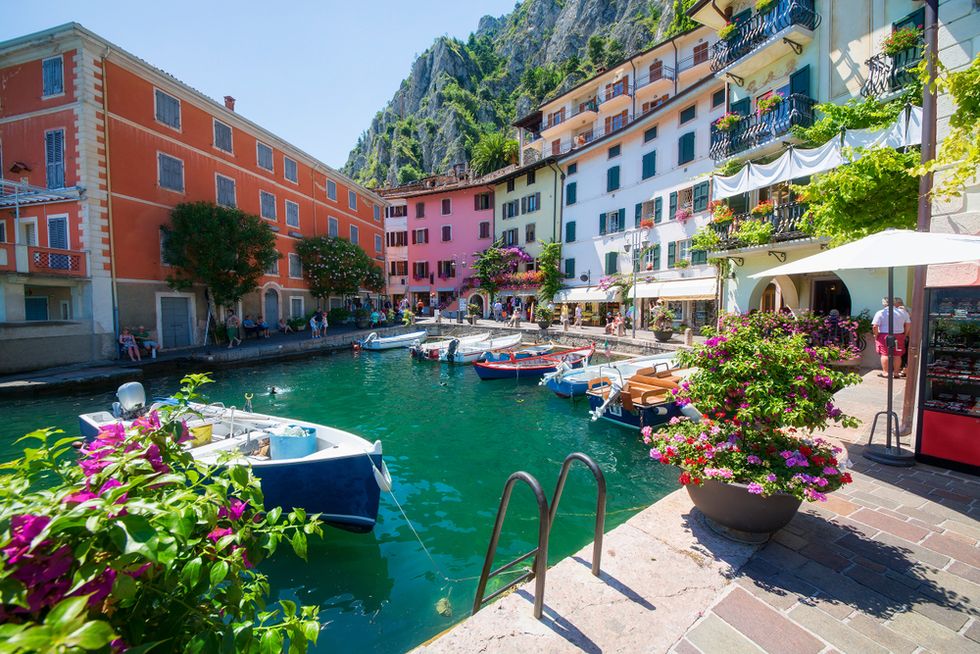
A short ride down the road is Villa D’Este . This regal, 16th-century estate feels very palatial indeed, with a jet-setting buzz, opulent rooms, a floating pool, and 25 acres of well-kept parklands. Jackets are expected at dinner, a nod to its Old World glamour, so embrace it and outfit yourself while in town. A more remote option on the other side of the lake in Torno, Il Sereno is a breathtaking, more contemporary option and in a sense its own little, modern island. There’s only one way to explore its breathtaking surrounds—which is on board one of its three custom-built Cantiere Ernesto Riva boats.
Situated on the edge of the Dolomites is tranquil and stylish Lake Garda, Italy’s largest lake. This beautiful and relaxing setting is also best explored by boat. Take in the lake’s most iconic vistas, charming villages, tiny islands, and, of course, villas, all framed by the dramatic backdrop of snowcapped peaks. Stop by the historic Riviera dei Limoni, with a guide in tow, and learn about the citrus-scented history of this stunning lake. Lake Garda is also a spectacular setting for a hike, especially Monte Baldo, which has some of the most impressive views. Stay at wellness-focused Lefay Resort & Spa , tucked away on a hillside under azure skies. Or check in at the historic Villa Feltrinelli , which is a palace in its own right. Just a short walk away are the cobbled streets of charming Gargnano, where vibrant orange trees line the shore; this part of the world is hard to beat.
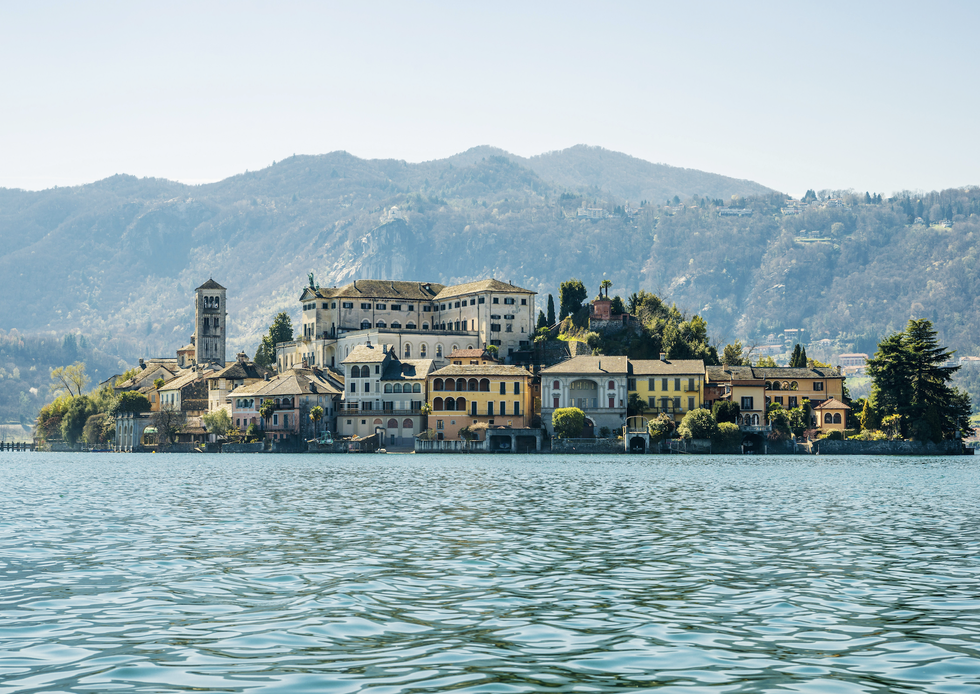
The best beaches have always been those accessible only by boat, and Spiaggia delle Due Sorelle in Marche is no exception. Years of being overlooked in favor of the Cinque Terre and Amalfi Coast has left this strip of coastline untouched and unspoiled. Pack a picnic; you won’t find anything else on this serene stretch of sand, but it is very much worth a visit.
Piedmont, home to the prized truffle, is a landscape of tranquil countryside, sleepy villages, and lively marketplaces. They take gastronomy very seriously here; if you time it right, you can go on the hunt (replete with dogs and a guide) in search of the Alba Madonna truffle—the holy grail of fungi. Hike through the Langhe, an area that feels almost designed for a slower pace of travel, and stay at the charming Relais San Maurizio . This former 17th-century monastery has been lovingly restored with great sensitivity to its past roots, and this resulting hilltop respite is truly spellbinding. Enjoy its fragrant botanical gardens, a panoramic pool terrace, and a dreamy spa (that offers vinotherapy, of course). No surprise, there’s also a Michelin-starred restaurant on the property.
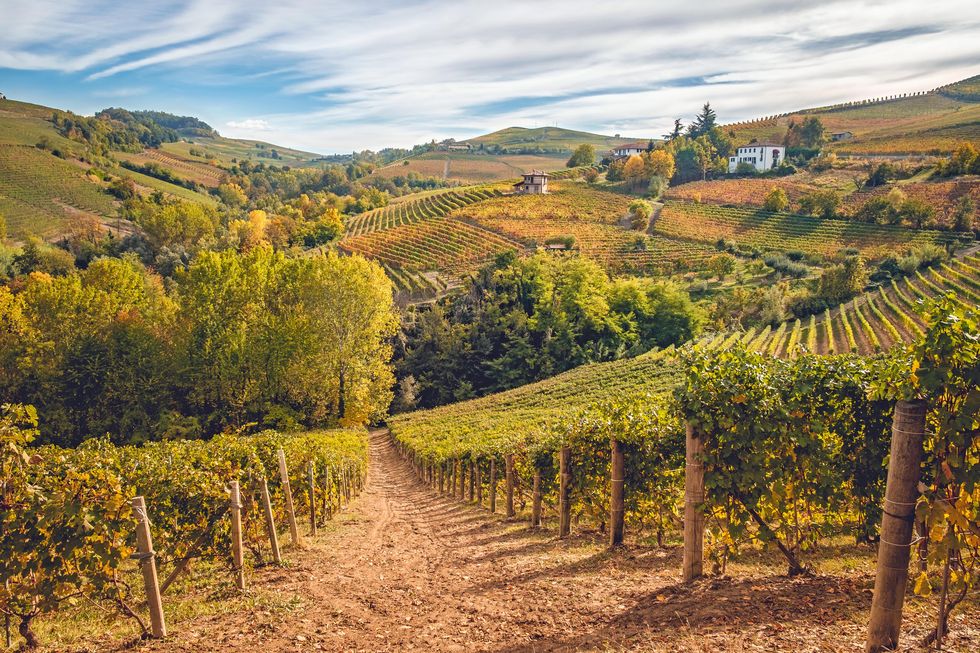
Don’t forget about Lake Orta, the Italian Lake District’s best-kept secret. Italians have dubbed it Cinderella for the profound subtlety of its beauty. Make sure to post up at the contemporary and stylish Casa Fantini. Located on the stunning shores of Lake Orta, Casa Fantini ’s 11 light-filled rooms look out over an intimate garden and pool to San Giulio Island, a postcard-like island home to a Benedictine monastery, stunning cathedral, and two Michelin-starred restaurants. The best place to watch the sunset with a glass of wine? From the vantage point of a Prestige Room at Casa Fantini, Daniela Fantini herself shares. “From up there, the view is stunning; there is peace, calm, tranquility, and you can spot special, enchanting, and protected corners of landscape far from the chaos, always accompanied by the presence of the crystalline water of Lake Orta.”
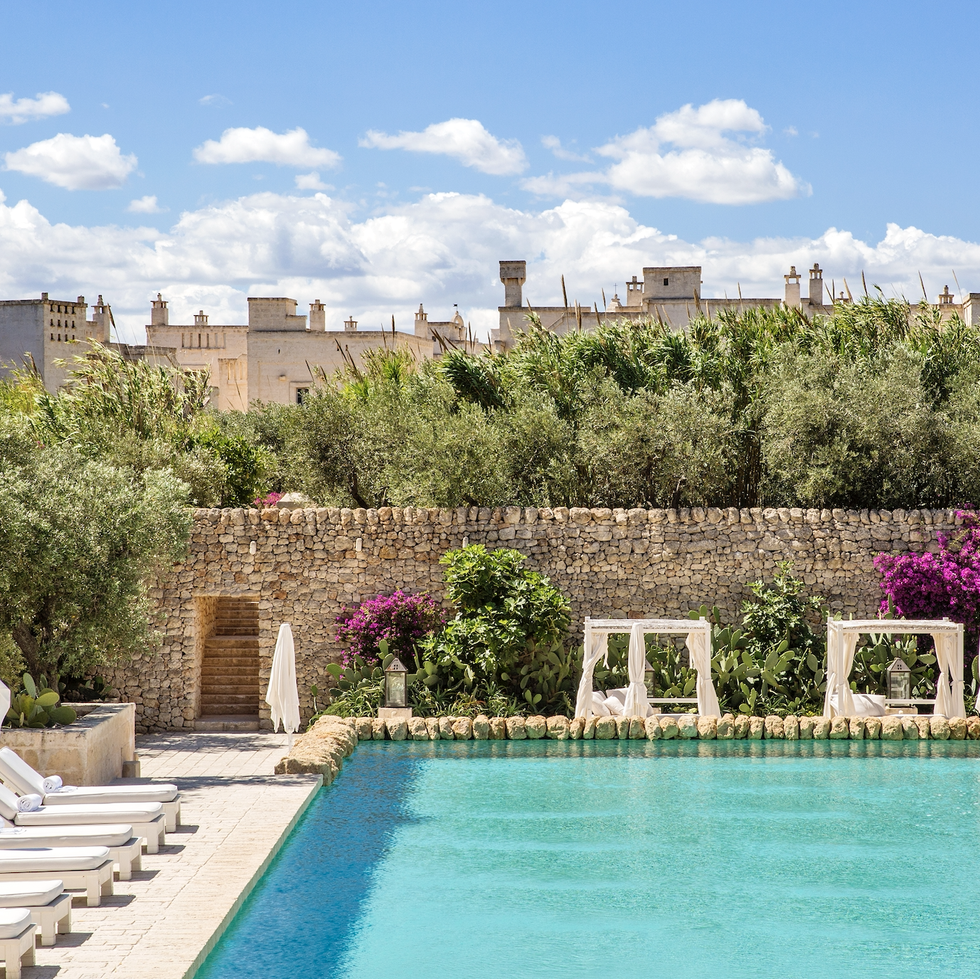
Puglia—white-stoned, Adriatic, the heel or spur of the boot—is best known as the land of the olive tree. Every family seems to tend at least one, but there are tens of thousands more dotting the hills, slopes, and fields of this chilled-out corner of Italy. Puglia’s most beautiful and prominent towns are pressed gorgeously against the coast or else located a matter of miles inland. For this, think Ostuni. Elsewhere, there’s Locorotondo, a village whose name rolls bubblingly off the tongue. Calm and quiet, it’s the perfect place to lose yourself. For years, we’ve adored Borgo Egnazia , a hotel that might better be considered a commune or a sprawling ancient village. The masseria -style hotel is typical in the region, but Borgo takes that sensibility to glorious new heights.
When it comes to where to dine in Puglia, Aldo Melpignano, co-founder of Borgo Egnazia, feels spoiled for choice. "There are so many options! If they are looking for true Puglian flavors, I would recommend the restaurant at San Domenico Golf . It’s a place with a very special "chef," Mimina. She has always been the cook of our family, she knows all the traditional recipes and her panzerotti are simply amazing! For a special dinner, I would suggest Casa Ciaccia in Ostuni; it’s a new place, nice and delicious and Ostuni, the "white town" as we call it, is an unmissable place to visit in Puglia."
While in this region, hit the ground running and "catch the sunrise close to Otranto, Melpignano advises. There is a lighthouse, called Faro di Punta Palascia, which is definitely the easternmost point of the country; it is considered as the place where the days start in Italy. There’s a special magic atmosphere when you see the first ray of light just surrounded by nature and the deep blue of the sea."
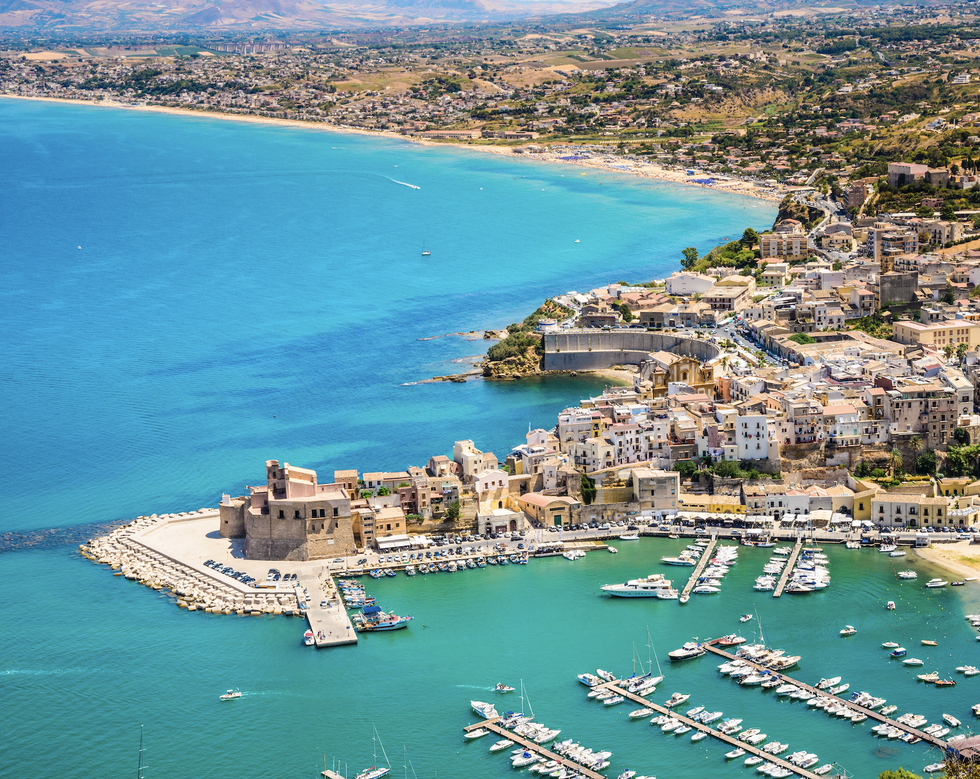
Located at the very foot of Italy, Sicily—the largest of the Mediterranean islands—is dominated by the broad-shouldered massif of Mount Etna. Beneath it lies incredibly well-preserved ruins (not least the spectacular Valley of the Temples), Byzantine mosaics, bustling cities, and phenomenal cuisine. This is a bright, colorful, and deeply happy place. If you pressed us for our favorite things about this beautiful isle, we’d opt for Isola Bella, a pinprick of an island with more than its fair share of natural beauty. Known as the Pearl of the Ionian Sea, this is where you’ll find hidden grottoes and pebbled beaches in sublime solitude. When it comes to sleep (and so much more), check out the newly opened Four Seasons Taormina and Villa Igiea ; they’re both inspiring options on this paradisical, balmy island.
THE DOLOMITES
The mighty Dolomite Mountains provide the dramatic backdrop for the region of Trentino-Alto Adige. Championed for its picturesque landscapes, exceptional cuisine, and legendary vineyards, this magnetic part of Italy has been shaped by its amiable proximity to nearby Austria and Switzerland.

Rosa Alpina , located in the beautiful South Tyrolean village of San Cassiano, is one of our favorite hotels the world over. A luxurious family-run enclave idyllic in both summer and winter, this sophisticated hotel blends classic alpine charm with contemporary luxury and boasts some of the best Michelin-starred cuisine in a region already lauded as a gastro wonderland. What’s more: It was just adopted into the acclaimed Aman portfolio. It’s also the perfect base for big adventure; hike alpine meadows in summer or ski UNESCO mountain ranges in winter. The wineries of Bolzano are an easy day trip and give a real sense of place to any trip to these mountains.
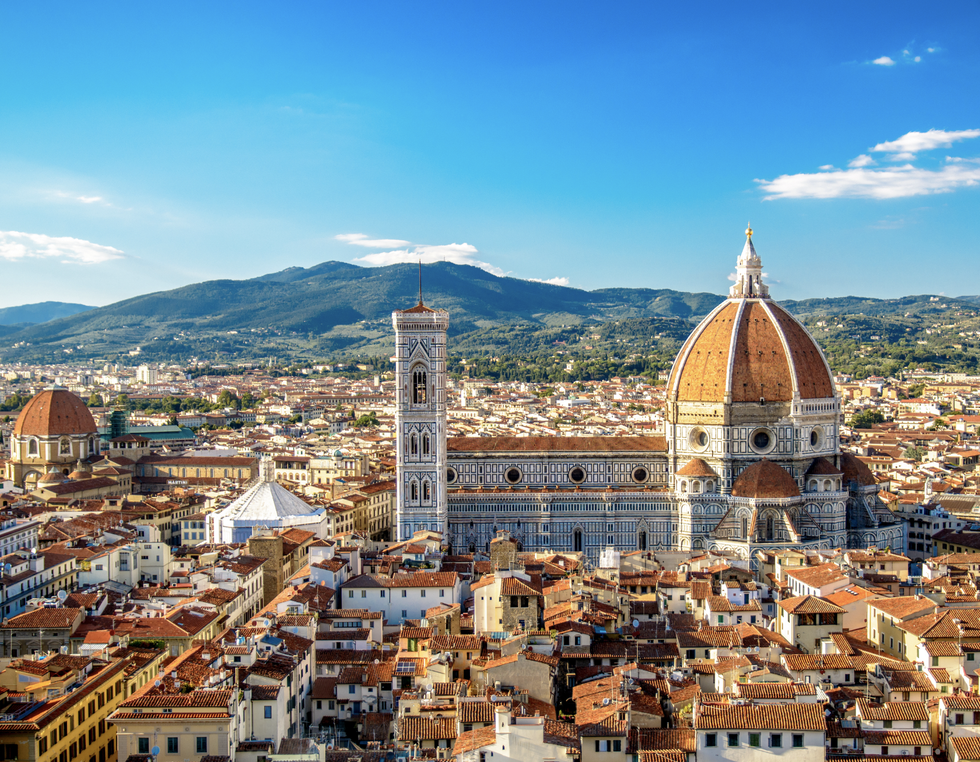
This vast bite of Italy you’ve certainly heard of. Life feels like a never-ending harvest in this golden-hilled region. Its heart (undoubtedly) is Florence, home of the Medicis. Many will stop at the Cattedrale di Santa Maria del Fiore (as would we), but you should also wander over to the smaller and more intimate Basilica San Miniato while in town. Clad in the same multicolored marble as its bigger sibling, it boasts a sweeping view from its doorway that truly sets it apart. Looking ahead, you’d do well to post up—once it opens in 2023—at Collegio alla Querce (part of Auberge Resorts Collection). Beyond the domes and palazzos of this ancient city, you’ll want to book a room at Borgo Pignano , our Tuscan favorite. There’s a warm euphoria that envelopes the entire place—romantic, intimate, authentic. Elsewhere, there’s newly opened Casetta and La Fortezza; both are worth your time. The former is located in the mellifluous town of Montefioralle, a tiny, incomparable hilltop settlement that casts a spell over all who enter it.

Annette Joseph of La Fortezza is right to recommend the sunsets from her sublime property (accompanied by a glass of their very own rosé). “We live in the Tuscan region known as the Lunigiana,” Joseph explains, “and it’s truly a spectacular vista here on top of the mountain. Every night, there is an astounding light show, just as the sunrise offers an incredible wake-up call.” And this particular wake-up, Joseph suggests, should be followed with a visit to Albergo Pasquino , a restaurant located in nearby Aulla. “It’s family run, and the local fare is delicious. They cook on a giant wood-burning stove in the middle of the restaurant, which is lots of fun to watch, and they offer a local dish found only in the region named panigacci . It’s basically an Italian taco. It is served with the best selection of charcuterie and regional soft cheeses; it’s a specialty—so much so that it takes one year to apprentice and become a panigacci master.”
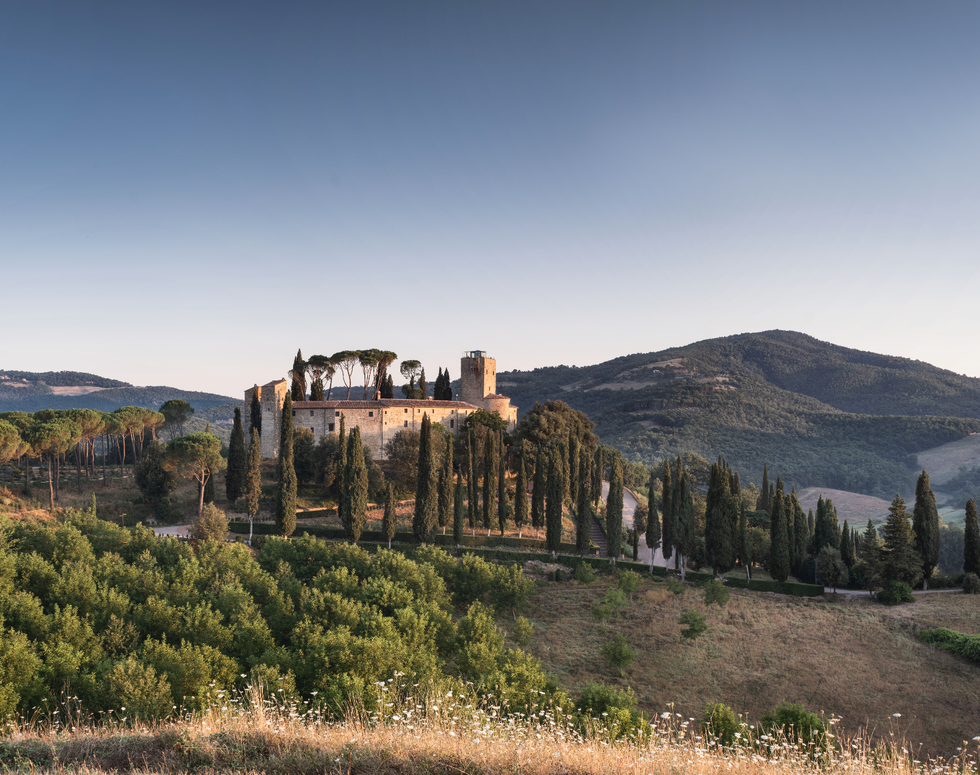
Poetically speaking, Umbria is known as Italy’s green heart, a stunning region of medieval hill towns, ancient forests, truffle hunts, and vineyards. At its cultural center is Perugia, home to the Galleria Nazionale dell’Umbria art museum. Spoleto, a favorite haunt among the Roman nobility, has held on to its authentic, historic charm and makes for a beautiful day trip into the Umbrian hillside. Start in the medieval upper town before paying a visit to the Duomo, then making your way to the modern lower town and its ancient city walls. When it comes to resting your head, try the newly opened Reschio , a charming and authentic luxury hotel housed in a historic castle that draws on the best of Tuscan and Umbrian traditions. This ancient estate is comfortably nestled among the rolling, sunbaked hills with 1,500 acres of protected wilderness at its doorstep. Each of its nine historic farmhouses has its own unique character, while the thousand-year-old castle at its center is a marvel of design, restored and modernized with panache and wit.
A city on stilts, Venice is an archipelagic townscape and the Queen of the Adriatic, spread across 118 individual islands. For all its fragility, the city—once a kingdom unto itself—feels immeasurably solid. History is here in every rubbed-round stone, stained-glass window, church bell, and labyrinthine alleyway. For poet Joseph Brodsky, Venice “resembles a gigantic orchestra, with dimly lit music stands of palazzi.” Continuity is obliterated in this tightly clustered space; a glimpsed alleyway might be impossible to find again. Take a peculiar turn from a busy palazzo, and you find yourself buried in a cacophony of silence, little side streets bending this way and that. If you’re after the best place for dinner, head to Ristorante da Ivo .

Tucked away behind the Chiese Santa Maria della Salute, Dorsoduro awaits—and it’s a taste of the real Venice, of cicchetti and half bottles of local wine. For art lovers, don’t miss the Peggy Guggenheim Collection and the Gallerie dell’Accademia. Sleep at the stylish Ca’ di Dio , which just opened this year and is already turning heads. Some choose to take a vaporetto (or water taxi) to the lagoon island of Mazzorbo, a restful break from the buzz of Venice proper. When in town, a Michelin-starred meal at Venissa is a must.
Tom Marchant is the co-founder of luxury travel company and trip planner, Black Tomato , which delivers high-touch experiences around the world via inspiring itineraries and access to the globe's up-and-coming, exclusive, and remote destinations. Marchant's finger on the pulse of travel trends and the world's best in hotels, restaurants, destinations, and honeymoons is unique and incomparable–and he's sharing his expertise and curated lists of where to visit, stay, eat and more in his travel column on BAZAAR.com .

Travel & Food
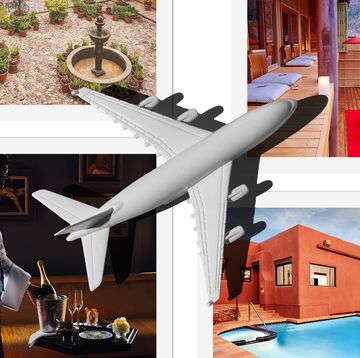
The Bazaar Guide to New Orleans

These Hotels Are Great for Eco-Conscious Travelers

Pacaso Rethinks How to Own Your Dream Home

The 40 Best Luxurious Hotels in New York City
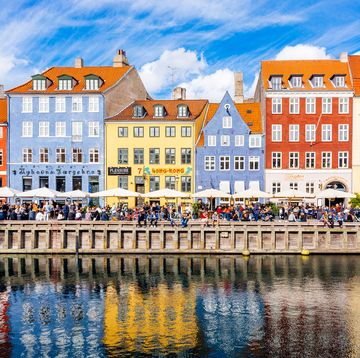
The Best Things to Do in Copenhagen
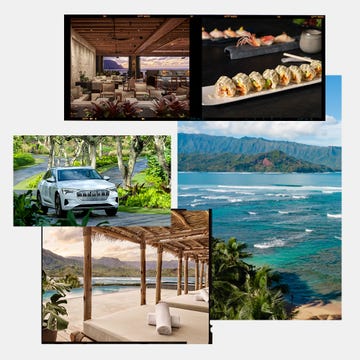
In the Driver's Seat: Four Days in Kauai, HI

How to Do Sundance Film Festival Right
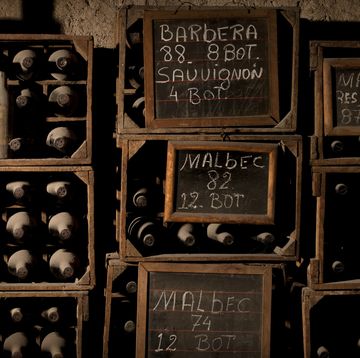
Gen Z Loves Fine Wine
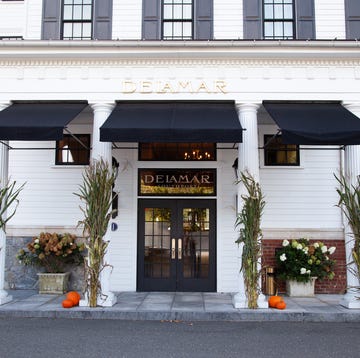
In the Driver’s Seat: A Fall Weekend in Southport
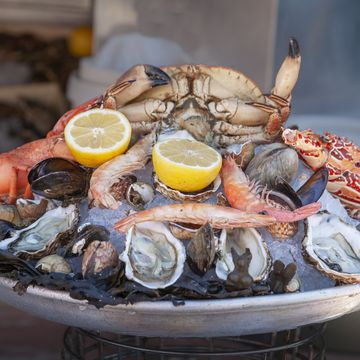
6 Luxe Ideas for Your Next Happy-Hour Celebration

How to See the Northern Lights

- Switzerland
- The Netherlands
- National Parks
- Affording Travel
- Photography
- Responsible Travel
- Worldschool
- Wanderlust Guides
- Travel Planning
- Work with Us
Europe , Italy , Travel
The only italy travel guide you’ll ever need.
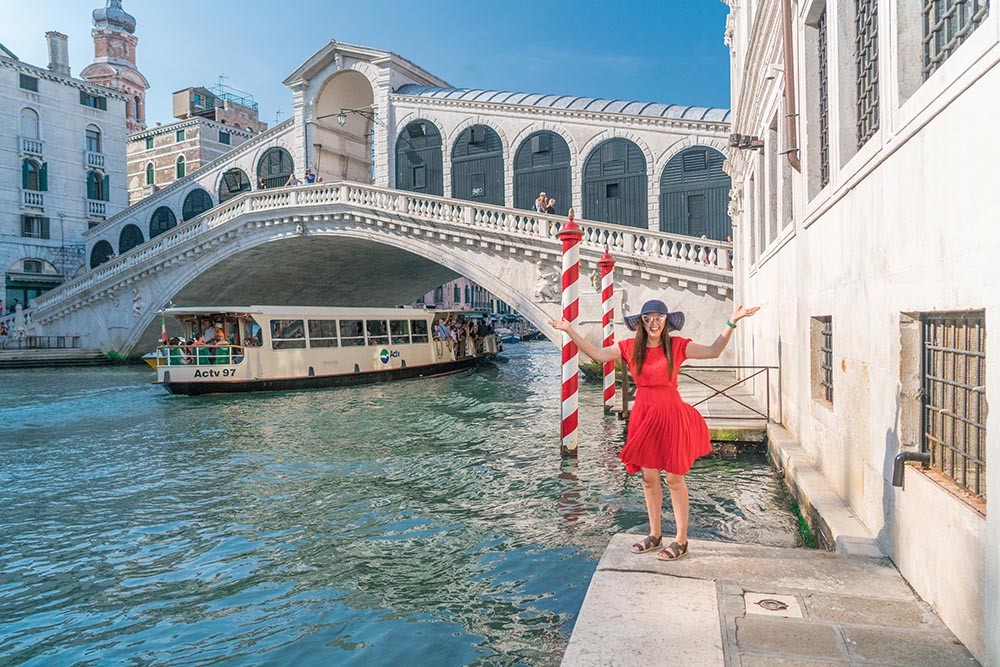
This is the best Italy travel guide to help you plan your trip with ease and ensure you see the best that Italy has to offer, safely and efficiently!
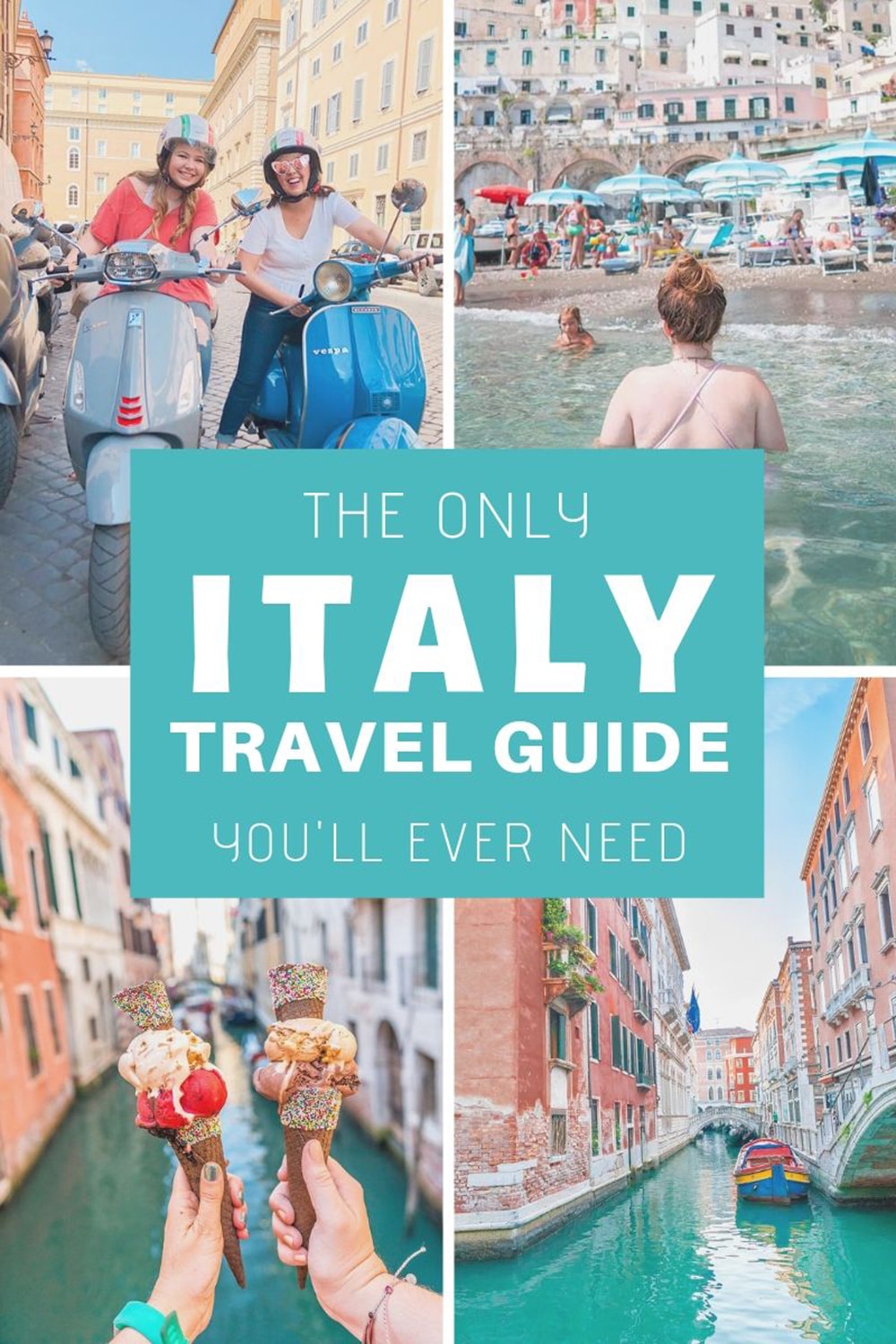
This post contains affiliate links
Why Go To Italy
There are many reasons to visit Italy. I feel like I shouldn’t really have to explain myself. I mean, have you ever had gelato ? Top reason! Ok, not really, but it’s pretty high up there for me.
Italy is a country that I just keep going back to. I don’t necessarily plan it that way, but it just seems to happen! There is just so much to see and do in this wonderful country that it feels like a different trip to Italy every time I visit.
Italy is such a large country, full of many different people, history, cultures, and landscapes, that has given us so much historically, artistically, musically, and more. There’s a reason that Italy is called the birthplace of the Renaissance.
The museums in Italy are some of the best in the world, boasting the most famous artistic pieces known to man.
Add all that culture (and gelato) to the fact that Italy has nearly 5,000 miles of coastline and gorgeous beaches, visiting Italy is a no-brainer!
Here are just a few reasons we love visiting Italy:
- World class museums
- Amazing Food
- Beautiful Scenery
- Historical Importance
- Friendly People
- Affordable Prices
- Gelato (need I say more)
Obviously, there are so many more reasons to visit Italy, but this should be enough to entice you! It’s an amazing place that you must see, but it’s good to know all you can before you go. This Italy travel guide will help you find all the information you need for your trip.
If you’d like more information about planning your trip, join our Italy Travel Planning Facebook Group
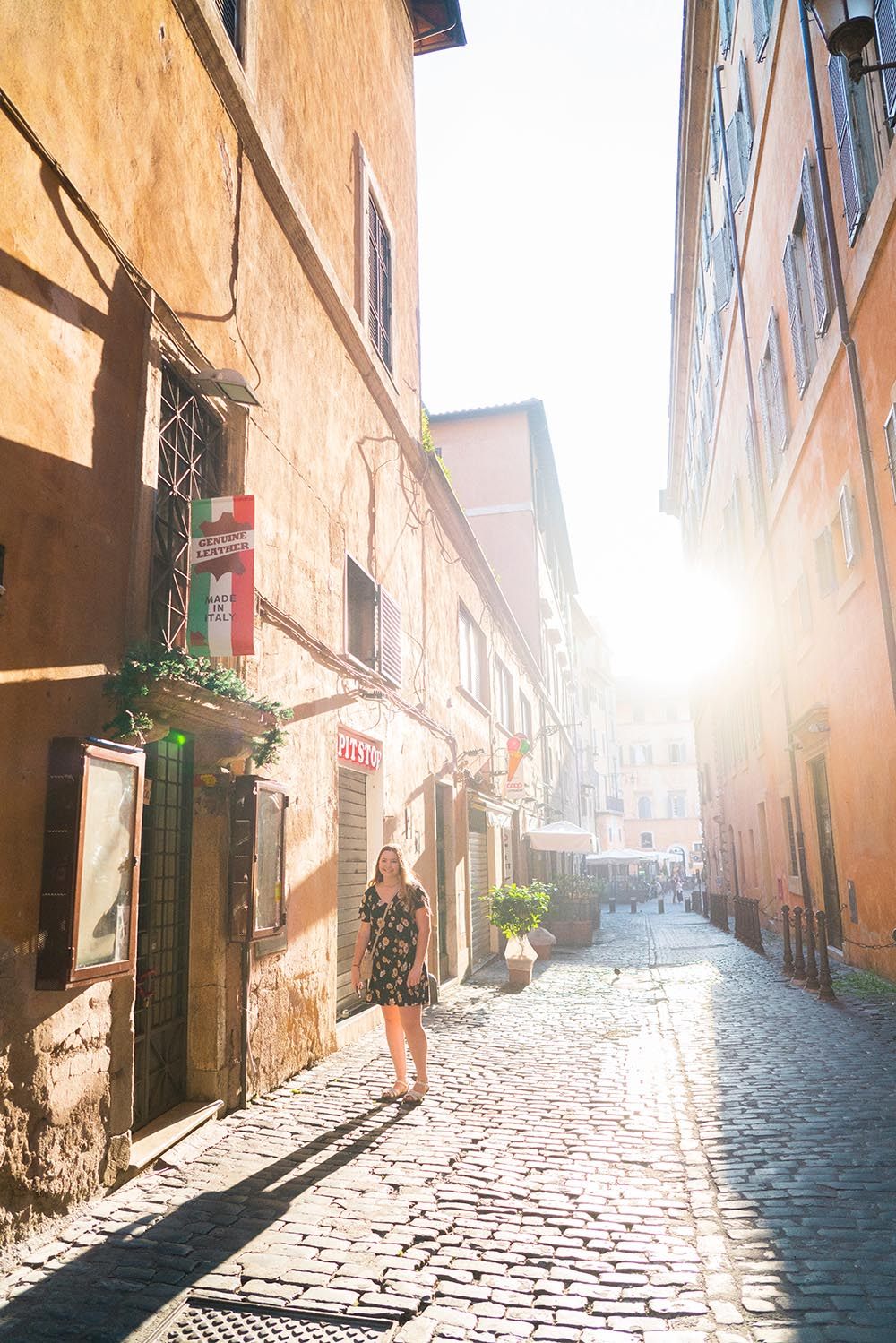
Here are some fun facts about Italy
- Pasta has been around since the 4th Century BCE
- The fork was made popular in Italy
- All 3 of Europe’s volcanos are located in Italy
- Marco Polo and Christopher Columbus were both from Italy
- The country of Italy is only 153 years old
- Pizza was invented in Italy
- The Vatican is the smallest country in the world
- There are 50 UNESCO World Heritage sites in Italy
- Italy has almost 5,000 miles of coastline
- Around 3,000 Euros are thrown into the Trevi fountain each day. It’s given to charity.
The Best Books About Italy to Get You Inspired
I’m a huge reader and love reading almost as much as I love traveling! I have read so many books about Italy that have inspired me to visit and enjoy all that is has to offer. These are the books that have inspired me:
From Sand and Ash
This is one of those novels that really sticks with you. It’s set in Rome during WWII and follows the lives of Christians and Jews as the Catholic church works to save and hide Jews inside churches and convents. It was a fascinating story and there are so few WWII books set in Italy, so I loved hearing this perspective.
Love & Gelato
So this is definitely a YA book, but the story is sweet (no pun intended) and it has a good message. It’s set in Florence and the Tuscan countryside and is about a girl who moves from America into her new life after her mother dies.
Beneath a Scarlet Sky
I don’t think I’ve ever read a more fascinating book based on reality! The whole time I was reading it, I kept thinking “no way, this can’t be real,” but it was. It’s the true story of an Italian man during WWII who helped smuggle Jews across the Alps and into Switzerland. He was also a driver for a leader in the Nazi party and worked as a spy.
Eat, Pray, Love
This is really such a classic that will make you want to travel anywhere, but her time in Italy seemed especially precious!
Four Seasons in Rome
This is a great book set in Rome (obviously) and is a memoir by Anthony Doerr, the author of “All the Light We Cannot See” (a novel set in France). Anthony shares about his year in Rome with his wife and twin babies. If you’re traveling to Rome with kids, this is a must read!
Inferno
All of Dan Brown’s books make me want to travel, but Inferno is set in Florence and is particularly fascinating. I learned a lot about the art and history of Florence from this book.
Angels & Demons
Another great Dan Brown book, this time set in Rome, will teach you about art out in plain sight in the city of Rome. It mentions many fountains and sculptures that you may have previously just walked by.
If you want to see a list off 100 inspirational books that will make you want to travel the world, read here.
I love browsing the internet for advice on how to travel in Italy, but sometimes a tangible book can be a beautiful thing. Here are my favorite Italy travel books:
Rick Steves Italy 2019
I’ve always been a big fan of Rick Steves. Especially since he specializes in all things Europe and keeps his guides up to date! His Italy guide is top notch and once you know where you’re going in Italy you can look into his more specific guides.
Lonely Planet Italy Travel Guide
Lonely Planet books are always a safe bet! The information is good, accurate, and kept up to date.
Getting to Italy
It’s a great time to visit Italy right now. With so many cheap flights to Italy, it’s much more affordable! A flight that would have cost you a thousand dollars 3 years ago now costs under $500! I keep telling everyone I know, if you’ve wanted to go to Italy, but couldn’t afford it, the time is now!
The cheapest time to fly to Italy will be during the offseason like January and February, but you can still find killer deals to Italy during the rest of the year. I flew from San Francisco to Rome for $400 in August last year. I recently found a flight from New York to Rome for $200. If you want to hear my best tips and tricks about finding dirt cheap flights read this.
When is the Best Time to Visit Italy
The best time to go to Italy, in my opinion, is when the flights are the cheapest ! That’s just how I operate! But in all honesty, I think the best time to travel to Italy is during the shoulder season.
If you don’t know what shoulder season is, it’s the months before and after peak season which, for most destinations in the Northern Hemisphere, will be September to October and April to May . This is generally the best time of year to go to Italy for several reasons.
What Month has the Best Weather in Italy?
I think the best time of year to visit Italy also really depends on where you go in Italy. As mentioned before, Italy’s climate is as diverse as it’s culture.
If you’re going to the Dolomites in January you will have a very different experience than if you go to Sicily in January. Winter in Italy can be very different depending on where you go.
Summer in Italy will generally be hot, especially in cities like Venice, Florence, and Rome. Summer in Italy might be a great choice for the Dolomites, or the northern lakes of Italy like Lake Como, Lake Garda, and Lake Maggiore where the mountain climates are more temperate and you have access to swimming and boating!
I find Italy in September really nice all over the country. You still have the warmth that you imagine Italy always has and all the tourist attractions are still open, but the crowds are much lighter thanks to traditional school schedules!
Spring in Italy is beautiful with blossoming wisteria abounding, but you are guaranteed to have less predictable weather, which usually means more rain and also spring break crowds.
When is the best time to visit Italy for Budget Travel?
I would say that for budget travelers, the best time to visit Italy is during the winter months, January and February in particular. Flights will be cheaper, hotels and Airbnb will be cheaper, and transportation will be cheaper.
But keep in mind this may not be the warm gelato-eating, sundress-wearing, beach-going kind of trip you may have dreamed of. So keep an eye out for good flights, and try to compromise with your time and money.
The short answer is that there is no best month to travel to Italy. Every time of year has something different to offer. Do your best to plan for affordable flights and lodging while picking a time that works for your schedule and your dream trip.
If you’re looking for ways to save money for travel, read this. And if you want to learn how to save up to afford your dream trip, read this.
How Much is a Trip to Italy Going to Cost Me?
If you’re traveling to Italy on a budget, it’s important to remember that traveling can really cost as much or as little as you want it to. That’s the beauty of this country. There is something for everyone, including something for everyone’s budgets!
How much to budget for a trip to Italy?
- Flights: $300-600 depending on the time of year and your location
- Lodging: $50-$200/night depending on your budget
- Transportation: $200-$400 for the entire trip depending on the length
- Food: $20-$100/day depending on your taste, standards, and size of your group
- Gelato: $20/day (oh wait, that’s just me! But gelato costs between 2-5 euros depending on where you are, so plan accordingly and bring cash.)
What to Pack for Italy
If you’re wondering What to wear in Italy, don’t stress. Packing for Italy is pretty simple, especially if you’re going in the warmer months. I recommend packing a few sundresses, pants, a light jacket, and very good walking shoes. Don’t forget to pack your Italy power adapter, as you’ll find two different types of plugs in Italy.
Here’s a basic list of what to pack for Italy, but if you want a more in-depth list, you can see what we packed for our Italy backpacking trip here.
Italy Power Adapter
You’ll want to be sure you have a good international adapter, but I also like having a specific Italy power adapter because many old Italian homes will have two separate kinds of outlets and I’ve found that the international adapter doesn’t work as well in the old Italian ones.
Walking Shoes
If there’s one thing you can count on in Italy, it’s that you’ll be doing a lot of walking. And you’ll certainly need to if you plan on eating gelato every day! Italy is covered in hills and cobblestone streets, which make it so beautiful, but also rather difficult to walk through at times. You’ll want to be sure to have some good walking shoes.
If you’re visiting Italy in the summer, these sandals are amazing! I’ve had them for a few years now and they are comfortable to walk in for miles, but also cute enough to be worn with a sundress at church.
And if you’re visiting Italy in the winter or if you’ll be doing some hiking, these are the most amazing boots ever! I’ve had them for years and the best part is that they have a lifetime warranty from Eddie Bauer. I’ve walked through the souls of these boots after a few years and traded them in for new ones. They’re super comfortable and totally waterproof!
You’ll need a good daypack if you’re carrying camera equipment and water around on all your activities in Italy. We love this Osprey daypack.
I’m still so baffled that these beauties ever went out of style! They are great for traveling and for allowing you to be hands-free, which is so important if you’ve got little kids to look after! It also puts the weight of your bag on your hips instead of your back and shoulders which will already be overworked from hauling your luggage all over Italy.
I love having a big fanny pack with everything I need accessible in front of me.
But I also love this smaller one for excursions that require less stuff!
Portable WiFi
You’ll need some good WiFi when you go to Italy so that you can get around easily with your maps and stay in touch with your travel group. We love using Skyroam ! You can use the code WANDERLUSTCREW for a special discount.

Portable Phone Charger
I cannot go anywhere without my portable phone charger! I love the myCharge line because the cords are all built in! I just bought one that has USBC connections so I can even charge my laptop with it!
I’m in love with Sony mirrorless cameras. They are so much lighter and smaller than DSLRs, but provide the same quality. The Sony a6000 is a great starter mirrorless camera!
Staying Safe in Italy
Italy is generally a safe country. It’s always wise to be aware of any scams or high pickpocketing areas, and you must always be on your guard, especially when traveling solo or with kids. Be sure to read my 50 tips for traveling Europe like a pro.
Where to Stay in Italy
There are hotels, Bed & Breakfasts, and home rentals all over Italy and they are all pretty affordable. We’ve stayed in some seriously amazing places in Italy!
We stayed in Lake Como for two months in a huge gorgeous house with a view of the lake for $1,200 USD/month. I stayed in a beautiful Airbnb on a lemon grove with an ocean view in Sorrento where our host made us a homemade breakfast every morning including hand made fig tarts that I still dream about!
Our personal favorite way to stay in Italy, especially as a family, is with Airbnb. We’ve saved thousands of dollars by using Airbnb. If you’ve never tried it, you should! Here is a $40 coupon for your first stay.
Read this guide to using Airbnb before you even start looking for where to stay in Italy.

We’ve also had good luck with hotels in Italy. We stayed at an amazing hotel in Rom e right on the Piazza Navona where the bed lifted up to reveal a spa-sized bathtub with jets for under $100 USD/night. Another of our favorite hotels was one that opened up to a magnificent view of the Colosseum. There is something for everyone in Italy.
You can find some of our favorite hotels in Italy here.
The Best Places to Visit in Italy – Where should I go?
Italy is a huge country by European standards. It’s around the same size as the state of California. It’s tough to know where to go in Italy: the ancient ruins of Rome, the museums of Florence, the canals of Venice, or maybe something a little more unique and remote.
The options are endless and you can really have any kind of Italy vacation depending on your preference. Choosing where to go in Italy is tough, but this list of the best places to visit in Italy should help.
These are some of the best cities to visit in Italy and some of my personal favorites:
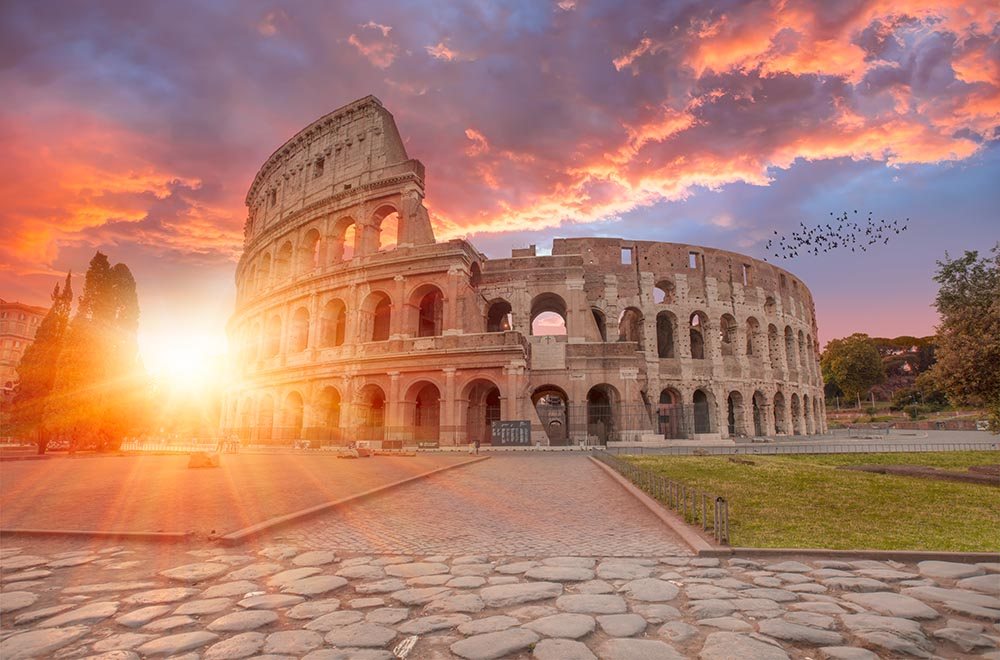
Rome is also a great place for families. With all of the museums and ancient ruins all over town it’s a great opportunity for kids to learn some history while having a gelato! Read my guide to Rome for families here.
Rome is also a great jumping off point for anywhere else in Italy. Most affordable flights will take you to Rome, so even if you only have a short time there, read about what to do with one day in Rome.
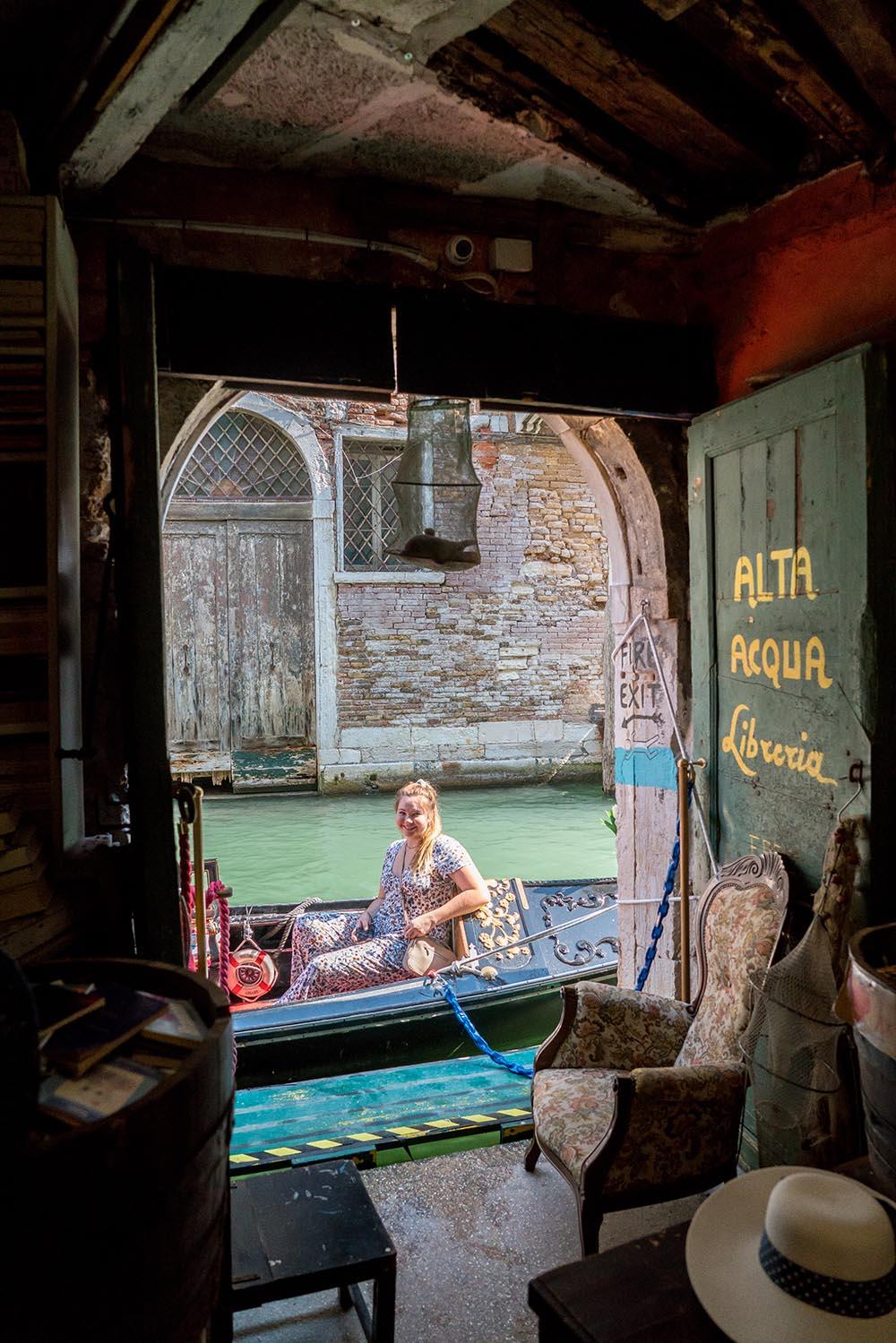
Cinque Terre
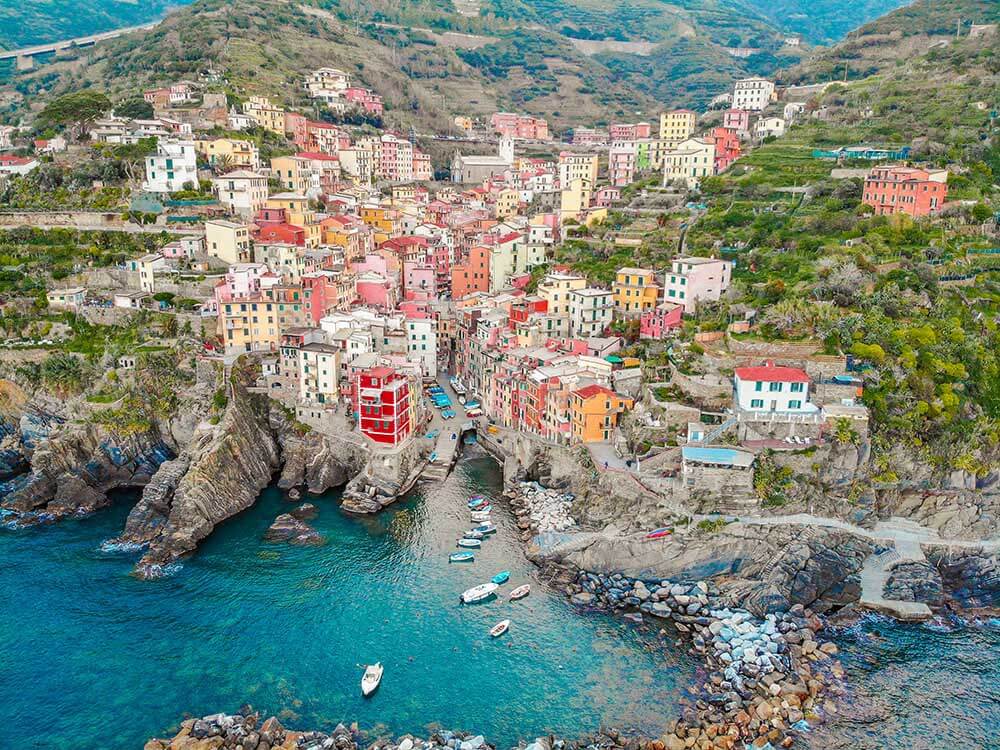
Getting Around Italy
Once you’ve purchased your flights to Italy and booked your lodging in Italy it’s time to start planning your transportation between your Italy destinations. There are many ways to get around Italy including cars, trains, bikes, planes, and even boats.

Train Travel in Italy
One of the big reasons I keep coming back to Italy is that train travel in Italy is so affordable and fairly easy to use if you know what you’re doing. Don’t go to Italy without reading my guide to train travel in Italy! I truly think this is the best way to travel in Italy!
Driving in Italy
Driving in Italy is not like driving in the United States. It’s not the worst place I’ve ever driven, but they definitely have their own set of rules. Just be very cautious and aware of other drivers, and get the full insurance on your rental car through the rental company or through your credit card company if they offer that.
I’ve rented cars in many foreign countries and have never had to show an international drivers permit until I tried to rent once in Milan. It has not happened to me again since, but it’s good to read the fine print when you book a rental car, or you can just go into AAA and pick up an international driving permit for around $20. You don’t need to take a test or anything.
The Best Things to do in Italy
Now that you’ve decided on your destinations, accommodations, and how you’ll get around, it’s time to think about what to do in Italy! The options are nearly endless, but I’m going to list my favorite activities in Italy:
- Take a train ride
- Ride on a Vespa
- Take a Cooking Class
- Spend time on the beach
- Eat gelato every day (read my guide to finding the best Gelato in Italy here )
- Try all the food
- Speak some Italian
- Explore ancient ruins
- Take a gondola ride
- Take a hike
Italy Itineraries
If you’re not sure where to go and would like some Italy vacation ideas, I’ve put together some of the best Italy itinerary options . Sometimes the best way to see Italy is with a set itinerary that means you don’t have to put too much effort into the planning.
I hope this has helped answer some of your questions about visiting Italy and I hope you’re feeling more ready to start planning your own trip. Whatever you choose to do and wherever you choose to go, you are going to love this amazing country! If you need help planning your trip to Italy, please feel free to reach out! I do free trip planning and would love to help you! You can email me or get in touch on Facebook or Instagram
If you loved this, please pin it!
Wanderlust Crew
3 thoughts on “ the only italy travel guide you’ll ever need ”.
I would like some literature about Italy sent to myhouse
Hi Sarah, my itineraries are only available as digital downloads right now. There are essential links that you will need on the guides so this is why they aren’t available on paper, sorry. Let me know if you have any questions. You can email me [email protected]
I LOVE Italy and can’t wait to go back! Go away Covid! Your photos and page are awesome. Check out some of my Italy pics and trips at simplyjolayne.com.
Leave a Reply Cancel reply
Your email address will not be published. Required fields are marked *
Notify me of follow-up comments by email.
Notify me of new posts by email.
This site uses Akismet to reduce spam. Learn how your comment data is processed .
9 tips for beginners visiting Italy for the first time

Planning your first vacation to Italy ? Not only is this beautiful country one of the top culinary destinations in the world, but it's also home to some seriously iconic tourist attractions to boot. With over 55 UNESCO World Heritage sites, three active volcanoes and over 1,500 lakes, you'll never get bored. And if you are, well, there's always pizza!
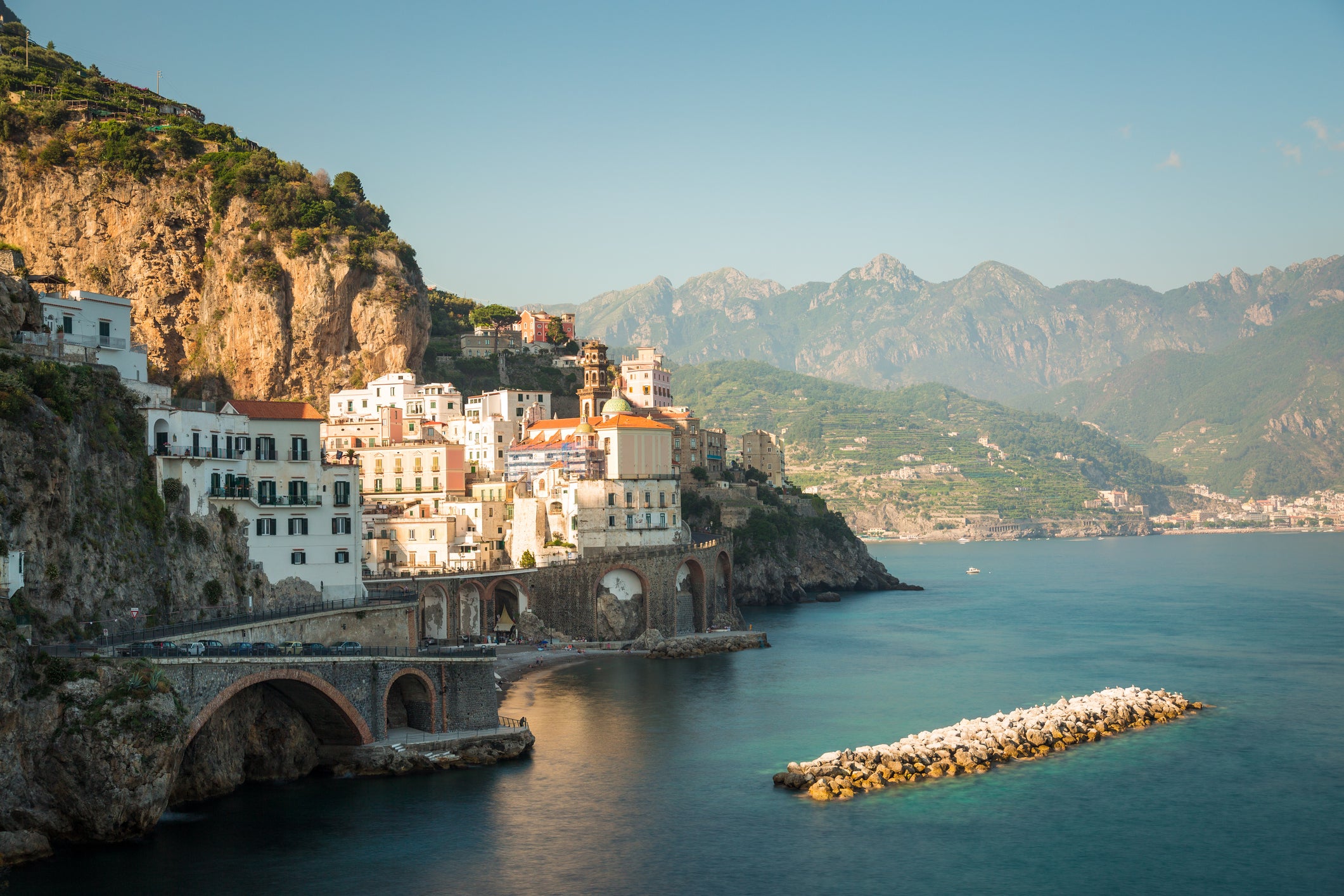
When organizing a vacation to Italy, there are a few things you should know in order to have a safe and enjoyable getaway. First-time travelers take note: these are some of the things you consider for your Italian adventure.
1. Figure out what kind of trip you want to have
Italy's got it all: 4,600 miles of coastline lined with hundreds of gorgeous beaches , numerous tourist attractions, lively cities, charming villages and sprawling vineyards. From low-cost to luxury, Italy has accommodation, restaurants and activities to fit every budget, whether it's renting a yacht off the coast of Capri, staying in an affordable hostel in Rome or enjoying a Sicilian farmhouse getaway.
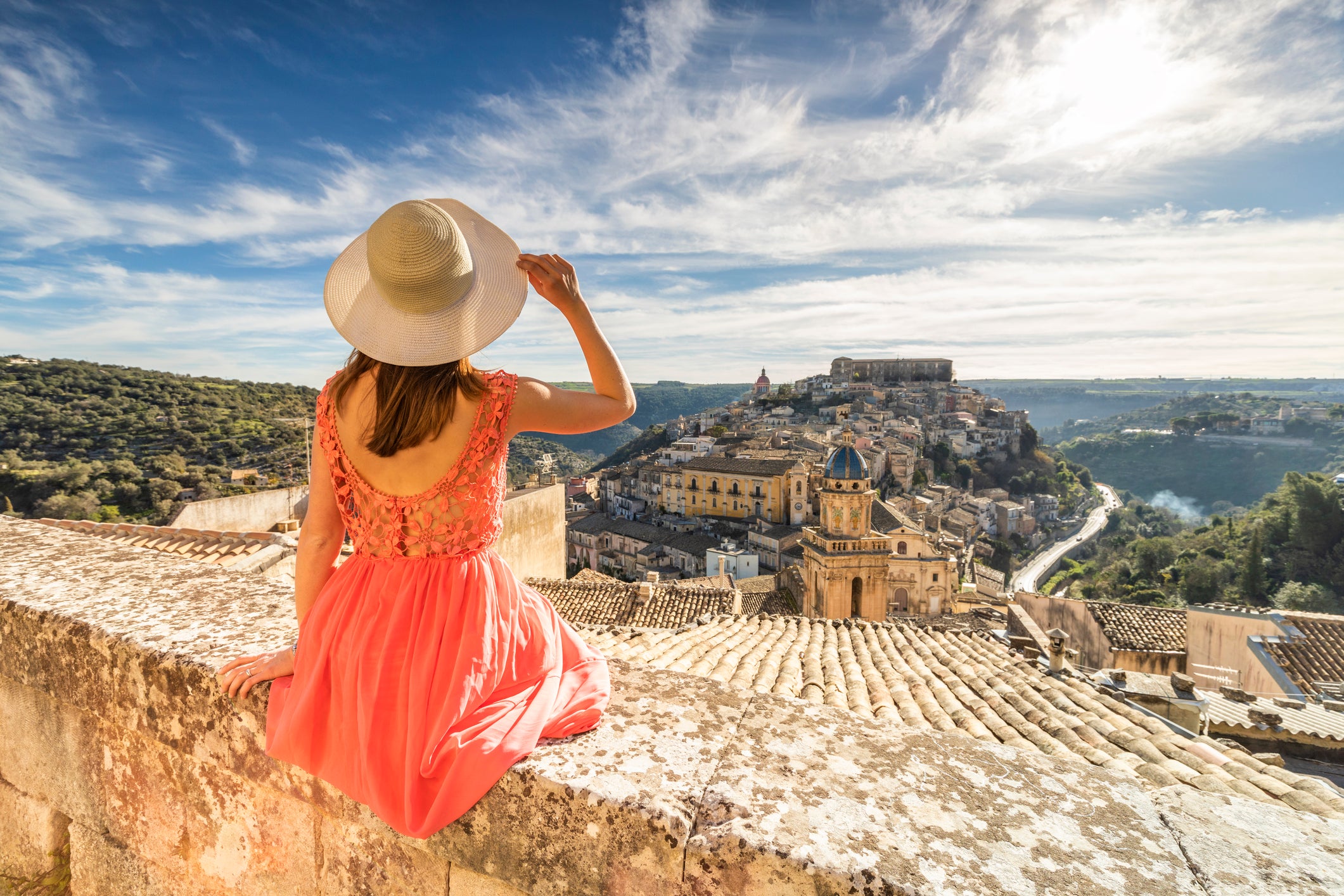
Consider your interests, as well as some of the things Italy is famous for, like gastronomy (you could build a trip around dining out or cooking classes), art (Italy has some of the top museums in the world) or exploring a wine region (drive through the hills of Prosecco or Tuscany's wine country).
Related: How to have a budget vacation in Italy
Or, think about destinations. For each week you have of vacation , you can comfortably squeeze in two destinations (maybe more if you're a very active traveler).
- If you love art and tourist attractions, consider Rome and Florence.
- If you love fashion but also want to relax, consider Milan and one of the northern lakes.
- If you want pizza, cityscape and coastal charm, consider Nap les and the Amalfi coast.
- If you want to dig into Italy's food and wine scene, consider a road trip through Tuscany or Piedmont.
- If you love skiing , consider a visit to Milan and the Italian Alps.
- If you're looking for romance, consider exploring Verona and Venice.
- If you need a beach vacation, consider exploring an island like Sardinia or Sicily.
- If you have 10 days or more and want to enjoy the most typical tourist circuit, consider a trip to the big three: Rome, Florence and Venice -- some of the country's most popular spots for visitors.
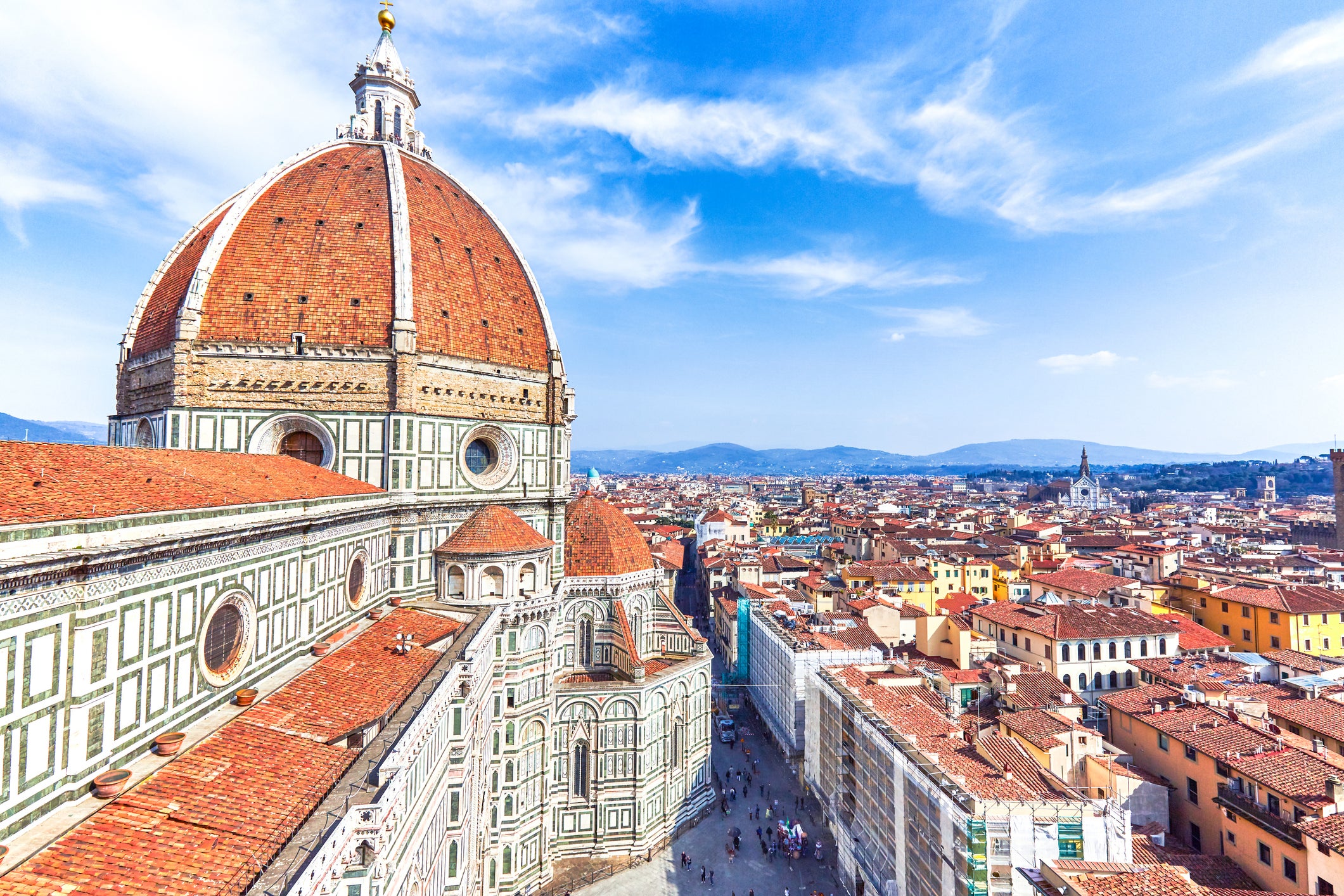
Note that while you can find various price points around the country for lodging, dining and activities, typically, costs are lower in southern Italy than in northern Italy.
Related: Northern or southern Italy: Which is right for your vacation?
2. Pick the right season
In general, Italy has wonderful weather. Many areas of the country see lots of sunshine and temperatures are mild even in winter, though summers can be steamy. Depending on what you plan to do, make sure to consider the season. Beach visits are best in the summer, though months like May and September see fewer crowds and still have great weather.
Related: These are the best times to visit Italy
Avoid larger, crowded cities like Rome in the heart of summer, unless you're prepared for extreme heat. Harvest season/autumn is the ideal time to visit the wine region, and southern Italy can be mild throughout the winter. Many deals can be found in the low season, but know that winter in the north can be cold and rainy.
If you do go to Italy between March and October, bring sunblock and a hat -- don't underestimate those Mediterranean rays.
3. Do your research when it comes to tourism
Although Covid-19 has put a dampener on tourism, during busier times, attractions like the Vatican may see up to 30,000 visitors per day. That means you may have to wait a long time in line to buy a ticket and enter. Add Rome's scorching sunshine to the mix and you may end up sunburned, exhausted from queuing all day and never get the chance to step foot in the Sistine Chapel.
If visiting big-name tourist attractions is important to you, buy tickets online. Skip-the-line tickets or guided tours may also be worth the price: evaluate your options and decide.
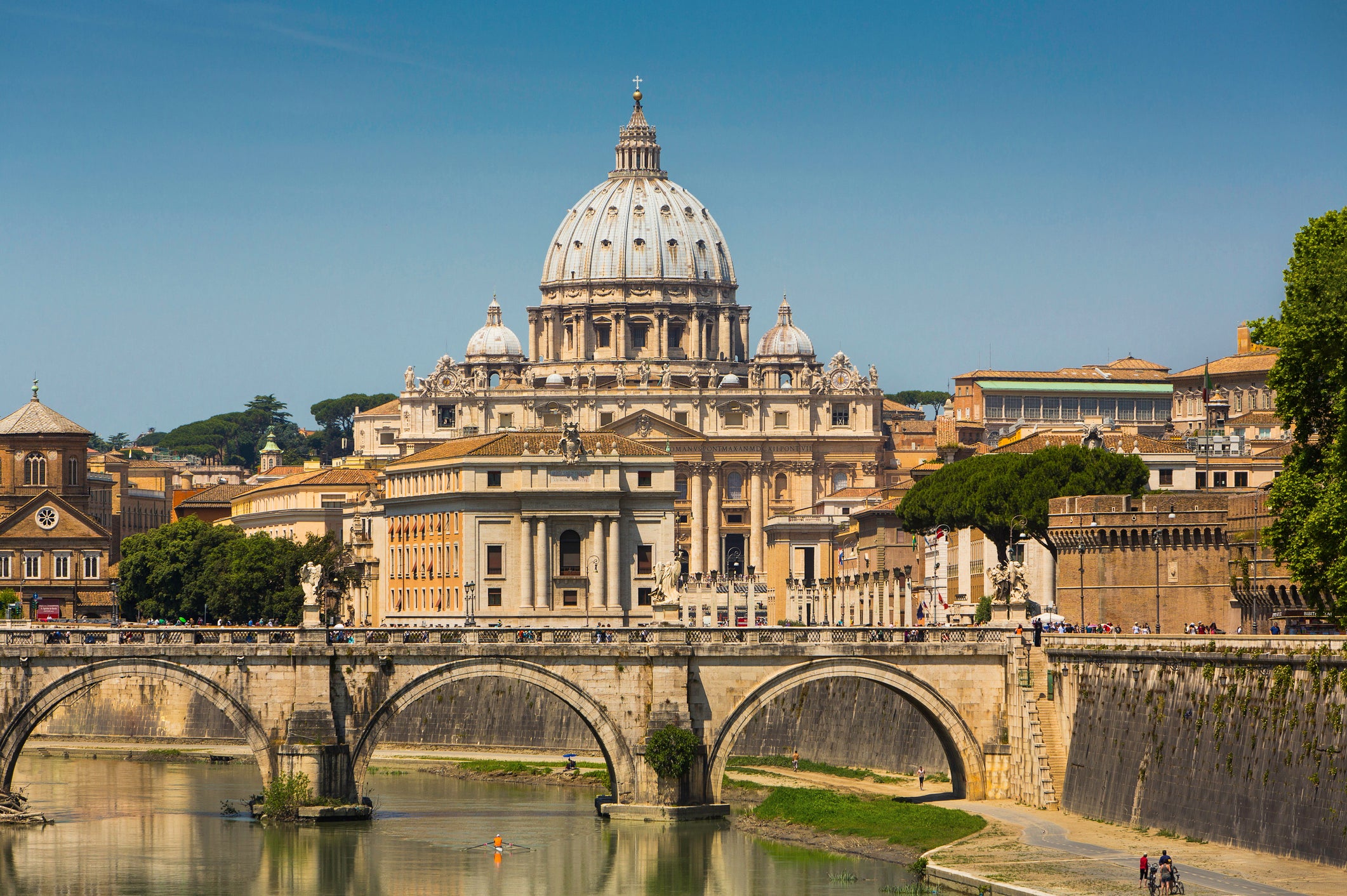
City passes are another alternative. The Milan city pass offers things like discounts on popular attractions, free Milan public transport and a free drink at a local Milanese bar. The Rome tourist card has fast-track entry benefits and free access to the Vatican and the Colosseum. Florence's city pass includes skip-the-line entry to Galleria degli Uffizi and Galleria dell'Accademia, plus tickets for the hop-on, hop-off bus tour.
So, think about what you want to do and see, do the maths and purchase ahead.
4. But don't forget about local spots too
Visiting Italy's most famous attractions should hold a firm spot on your bucket list. That being said, plan to take some time to get off the tourist track a bit. Consider exploring more local neighborhoods or visiting a small village or a less-popular spot like Lake Maggiore instead of Lake Como. Seeing all the big-name hotspots is a must, but experiencing the beauty of true Italian culture and cuisine may be even better.
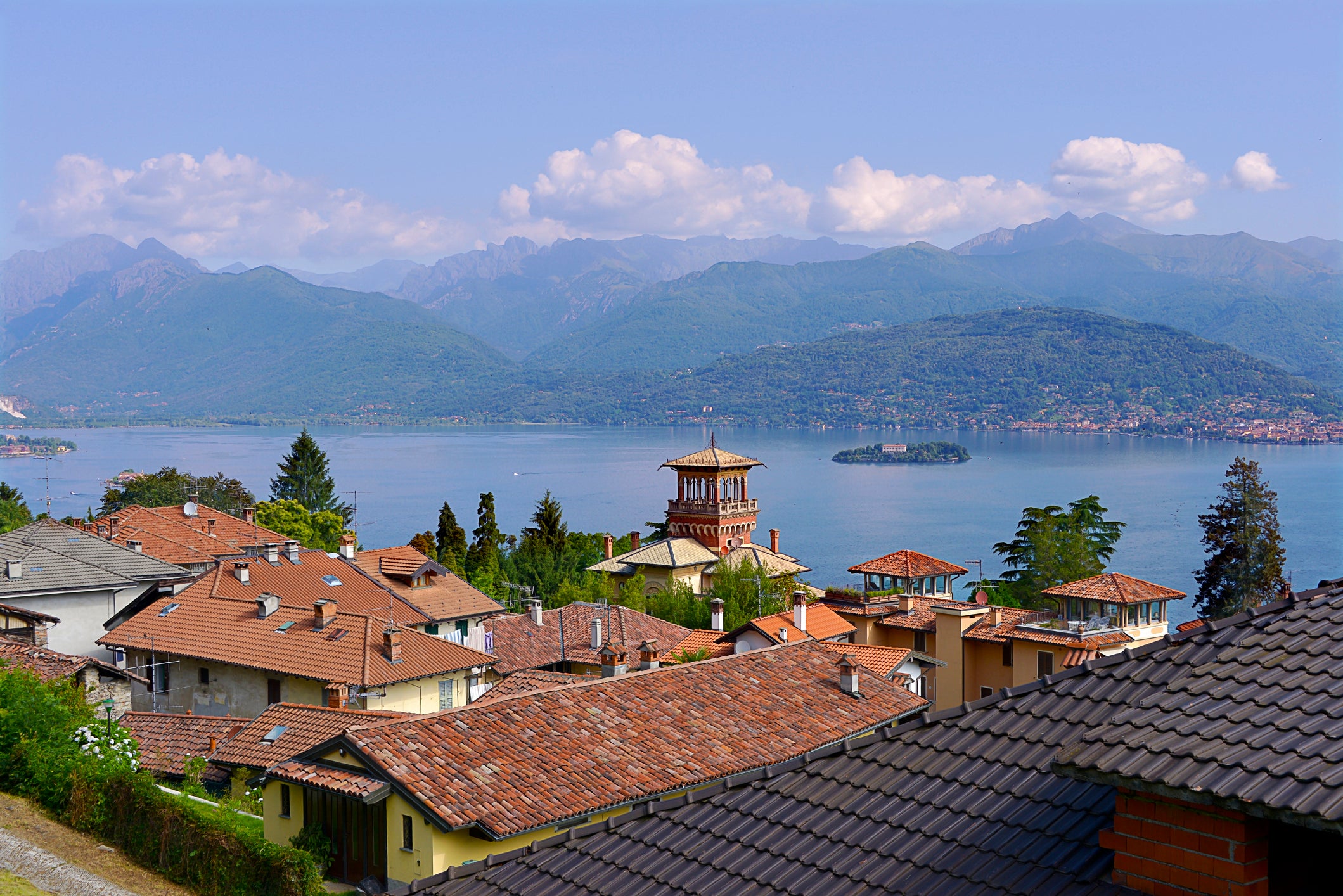
Related: 5 of Italy's best-hidden gem cities
5. Take the train
The Freeciarossa runs between some of Italy's best destinations. These high-speed trains from company Trenitalia are affordable, fast and comfortable. Traveling up to about 180 miles per hour, trains are one of the best and quickest ways to get from A to B. And, you won't have to deal with learning the Italian rules of the road or the hassle of car rental agencies. Taking the train is easy: You can purchase tickets easily online ahead of time or last minute depending on your travel style. You can visit spots like Milan, Rome , Florence, Venice, Turin and Naples on the Frecciarossa trains.
6. Don't discount the islands
Italy's island culture goes beyond just the beach. And, there are over 450 of them! Sicily has a whole sub-culture of its own, and far-flung spots like the Tremiti islands or the Aeolian islands will ensure you get sufficiently off-the-beaten-path . If it's luxury you desire, Sardinia's Costa Smeralda is a hotspot and nothing looks sexier on an Instagram feed than Capri.
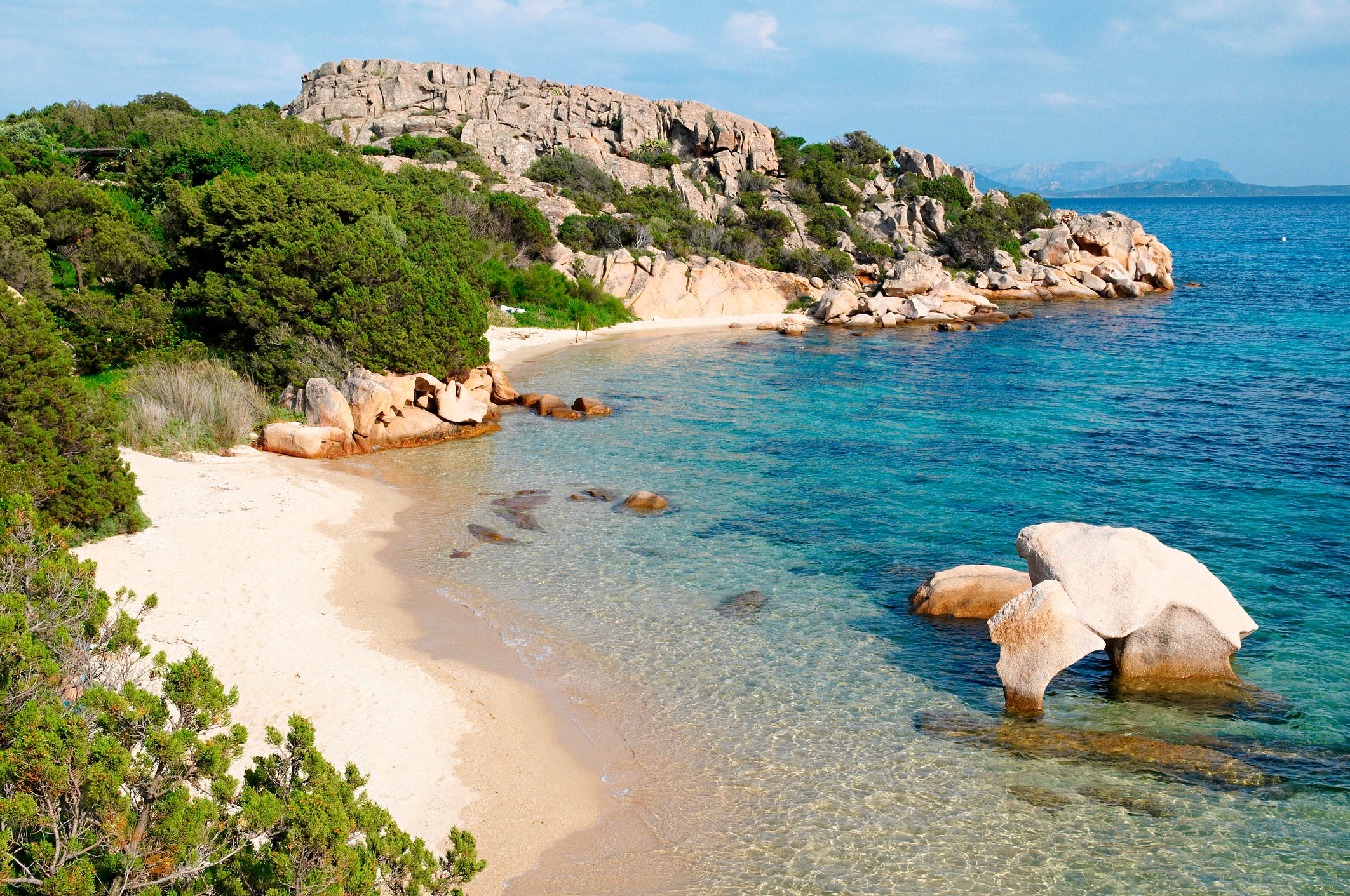
Related: Which of the Italian islands is best for your vacation ?
7. Familiarize yourself with the language and culture
You might get lucky when it comes to a larger city like Rome, where many locals speak English.
Southern Italy or smaller villages are a different story. Luckily, Italians are a friendly bunch and will do their best to communicate with you despite any language barriers. Come prepared with a few key phrases and your favorite translation app downloaded.
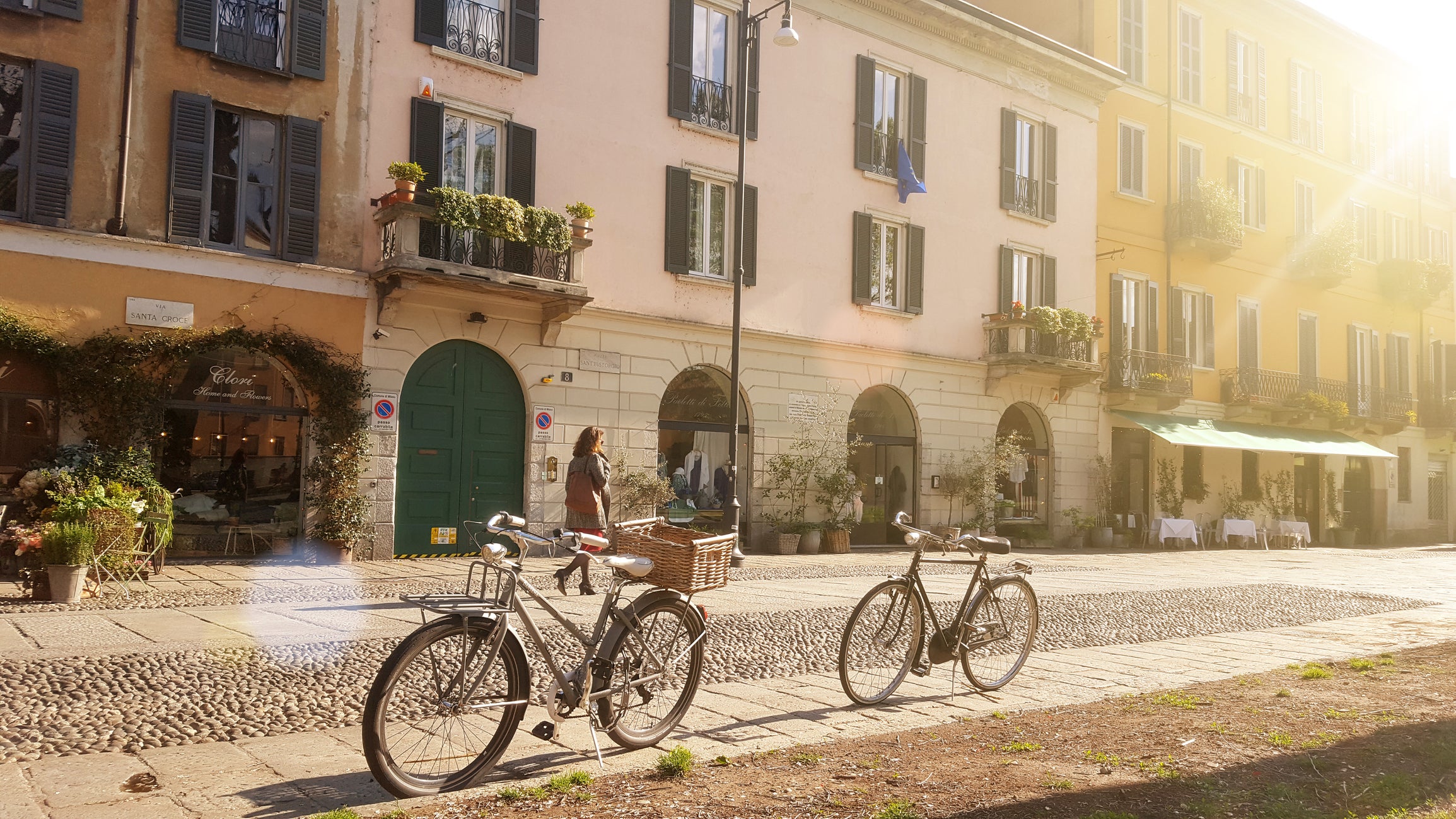
Italy is old, and so are its streets. Many are made of cobblestone. While locals (Milan, here's looking at you) may jog by in designer stilettos, you should wear comfortable footwear. Make sure to dress modesty, especially when visiting churches. You won't be allowed into spots like Vatican City if your knees and shoulders aren't covered.
While mealtimes aren't quite as late as Spain's, Italians tend to eat slightly later. Expect lunch around 1:00 p.m., and dinners around 8:30 p.m. or 9:00 p.m.
8. Money-saving tips
While it's normal to make a tourist faux pas or two (especially on your first trip), here are some things you should avoid:
- Tipping at restaurants if it's already included on your bill (many spots add in a 10% service charge).
- Heavily tipping taxi drivers (rounding up to the nearest euro is normal).
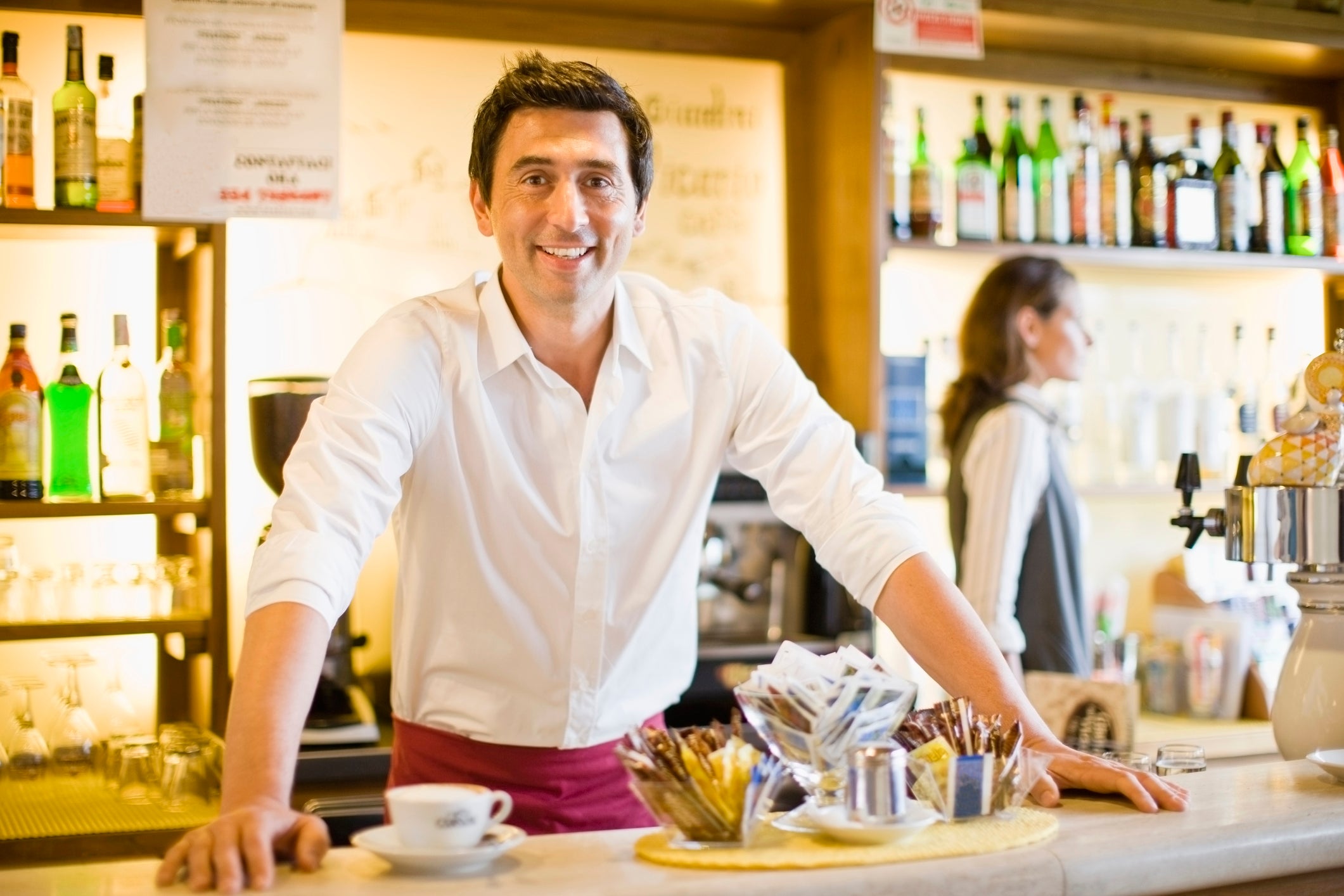
Save even more money with the following:
- Take advantage of apertivo hours in northern Italy. These are happy hours that offer free buffet food for a few hours pre-dinner time in the early evening. Order a drink or two to gain access to the snacks.
- Stand at the bar to drink your espresso. Table seating at breakfast has an additional charge, and even more if you want to eat outside.
- Beware of the "coperto." This is a service charge for simply eating at the restaurant , usually a euro or two per person.
- Don't eat or drink in the main city square. These spots are usually overpriced tourist traps.
Related: 7 underrated regions in Italy for food and wine
9. Be alert for travel scams
Watch out for those trying to take advantage of unsuspecting tourists with scams :
- Pickpockets;
- Gladiators: If you take a photo of or with them, they'll expect a tip;
- Taxi scams: Insist the meter be turned on, or make sure you're aware of any flat-rate pricing;
- Unauthorized tour guides or ticket helpers at train stations; and
- Anyone who approaches you with lavender, flowers or a pizza box. Just walk the other way.
Bottom line
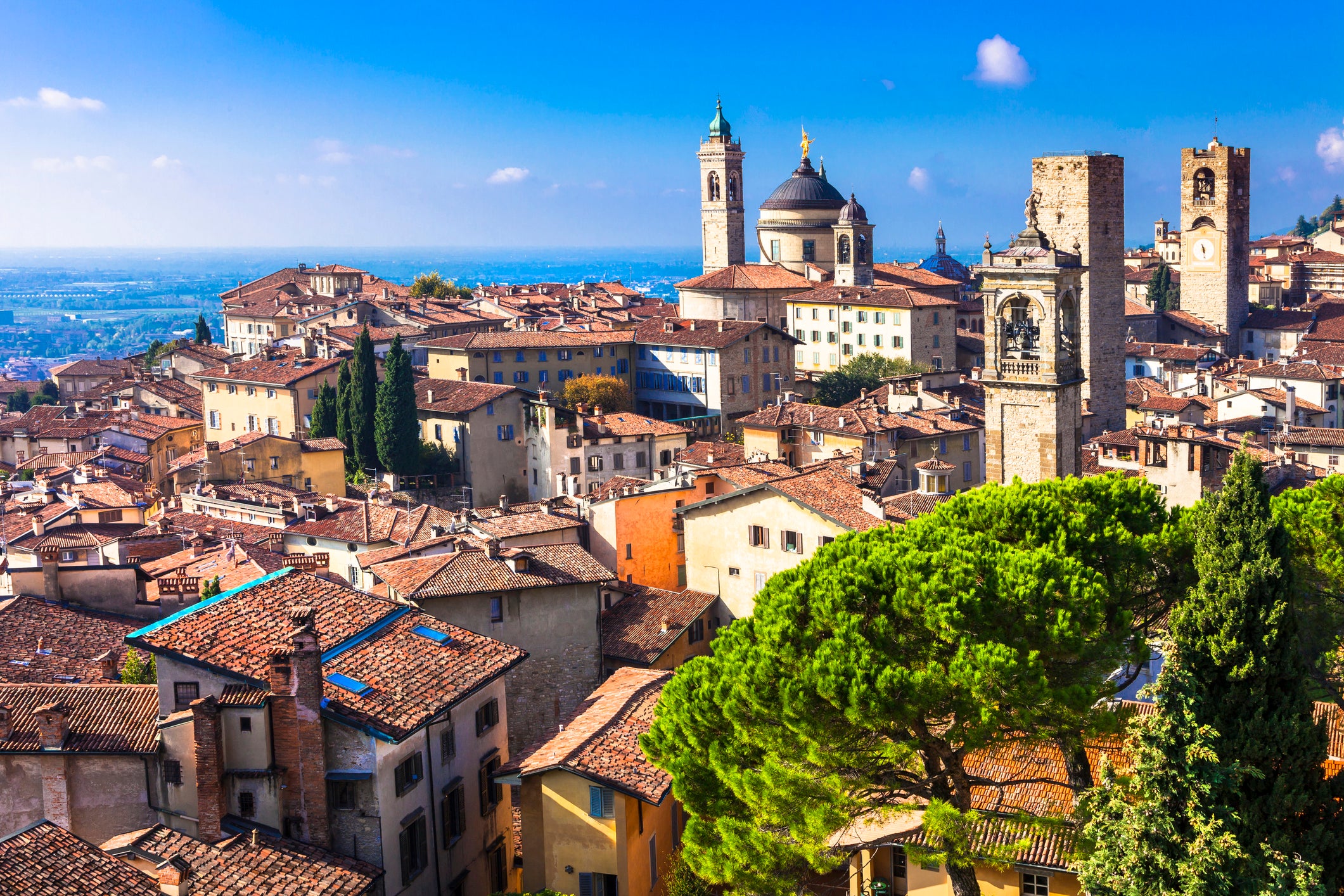
Armed with these tips and tricks, planning a trip to Italy will be easy. You can sit back, relax and enjoy all the delights Italy has to offer, knowing that you've picked the right destinations, will skip the line to see those bucket-list tourist attractions, avoid scams and save a little money on meals.

- [ June 5, 2024 ] Review: Beond, all Business Class leisure airline (Zürich to Maldives) Uncategorized
- [ June 3, 2024 ] Top 10 best luxury hotel brands in the world Top 10 lists
- [ May 31, 2024 ] One&Only Kea Island, Greece, is now open Travel news
- [ May 29, 2024 ] Review: Condor A330neo Business Class Prime Seat (Cancun to Frankfurt) Flight reviews
- [ May 27, 2024 ] Top 10 airlines offering Business Class “Plus” Top 10 lists
A travel guide to Italy

What’s not to love about the boot-shaped Mediterranean country of Italy? Located in Southern Europe, Italy received 64 million tourists in 2019, making is the fifth most visited country in the world (after France, Spain, the USA and China). Travelers mainly visit Italy for its rich culture, world-class cuisine, passionate people, trendy fashion, ancient monuments, and picturesque villages. Besides its art treasures, Italy also features magnificent landscapes, which include spectacular coastlines, Alpine lakes and breathtaking mountains. The country is also home to the greatest number of UNESCO World Heritage Sites in the world. From the Italian Riviera and Grand Canal of Venice in the North to the breathtaking Amalfi Coast and Pompeii ruins in the South, Italy offers something for everyone.
Get the most out of your (luxury) trip to Italy with my travel guide. Find out more about:
- Best time to visit
- How to get there
- Travel requirements
- Getting around
- Inspiration, highlights, & travel tips
- Suggested itineraries
- Recommended luxury hotels (+ reviews)

BEST TIME TO VISIT – ITALY TRAVEL GUIDE
The best time to visit Italy are the months of May, June, and September. Compared to the peak summer months of July and August, these months offer more comfortable temperatures and there are fewer crowds (except around Easter). The country experiences four classic seasons per year, although there is a marked difference between the wetter, cooler North and the drier, warmer South. The rainiest months pretty much everywhere are usually October and November.
- Spring (April-June): temperatures start to warm up, although it’s still advisable to wear layers in case of colder spells. It’s a fantastic time to go to Italy for most travel interests and destinations. Spring makes up part of the shoulder season, lying just before the busy peak season.
- Summer (July & August): the heat can be grueling, particularly in the South. August is also when many Italians take their summer vacations, so big cities tend to be quiet (with discounted hotel prices), while beach and mountain resorts are jammed (with higher hotel prices).
- Fall (September – November): temperatures cool down gradually, although September is usually still very pleasant. Expect crisp fall leaves and some sunnier days, but plan for wet weather too. Fall carries many of the same benefits as spring, but with slightly less predictable weather.
- Winter : temperatures in the South remain mild in winter, while Northern Italy is normally wet and cold. Winter in the Italian Alps is fantastic though for skiing and snowboarding, but the ski resorts do get crowded so book early.
HOW TO GET THERE – ITALY TRAVEL GUIDE
Travelers wishing to visit Italy can use a bus, train, plane, or boat to get there. Most tourists arrive by plane though, often landing in Rome’s Leonardo da Vinci–Fiumicino Airport, the country’s busiest airport. This is the preferred point of entry in Italy when you want to visit Rome, or tour the entire country. Click here for a continuously updated list of airlines that offer direct flights to Rome.
Although Rome is the main getaway for most visitors to Italy, it’s often easier and cheaper to fly directly to/from one of the country’s other airports . It can also save you a lot of time to book a multi-city ticket, hereby arriving in one airport and leaving from another (for example fly in via Milan in the north and fly out via Naples in the south). The following airports are of interest for most tourist itineraries:
- Milan Malpenza Airport (north) is the largest international airport in the Milan metropolitan area in northern Italy (and also the main getaway to the Italian Lakes). Click here for a continuously updated list of airlines that offer direct flights to Milan.
- Venice Marco Polo airport (north) is the international airport of Venice. It offers flights to many European metropolitan areas as well as some partly seasonal long-haul routes to the United States, Canada, South Korea and the Middle East. Click here for a continuously updated list of airlines that offer direct flights to Venice.
- Naples Airport (south) is the international airport serving Naples and the Southern Italian region of Campania (which is also home to the Amalfi Coast). Click here for a continuously updated list of airlines that offer direct flights to Naples.
- Catania Airport (Sicily), also known as Vincenzo Bellini Airport, is the main getaway to Sicily and the the sixth busiest in Italy. Click here for a continuously updated list of airlines that offer direct flights to Catania.
Before you buy your plane ticket to Italy, consider reading my tips & tricks for buying the cheapest plane ticket so that you can save a few bucks.
TRAVEL REQUIREMENTS – ITALY TRAVEL GUIDE
Requirements for entry into Italy differ from country to country, and are subject to change. Prior to departure, always check with your government and your nearest Italian embassy or consulate what documents you need for travel to Greece.
- Citizens of the European Union are required to present a valid ID for entry into Italy.
- Citizens of Australia, Canada, New Zealand, South Africa, the United States, and almost all non-E.U. countries are required to have a valid passport valid for at least 90 days beyond the intended date of departure.
- For stays longer than 90 days, all non-E.U. citizens will need a visa.
Make sure you read my 10 tips to plan a worry-free trip .
GETTING AROUND – ITALY TRAVEL GUIDE
Once in Italy, you’ll have a good choice of affordable and efficient transport options:
- To best way to get around in Italy is by car . All major car rental agencies have offices in the main cities and airports. To rent a car in Italy, you must be at least 20 years old and have a valid driver’s license. Overall, renting a car in Italy is more expensive than using the public transport (see below), unless you are traveling with a larger group. When driving in Italy , especially in the busy cities, you really do need to keep your nerve about you as the Italian style of driving is chaotic. Tip: on most motorways or autostrade (singular: autostrada) there is a toll to pay — cash or by credit card — but superstrade an other major national roads are free.
- Italy’s railway system is good and inexpensive. Owned by the state, it’s called Ferrovie dello Stato (abbreviated FS), but trains are operated under the brand name “Trenitalia”. Most trains carry first and second class. First class seats often recline, there are fewer seats per car, and there is more space for luggage. On some Premier Trains, the price of a first class ticket includes a meal. Second class accommodations are less expensive, but not as spacious, as there are more seats per car. Seat reservation is now compulsory on faster trains ( i.e. Eurostar, EuroStarCity, and InterCity). On other, slower categories of trains (Regionale, Suburbano) it is not possible to reserve seats. To book your train ticket online, visit the Trenitalia website.
- If you are travelling around Italy by train, it is more than likely you will need to use a bus at some point. Nearly all places are connected by some kind of bus service, but in remote towns and villages schedules can be sketchy and are reduced, or even non-existent, at weekends. Bus terminals (autostazione) are often conveniently located next to the train station. In smaller towns and villages, most buses pull in at the central piazza.
- Air Dolomiti
- Blue Panorama
INSPIRATION, HIGHLIGHTS, & TRAVEL TIPS – ITALY TRAVEL GUIDE
There are so many reasons why you should put Italy on top of your bucket list and visit the country at least once during your lifetime. Here are just some of Italy’s highlights:
- Touring historic cities like Rome, Florence and Venice
- Hiking in the Dolomites
- Relaxing on the beaches of Sardinia and Sicily
- Exploring the Vatican
- Visiting the Amalfi Coast & Capri
- Getting lost in Tuscany’s villages and countryside
- Admiring the scenery of the Italian Lakes (e.g. Lake Como)
My following, in-depth articles may also inspire you and help you plan your holiday to Italy:
- Top 10 most beautiful villages in Italy
- Top 10 best things to see & do on the Amalfi Coast
- Tips & tricks for getting the best deal at a luxury hotel
- Tips & tricks for buying the cheapest plane ticket
SUGGESTED ITINERARIES – ITALY TRAVEL GUIDE
It’s impossible to suggest one itinerary for Italy, but based on my own frequent holidays in the country, I hereby share a schedule which is great if you want to take in the country’s highlights in three weeks:
- Recommended hotel: Aman Venice
- Recommended hotel: Forestis
- Recommended hotel: Il Sereno
- Recommended hotel: Four Seasons Florence
- Recommended hotel: Portrait Roma
- Recommended hotel: Belmond Caruso
If you have more time, I suggest you also explore the country’s islands Sardinia or Sicily.
For the planning of your own travel itinerary in Italy, I highly recommend the excellent itineraries as provided by Frommers , The Lonely Planet and Rough Guides .
RECOMMENDED LUXURY HOTELS (+ REVIEWS)
Read my top 10 lists if you are eager to know how I rank Italy’s top hotels, based on my own experience:
- Top 10 most fabulous luxury hotels in Italy
- Top 10 most stunningly beautiful hotels on the Amalfi Coast
- Top 10 best hotels on the the Italian Lakes
Below, you find my reviews of hotels in Italy (with pros, cons, and tips to save money per hotel).

*** Follow me on Instagram , Youtube , Twitter or Facebook for a daily moment of travel inspiration ***
Share this:
- Click to share on Facebook (Opens in new window)
- Click to share on Twitter (Opens in new window)
- Click to share on WhatsApp (Opens in new window)
- Click to email a link to a friend (Opens in new window)
- Click to print (Opens in new window)
- Click to share on LinkedIn (Opens in new window)
- Click to share on Tumblr (Opens in new window)
- Click to share on Reddit (Opens in new window)
- Click to share on Telegram (Opens in new window)
- Click to share on Pinterest (Opens in new window)
CADA DIA ESTÁ MELHOR O BLOG. Parabéns….
you are the best person in the world.
I’m always on the lookout for unique travel experiences, and this blog delivers! I appreciate how you go beyond the typical tourist spots and uncover hidden gems. Your recommendations for local activities, cultural events, and lesser-known attractions are priceless. Thank you for helping me discover new and exciting places!
Leave a Reply Cancel reply
This site uses Akismet to reduce spam. Learn how your comment data is processed .
© The Luxury Travel Expert 2024

35 Best Travel Guide Books for Italy to Read
Hey there, fellow traveler! This expertly curated selection of the best Italy travel books will help you navigate the country’s breathtaking landscapes, rich history, and delicious cuisine.
Even in this digital age, there’s something magical about turning the pages of an Italy guidebook . It’s more than just collecting facts and figures – it’s about savoring the anticipation, picturing yourself in the most beautiful places, and preparing for the Italian journey of a lifetime .
This post contains affiliate links. When you buy something through one of the links on our site, we may earn an affiliate commission at no additional cost to you.
Top Picks: Best Travel Books for Your Italian Adventure
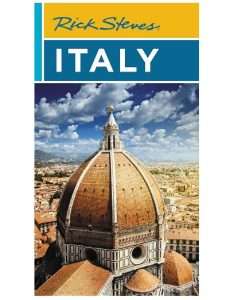
Rick Steves Italy
A thorough, immersive guide for Italian travel , recommended for its blend of iconic sights and hidden gems.
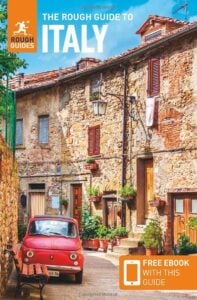
The Rough Guide to Italy
Discover abundant off-the-beaten-path recommendations . The perfect guide for travelers who want to delve deeper into Italy’s hidden corners .
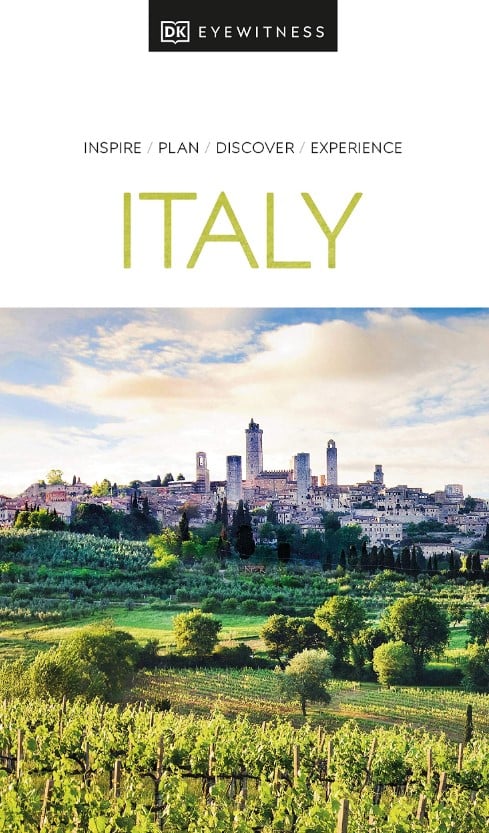
DK Eyewitness Italy
Rich in historical context and stunning visuals.
It enables travelers to appreciate Italy’s rich history and culture on a deeper level.
Keep reading to uncover the rich tapestry of Italy’s unique regions, sample its delectable cuisine, and bask in its timeless architecture, all from the comfort of your home.
The list of Italian travel guidebooks below is structured into two main sections :
- All-Encompassing Italian Travel Books
- Area-Specific Travel Guides
Each book will be reviewed based on a brief description, pros and cons, and the type of audience it’s most suitable for. Let’s start exploring!
Recommended Reading : Discover our detailed guide on the 21 Safest Cities in Italy for Travelers & Expats.
All-Encompassing Best Travel Guidebooks
1. rick steves italy travel guide.
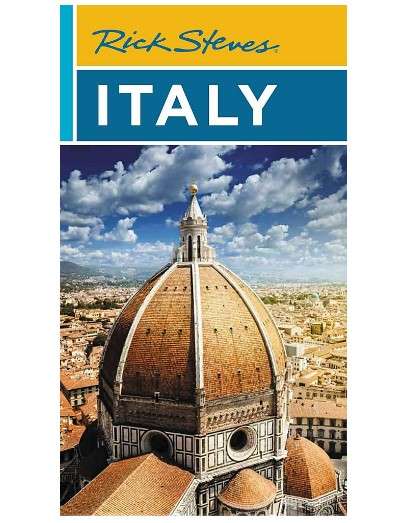
Rick Steves Italy is an invaluable travel companion for anyone venturing into Italy’s breathtaking landscapes and vibrant cities. Rick’s guide is packed with comprehensive, up-to-date information for planning an unforgettable multi-week trip to Italy.
It introduces readers to top sights and hidden gems , from iconic architectural wonders like the Colosseum and Michelangelo’s David to cozy corner trattorias serving delicious Italian cuisine.
- Offers strategic advice on maximizing time and budget .
- Provides candid insights to beat crowds, skip lines, and avoid tourist traps.
- Suggests the best places to eat, sleep, and experience “ il dolce far niente .”
- Contains self-guided walking tours of lively neighborhoods and museums.
- Equips travelers with vital trip-planning tools.
- Includes detailed maps , including a fold-out map for on-the-go exploration.
- Lightweight design with over 1,000 pages, making it portable without compromising content.
- A considerable amount of information could be overwhelming for some readers.
- The “bible-thin” pages might be fragile and prone to tearing.
Suitable for:
Rick Steves Italy is ideal for seasoned travelers and those new to Italy, particularly those looking to immerse themselves in local culture. It’s also perfect for anyone planning a long trip and needing an in-depth guide to the country’s many offerings.
The book’s inclusion of COVID-related travel info makes it especially relevant in the current travel landscape.
Recommended Reading : Master essential Italian phrases for travel with our 135 basic phrases and PDF cheat sheet.
2. DK Eyewitness Italy (Travel Guide)

The DK Eyewitness Italy (Travel Guide) is a comprehensive and immersive tool that transports you to the beauty of Italy – from its breathtaking natural landscapes and UNESCO World Heritage Sites to the variety of its gastronomic traditions.
It uncovers the depth and diversity of Italy , presenting not just the acclaimed sights but also the hidden gems in this splendid country. With a beautiful blend of expert insights, practical advice, vivid photographs, and hand-drawn illustrations, this guide is an all-inclusive ticket to a memorable Italian journey .
- Offers a fully illustrated guide on top experiences and hidden gems.
- Includes accessible itineraries to optimize your daily exploration.
- Provides honest and expert advice on safety, timings, preparations, and cost savings.
- Features color-coded chapters covering every part of Italy.
- Gives practical tips on the best dining, shopping, and accommodation places.
- Contains detailed maps and walking routes for easy navigation.
- Overwhelming information could be daunting for some readers.
- The large scope of coverage may not suit travelers focusing on a specific region.
The DK Eyewitness Italy (Travel Guide) is an ideal pick for both seasoned and first-time visitors to Italy seeking a comprehensive overview of the country’s landmarks and hidden gems.
The guide’s practical advice and detailed itineraries make it a valuable resource for individuals looking for a well-planned, immersive experience. Also, art enthusiasts , nature lovers , and food connoisseurs will find this guide particularly enriching.
Seeking the perfect tribute to Italy? Check out our article 75 Italian Gifts for Italy Lovers: Best Gift Ideas for the ultimate gift guide.
3. Lonely Planet’s Italy (Travel Guide)
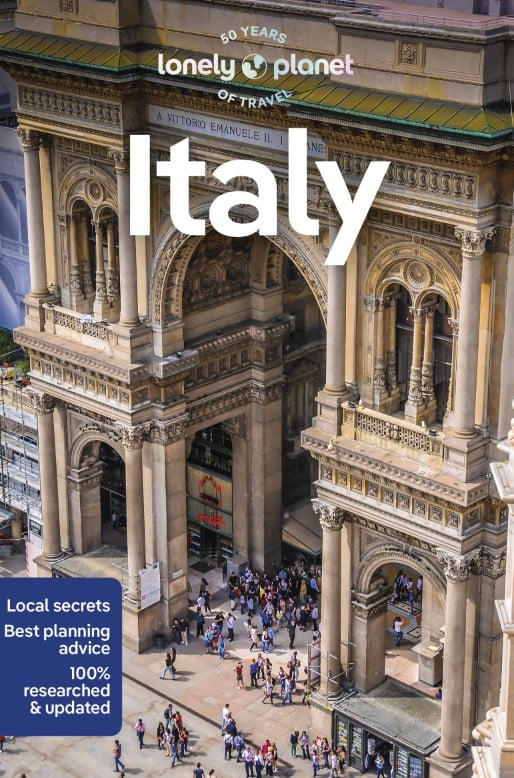
Italy is such an amazing place, and as one of the most in-depth guides available, Lonely Planet’s Italy offers an extensive exploration of Italy’s rich tapestry.
From traversing the beautiful ruins of Pompeii and enjoying a Tuscan wine tour to uncovering the picturesque Italian Riviera’s hidden gems, this book is your reliable travel buddy . It’s packed with the best and lesser-known experiences, making your Italian adventure unforgettable.
- Provides tailored itineraries catering to personal interests and needs.
- Delivers enriching local insights into history, culture, landscapes, and politics.
- Presents a visually inspiring collection of the top amazing experiences.
- Highlights regional dishes and drinks for an ultimate gastronomic journey.
- It gives insider tips to save time and money and avoid tourist traps.
- Offers planning tools for solo, LGBTQIA, family, and accessible travel.
- Features colorful maps and images throughout the guide.
- Includes essential language phrases and helpful travel tips.
- The extensive coverage might be too much for travelers focusing on a specific region.
- The size and weight may make it less portable.
Lonely Planet’s Italy is perfect for any traveler, whether a seasoned adventurer or a first-time visitor. Its well-rounded and inclusive approach also makes it suitable for solo, LGBTQIA, and family travelers and those seeking accessible travel advice.
If you’re a food lover or a history buff, this guide is advantageous, given its focus on regional cuisines and historical insights.
4. Glam Italia! How To Travel Italy: Secrets To Glamorous Travel
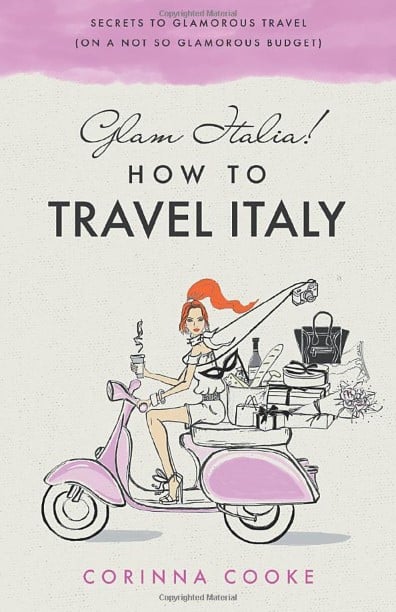
Penned by Italian travel guide and blogger Corinna Cooke, Glam Italia! How To Travel Italy is a comprehensive guide aimed at helping you design a personalized, memorable, and affordable vacation in Italy.
The book is packed with insider tips , from appreciating Italy’s art, cuisine, and landscapes, to navigating its fashion scene.
The author’s step-by-step methods for trip planning, regional cuisine, wine lists, the best time to visit (peak season and off-season), and cost-effective flight booking tips are thoughtfully designed to enhance your Italian journey. Whether planning to travel lavishly or on a budget, this guide offers priceless advice to enjoy Italy like a local.
- Provides detailed, step-by-step methods for planning your trip.
- Includes comprehensive lists of regional cuisines and wines.
- Offers practical advice on flight booking to save money.
- Gives precautionary tips for safe and healthy travel.
- Emphasizes local advice for a genuine Italian experience.
- As the book was published in 2018, some information might be outdated.
- While enjoyable, the cultural immersion aspects may not suit readers seeking strictly logistical advice.
Glam Italia! How To Travel Italy is perfect for anyone who dreams of an Italian vacation , whether they’re first-time travelers or experienced explorers.
The book’s emphasis on experiencing Italy as a local and its cost-saving tips make it a fitting choice for those traveling on a budget and individuals seeking an authentic, immersive cultural experience.
5. Frommer’s Italy (Complete Guide)
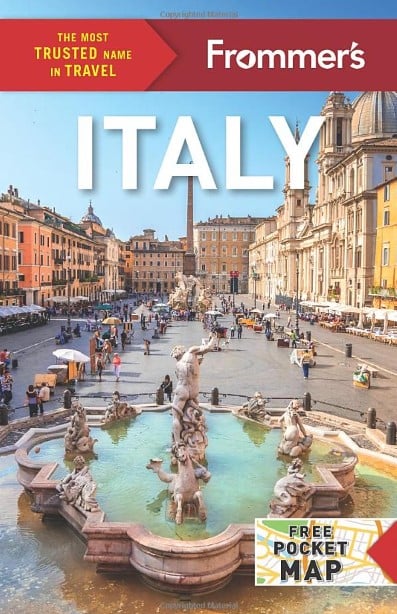
The completely revamped Frommer’s Italy , a trusted name in travel, serves as a thorough and opinionated guide for your Italian escapade. It provides well-researched , valuable information for walking through the ancient ruins of Pompeii, cruising the Venice canals, admiring Renaissance masterpieces in Florence, or exploring less-traveled places like Puglia.
Suggested Reading : Discover the best Pompeii tours from Rome – 20 curated day trips to step back in time.
The guide makes you appreciate the la dolce vita in Rome and uncovers timeless marvels like Tuscan vineyards and the cliff-edge towns of the Amalfi Coast.
- Includes full-color photographs and handy maps , with a removable fold-out map for ease of use.
- It contains meticulously crafted itineraries to optimize your trip planning.
- Provides intriguing cultural insights into Italy’s history, cuisine, and traditions.
- Honest reviews with a star rating system for a quick understanding of what’s worth your time and money.
- Offers up-to-date practical information such as transportation details, useful websites, and healthcare options.
- Comes with budget-planning tools, including precise pricing and money-saving tips for travelers on a wide range of budgets.
- Being an opinionated guide, it might only align with some readers’ tastes or preferences.
- Comprehensive and detailed, it might be overwhelming for travelers seeking a brief, casual overview.
Frommer’s Italy (Complete Guide) is ideal for travelers seeking a comprehensive, culturally rich guide to Italy . Whether you’re an avid history buff, a food enthusiast, or a leisure traveler looking to soak up Italy’s landscapes and cities, this guide provides comprehensive coverage.
Thanks to its wide range of money-saving tips and diverse itinerary options, it’s perfect for budget-conscious travelers and those seeking luxury.
6. Fodor’s Essential Italy (Full-color Travel Guide)
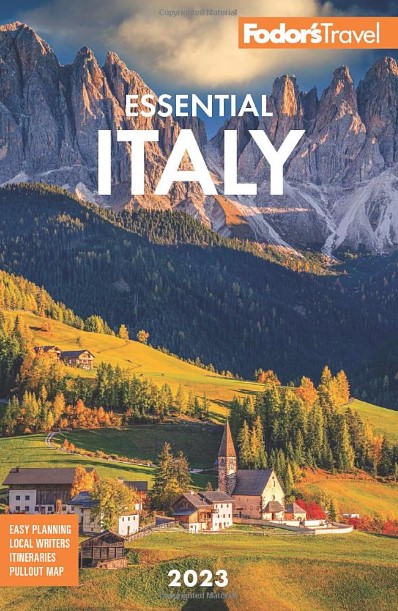
Fodor’s Essential Italy is a detailed travel guide crafted with love and expertise by local travel connoisseurs . This comprehensive guide aims to transform your journey, whether visiting the historic Colosseum, shopping in Milan’s designer boutiques, or hiking through the picturesque Cinque Terre.
Packed with over 78 detailed maps , a free pull-out map, and vibrant photographs, this guide ensures your Italian adventure is as smooth and fulfilling as possible.
Suggested Reading : Discover the top 10 shopping destinations in Italy : your Italy shopping guide, from luxury fashion to artisanal crafts.
- Features an illustrated guide to the best experiences Italy has to offer.
- Includes multiple well-organized itineraries to maximize your time effectively.
- Offers over 78 detailed maps and a complimentary pull-out map to assist in confident navigation.
- It contains stunning color photos throughout to inspire your travels.
- Presents reliable recommendations from locals on attractions, dining, accommodation, nightlife, shopping, and more.
- Provides photo-rich features on topics like “The Best Ancient Sites in Rome,” “Italy’s Best Beaches,” and more.
- Gives practical trip-planning tools and tips , including the best times to visit and how to save time and money.
- Offers historical and cultural insights into the local people, arts, architecture, and more.
- Special features on landmarks like “T he Sistine Chapel ” and “ Cruising the Grand Cana l.”
- Includes Italian language primers to help you with essential phrases and useful words.
- This guide might be too detailed and extensive for someone seeking a brief overview.
- Those who prefer minimalist design find the guide visually overwhelming.
Fodor’s Essential Italy is a perfect companion for travelers seeking a detailed, locally-informed guide to Italy. It is ideal for history buffs, adventure seekers, food enthusiasts, and cultural explorers. It’s especially beneficial for first-time visitors to Italy , assisting them with language, navigation, and insider recommendations.
7. Italy in Your Pocket!
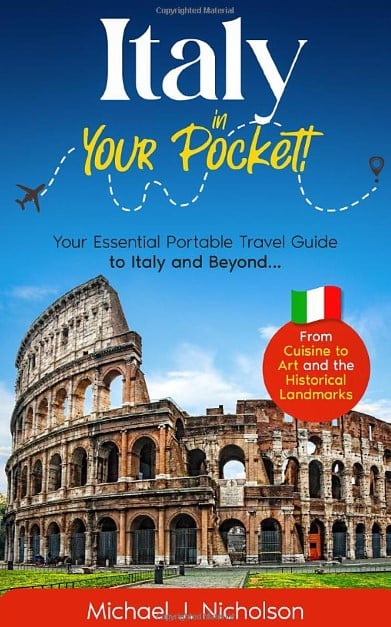
Italy in Your Pocket! is a compact guide that promises to uncover the myriad of Italy’s rich history and vibrant culture. This pocket guide will ensure you won’t miss the charming villages, stunning mountains, bustling cities, or serene countryside.
More than just a tool to navigate Italy’s well-known tourist spots, this guide aims to immerse you in the authentic Italian lifestyle .
Authored by someone who has considered Italy their second home for over two decades, this book is your ticket to uncovering the essence of Italy that locals hold dear.
Suggested Reading : Discover the enchantment of Christmas in Italy with our guide, featuring prime locations and cherished customs.
- Highlights the beautiful contrast between Italy’s rural and urban life.
- Guides on how to avoid tourist crowds and experience the real Italy.
- Reveals off-the-beaten-path outdoor activities, accommodations, and attractions.
- Offers insight into traditional Italian events , customs, and yearly gatherings.
- Provides helpful tips on safety, interacting with locals, and integration into Italian society.
- It may not provide enough detail for travelers looking for a comprehensive guide.
- Readers already familiar with Italy may not find a lot of new information.
Italy in Your Pocket! is an ideal companion for travelers looking to experience Italy beyond the typical tourist perspective. It is perfect for adventure-seekers , cultural explorers, and individuals desiring to mingle with the locals and blend seamlessly into Italian life.
Those who appreciate the convenience and seek a compact, easy-to-carry guide will find this book especially useful.
8. The Rough Guide to Italy

The Rough Guide to Italy is a comprehensive and practical guide to discovering authentic Italy, including hidden gems and renowned hotspots.
Replete with an easy-to-follow, color-coded layout, this guide helps you effortlessly plan your trip from pre-departure to your journey’s end.
It covers regions from Rome and Lazio to Sicily and Sardinia, offering structured lists of all sights and lesser-known treasures. This guide was updated post-COVID-19 and comes with a free eBook for easy accessibility.
- Extensive regional coverage and clear structure within each chapter for easy navigation.
- Recommendations are suitable for all types of travelers, whether seeking adventures in Sicily or family activities in Tuscany.
- Provides practical travel tips , including pre-departure information, tips for traveling with children, sports and outdoor activities, festivals, culture, etiquette, and more.
- Time-saving itineraries and detailed routes showcase the richness and diversity of Italy.
- Offers insights into getting around like a local, with tips on beating crowds, saving time and money , and finding the best local spots.
- Full-color photography and color-coded mapping for visual appeal and easy orientation.
- It may overwhelm first-time travelers due to its comprehensive nature.
- Some travelers might prefer a more focused guide tailored to specific cities or regions.
The Rough Guide to Italy is ideal for first-time and seasoned travelers seeking a comprehensive understanding of Italy’s diverse regions.
Its detailed and wide-ranging content makes it an excellent resource for those with varied interests, such as food and drink, festivals, outdoor activities, and cultural exploration. Furthermore, this guide benefits travelers who appreciate planning their trip in detail with time-saving itineraries and expert recommendations.
9. Michelin Green Guide Wine Trails of Italy: Travel Guide
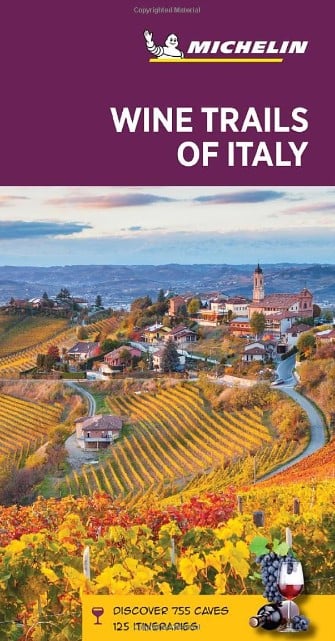
The Michelin Green Guide Wine Trails of Italy offers a fascinating tour through Italy’s wine regions . This guide covers 125 driving tours that take you to Italy’s renowned wineries, charming towns, villages, and captivating countryside.
It introduces you to the art of Italian wine-making , tasting, and serving. It encourages you to delve into Italy’s rich history, culture, and, unquestionably, its delectable wines.
Suggested Reading : For wine lovers in Bologna, don’t miss the Best Wine Tours & Tastings .
- Provides 125 driving tours offering a comprehensive exploration of Italy’s wine regions.
- The book offers insights into Italian wine : its creation, tasting, and the art of serving it.
- Uses a star-rating system for points of interest, facilitating decision-making.
- Features well-researched recommendations for accommodation and dining options .
- Encourages discovery of Italy’s history, culture, and, of course, its wines.
- It might not appeal to readers who are not interested in wine.
- It could be overwhelming for those seeking a less comprehensive guide.
The Michelin Green Guide Wine Trails of Italy is perfect for wine connoisseurs and enthusiasts, individuals interested in Italian culture and history, and anyone looking for an immersive, off-the-beaten-path exploration of Italy’s wineries and vineyards.
This guide will also appeal to those who enjoy self-guided driving tours and exploring new cuisines and dining experiences.
10. ITALY Made Easy for Seniors: An Alternative to the Escorted Tour
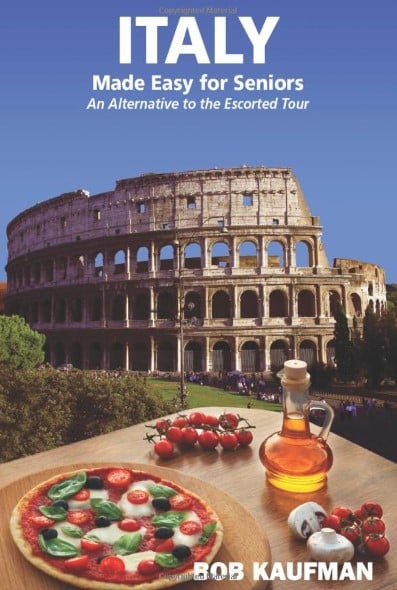
Authored by Bob Kaufman, the president of National Travel Vacations for 30 years, ITALY Made Easy for Seniors dispels the misconceptions that hinder seniors from experiencing Italy’s charm.
This handy guide includes comprehensive itineraries , covering not just Rome, Florence, and Venice but also hidden gems like Sicily, Puglia, Cinque Terre, and The Lakes.
Suggested Reading : Experience Tour Rome by Golf Cart – Uncover the city’s charm through the best private tours.
With tips specifically designed for seniors , like avoiding hilly areas for accommodation, the book also proves to be an insightful companion for first-time visitors and repeat travelers.
- Covers all major cities beyond Rome, Florence, and Venice.
- Provides practical tips specifically designed for seniors.
- Informs readers about convenient accommodation options.
- Includes “ short and sweet ” historical facts, eliminating the need to carry heavy history books.
- It doesn’t include many color pictures, which might be expected in a travel guide.
- It might not be as relevant to younger travelers or those seeking more adventurous itineraries.
Italy Made Easy for Seniors is ideal for senior citizens looking to explore Italy, particularly those making their first, second, or third trip. It’s also beneficial for anyone looking for a cost-effective and well-planned travel guide to Italy , even if they’re not seniors.
This book is a must-have for anyone yearning to delve into the enchanting Italian culture without worrying about breaking the bank or getting lost in complex planning.
11. Italy: The Best Places to See by Rail (An Alternative to the Escorted Tour)
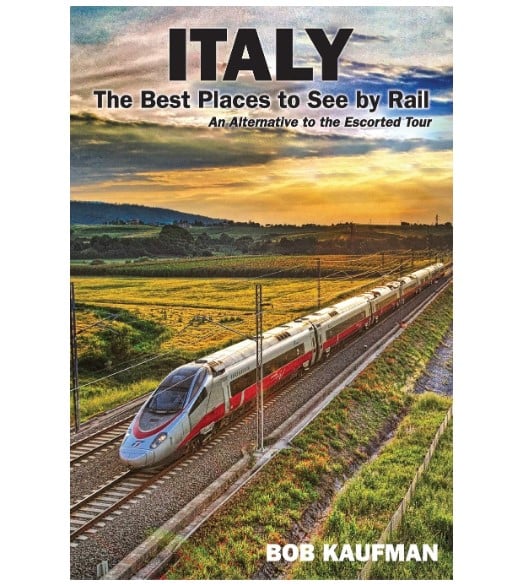
Bob Kaufman’s Italy The Best Places to See by Rail is the ultimate guide for those who yearn for a freestyle yet well-planned journey through Italy without the confines of an escorted tour.
Leveraging his 30 years of experience running National Travel Vacations, Inc., Kaufman presents a refreshing alternative to traditional tours with his cost-effective way to travel by train in Italy .
This book empowers travelers to chart their unique path with five main itineraries covering Rome, Florence, Venice, the Lakes District, and Sicily, along with the Bernina Express over the Alps option.
The book also includes specific details for day trips from various cities and a dedicated chapter on hotel options near train stations for convenience. It is a comprehensive planning tool with relevant website references to secure rail and attraction tickets, helping save time and resources.
- Offers a flexible, budget-friendly alternative to costly and strict escorted tours.
- Presents easy-to-follow, comprehensive itineraries for exploring Italy.
- It provides an accessible format with larger and bolder text, making it easier for seniors to read.
- Includes essential details such as hotel choices near train stations, tourist attraction ticket purchasing, and recommended restaurants.
- Packed with valuable insights derived from almost thirty trips to Italy by the author.
- It might not be suitable for those who prefer the structure and convenience of escorted tours.
- Requires more individual planning and decision-making compared to pre-arranged tours.
Italy The Best Places to See by Rail is ideal for younger travelers who prefer setting their pace, waking up, eating when they want, and spending as much time as they wish on each site.
It benefits those hesitant about driving in a foreign country or feeling confined by escorted tours. With its handy tips and detailed itineraries, this book ensures a rewarding Italian vacation without breaking the bank.
Dive into Italy: Area-Specific Travel Guides
1. rick steves rome travel guide.
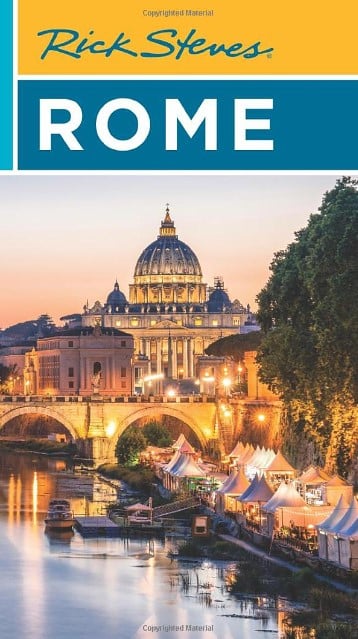
Rick Steves Rome Travel Guide offers a timely, comprehensive resource for travelers navigating the Eternal City. As a trusted source, Rick Steves shares strategic advice on making the most of Rome—from exploring ancient ruins and the Vatican City to experiencing local culture.
The guide includes top sights and hidden gems, valuable tips to dodge tourist traps, best places to eat, sleep, and live “ il dolce far niente ” (the sweet doing nothing).
It offers self-guided walking tours of vibrant neighborhoods and renowned sights, such as Piazza Navona, detailed maps, a helpful packing list, an Italian phrase book, and historical insights. Also included are resources for COVID-related travel information, ensuring a seamless journey.
2. Rick Steves Florence & Tuscany Travel Guide
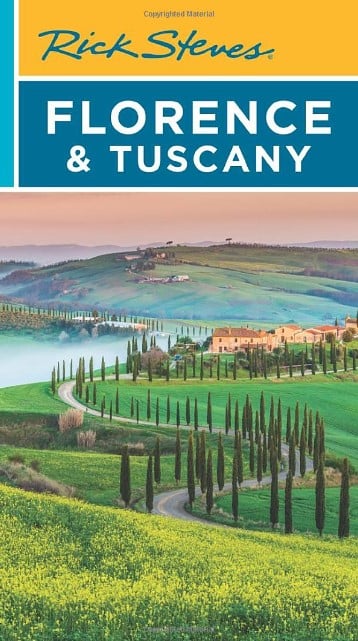
Rick Steves Florence & Tuscany Travel Guide is your quintessential handbook for immersing yourself in the cultural heart of Italy . This fully updated guide steers you through Florence and Tuscany, sharing top sights from the Uffizi Gallery to the Duomo and hidden gems like a centuries-old perfumery.
Suggested Reading : Unleash Tuscany’s splendor with our selection of the best Vespa tours from Florence .
You’ll learn to integrate with the local culture, from strolling morning markets to sipping robust wines with locals. Rick’s strategic advice will help you optimize your time and money , navigate crowds, and find the best places to dine, sleep, and relax.
The book also includes self-guided walking tours, detailed maps , and driving tours through Tuscany’s wine country.
3. Rick Steves Venice Travel Guide
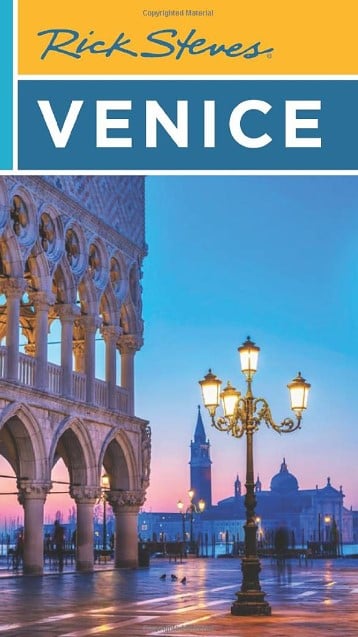
Your trusted guide, Rick Steves, invites you to glide through the canals and wander down cobblestone alleys in his latest book, Rick Steves Venice Travel Guide .
You’ll learn to maximize your time and budget effectively by offering a fully updated and extensive guide for spending a week or more in Venice.
The guide covers top sights and hidden treasures from St. Mark’s Basilica to the charming city of Padua , along with strategic advice to beat the crowds and avoid tourist traps.
Discover how to connect with local culture , the best places to eat and sleep, and even enjoy self-guided walking tours.
The book features detailed neighborhood maps and a fold-out city map, with complete and current information on the city’s districts and side trips.
4. The Rough Guide to Italian Lakes
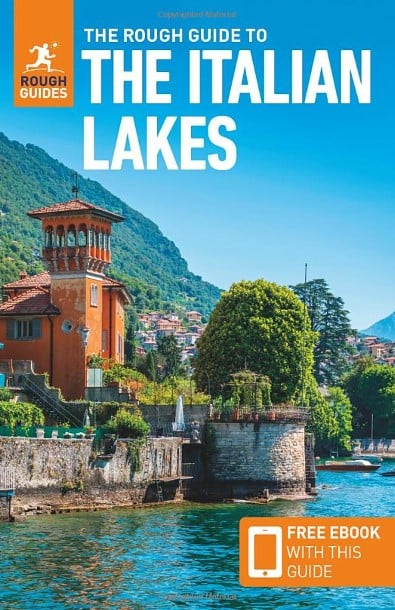
Discover the enthralling beauty of the Italian Lakes with Rough Guide’s comprehensive guidebook. This guidebook offers the most relevant and current suggestions for what to see , what to skip, and those hidden treasures that await you.
Traverse Lombard’s vineyards, get adventurous on Lake Garda or marvel at the 600-year-old Duomo in Milan.
Inside, you’ll find color maps and pictures, highlights, itineraries, and insider tips to navigate the Italian lakes like a local, bypassing crowded areas and saving time and money.
Expect enriching cultural insights and extensive coverage of regions including Lake Como, Lake Maggiore, Lake Garda, Milan, Verona, and more.
5. Fodor’s The Amalfi Coast, Capri & Naples (Full-color Travel Guide)
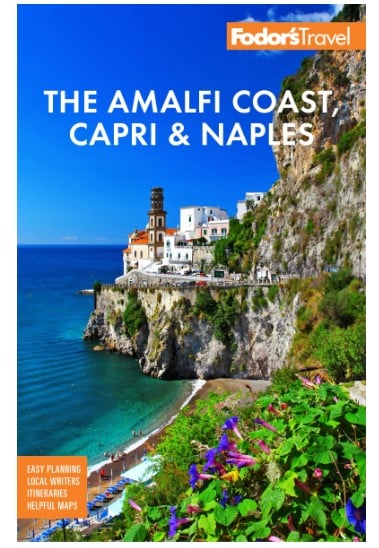
Unleash the charm of Southern Italy with Fodor’s insightful guide to The Amalfi Coast, Capri & Naples . Whether you’re planning to drive along the Amalfi Coast, explore Pompeii’s ruins, or savor authentic pizza in Naples, this guide has got you covered.
It’s brimming with maps, local expert recommendations , beautiful color photos, and valuable trip-planning tools.
The guide features multiple itineraries for effective time management, over 15 detailed maps for confident navigation, and honest suggestions on the best sights, eateries, hotels, outdoor activities, nightlife, shopping, and more.
Delve deeper into the local culture with historical insights and special features on the Amalfi Drive , Capri by boat, and the ancient city of Pompeii.
6. Puglia Travel Guide: Are You Ready to Visit Southern Italy?
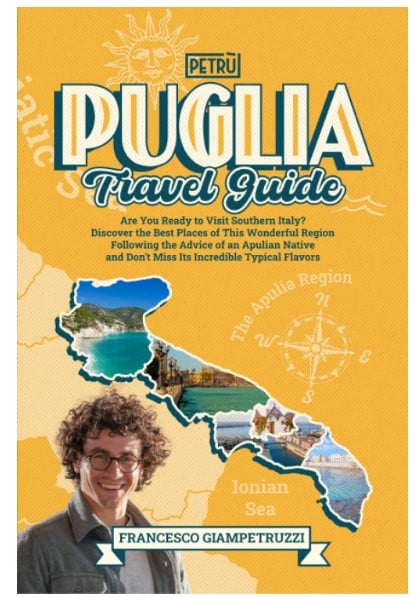
If you’re yearning for an extraordinary exploration of Southern Italy, Puglia Travel Guide: Are You Ready to Visit Southern Italy? has got you covered.
This guide, penned by a native Apulian and passionate traveler, Francesco, serves as your comprehensive companion for discovering the hidden marvels of Puglia.
The book outlines the top five unmissable historic sites and over 50 spectacular beaches, from tourist hotspots to untouched natural locales, and introduces you to unique local cuisines .
Packed with more than 200 vibrant full-color photos, this guide makes planning your unforgettable Puglian adventure a breeze.
For those exploring Southern Italy, another honorable book mention goes to Lonely Planet Southern Italy , an excellent guidebook that unveils the vibrant and diverse region of Southern Italy.
Immerse Yourself Deeper in Italy: Beyond Travel Guides
If you wish to dive even deeper into the heart of Italy beyond the fantastic sights and delightful cuisines, we recommend looking at our curated list of prominent Italian best books .
These esteemed works offer profound insights into Italy’s intricate culture and society, weaving tales of love, family, politics, and the very fabric of human nature. This enriching list is in our “ 17 Best Italian Books: Explore Italy’s Rich Culture ” article.
Reading these masterpieces will enhance your understanding and appreciation of Italy before and during your journey. The books mentioned in the article are:
- Elena Ferrante – L’amica geniale ( My Brilliant Friend )
- Andrea Camilleri – La forma dell’acqua ( The Shape of Water )
- Italo Calvino – Il sentiero dei nidi di ragno (The Path to the Nest of Spiders)
- Carlo Levi – Cristo si è fermato a Eboli ( Christ Stopped at Eboli )
- Alessandro Baricco – Seta ( Silk )
- Paolo Giordano – La solitudine dei numeri primi ( The Solitude of Prime Numbers )
- Umberto Eco – Il nome della rosa ( The Name of the Rose )
- Elsa Morante – La storia ( History )
- Primo Levi – Se questo è un uomo ( If This Is a Man )
- Roberto Saviano – Gomorra ( Gomorrah )
- Niccolò Ammaniti – Io non ho paura ( I’m Not Scared )
- Italo Svevo – La coscienza di Zeno ( Zeno’s Conscience )
- Dante Alighieri – La Divina Commedia ( The Divine Comedy )
- Giovanni Verga – I Malavoglia (The House by the Medlar Tree)
- Giovanni Boccaccio – Il Decameron ( The Decameron )
- Luigi Pirandello – Il fu Mattia Pascal ( The Late Mattia Pascal )
- Alessandro Manzoni – I Promessi Sposi ( The Betrothed )
- Beppe Severgnini – La Bella Figura : A Field Guide to the Italian Mind
Best Travel Guide Books for Italy: Final Thoughts
We’ve come a long way on our literary journey across Italy! We’ve delved into general guides about the country as a whole and honed in on the specifics of its mesmerizing regions. Remember, each travel guide provides a different perspective and unique insights – just like Italy, each book has its personality and charm.
I hope this guide to the best Italy travel books proves helpful in preparing for your Italian adventure, whether you’re planning to bring one of these great books along on your trip or just reading in advance to immerse yourself in the beauty and culture of this beautiful country.
After all, these books are about more than just sightseeing – they’re about living and experiencing ‘La Dolce Vita,’ the sweet life, the Italian way. – Until our next Italian journey, Arrivederci!
Recommended Reading : 23 Best Italian Grammar Books to Master the Language
Similar Posts
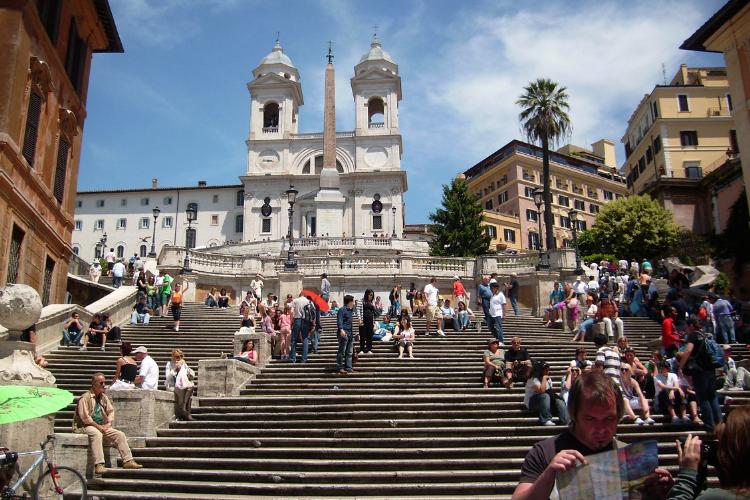
21 Safest Cities in Italy for Travelers & Expats in 2024

10 Best Italian Ski Resorts for Families: Memorable Fun

Is Bologna Worth Visiting? Your All-Inclusive Travel Guide

10 Uffizi Gallery Famous Paintings You Need to See

Motorcycling in Italy: Top Destinations & Tips

Spend One Day in Verona, Italy: A Perfect Itinerary
Security Alert May 17, 2024
Worldwide caution, update may 10, 2024, information for u.s. citizens in the middle east.
- Travel Advisories |
- Contact Us |
- MyTravelGov |
Find U.S. Embassies & Consulates
Travel.state.gov, congressional liaison, special issuance agency, u.s. passports, international travel, intercountry adoption, international parental child abduction, records and authentications, popular links, travel advisories, mytravelgov, stay connected, legal resources, legal information, info for u.s. law enforcement, replace or certify documents.
Before You Go
Learn About Your Destination
While Abroad
Emergencies
Share this page:
Travel Advisory July 26, 2023
Italy - level 2: exercise increased caution.
Reissued with obsolete COVID-19 page links removed.
Exercise increased caution due to terrorism .
Country Summary: Terrorist groups continue plotting possible attacks in Italy. Terrorists may attack with little or no warning, targeting tourist locations, transportation hubs, markets/shopping malls, local government facilities, hotels, clubs, restaurants, places of worship, parks, major sporting and cultural events, educational institutions, airports, and other public areas.
Read the country information page for additional information on travel to Italy.
If you decide to travel to Italy:
- Be aware of your surroundings when traveling to tourist locations and crowded public venues.
- Follow the instructions of local authorities.
- Monitor local media for breaking events and adjust your plans based on new information.
- Enroll in the Smart Traveler Enrollment Program ( STEP ) to receive Alerts and make it easier to locate you in an emergency.
- Follow the Department of State on Facebook and Twitter .
- Review the Country Security Report for Italy.
- Visit the CDC page for the latest Travel Health Information related to your travel.
- Prepare a contingency plan for emergency situations. Review the Traveler’s Checklist.
Embassy Messages
View Alerts and Messages Archive
Quick Facts
Six months validity recommended, at least 3 months validity beyond your planned date of departure from the Schengen area .
Two pages required for entry stamp.
Not required for stays under 90 days.
10,000 Euros or equivalent.
Embassies and Consulates
U.S. Embassy Rome
Via Vittorio Veneto, 121 00187 Rome, Italy Telephone: +(39) 06-4674-1 Emergency After-Hours Telephone: +(39) 06-4674-1 Fax: +(39) 06-4674-2244 Email: [email protected] The Rome consular district includes the regions of Lazio, Marche, Umbria, Abruzzo, and Sardinia.
U.S. Mission to the UN Agencies in Rome Via Boncompagni, 2 Telephone: (+39) 06-4674-1 Emergency after-hours telephone: (+39) 06-4674-1 Fax: (+39) 06 4674-3535 Email: [email protected]
U.S. Embassy to the Holy See Via Sallustiana, 49 00162 Rome, Italy Telephone: +(39) 06-4674-3428 Emergency After-Hours Telephone: +(39) 06-4674-1 Fax: +(39) 06-575-8346
U.S. Consulate General Florence Lungarno Amerigo Vespucci, 38 50123 Florence, Italy Telephone: +(39) 055-266-951 Emergency After-Hours Telephone: +(39) 055-266-951 Fax: +(39) 055-215-550 Email: [email protected] The Florence consular district includes the regions of Tuscany and Emilia-Romagna (all except the Provinces of Piacenza and Parma), as well as the Republic of San Marino.
U.S. Consulate General Milan Via Principe Amedeo 2/10 20121 Milano, Italy Telephone: +(39) 02-290-351 Emergency After-Hours Telephone: +(39) 02-290-351 Fax: +(39) 081-583-8275 Email: [email protected] The Milan consular district includes the regions of Valle D'Aosta, Piemonte, Lombardia, Veneto, Trentino-Alto Adige, Friuli-Venezia Giulia, Liguria, and Emilia-Romagna (Provinces of Piacenza and Parma only).
U.S. Consulate General Naples Piazza della Repubblica 80122 Naples, Italy Telephone: +(39) 081-583-8111 Emergency After-Hours Telephone: +(39) 081-583-8111 Fax: +(39) 081-583-8275 Email: [email protected] The Naples consular district includes the regions of Campania, Molise, Basilicata, Puglia, Calabria, and Sicilia.
U.S. Consular Agent - Genoa Via Dante 2 16121 Genoa, Italy Telephone: +(39) 010-584-492 Emergency After-Hours Telephone: Please contact the U.S. Consulate General in Milan. Fax: +(39) 010-553-3033 Email: [email protected] Hours: Monday through Thursday 11:00 AM-3:00 PM, by appointment only.
U.S. Consular Agent - Palermo Via G.B. Vaccarini 1 90143 Palermo, Italy Telephone: +(39) 091-305-857 Emergency After-Hours Telephone: Please contact the U.S. Consulate General in Naples Fax: +(39) 091-625-6026 Email: [email protected] Hours: Monday through Friday 9:00 AM-12:30 PM by appointment only.
U.S. Consular Agent - Venice Viale Galileo Galilei 30 30173 Tessera, Italy Telephone: +(39) 041-541-5944 Emergency After-Hours Telephone: Please contact the U.S. Consulate General in Milan. Fax: +(39) 041-541-6654 Email: [email protected] Hours: Monday through Thursday, 10:00 AM-4:00 PM, by appointment only.
Destination Description
Learn about the U.S. relationship to countries around the world.
Entry, Exit and Visa Requirements
There are no COVID-related entry requirements for U.S. citizens.
Traveling Through Europe: If you are planning to visit or travel through European countries, you should be familiar with the requirements of the Schengen Agreement.
- Your passport must be valid for at least three months beyond the period of stay. Review our U.S. Travelers in Europe page .
- You will need proof of s ufficient funds and a return plane ticket .
- For additional information about visas for the Schengen area, see the Schengen Visa page.
- U.S. citizens who arrive at an Italian Port of Entry without a valid travel document – including passports that have been previously reported lost or stolen – will be denied admittance into Italy and returned to their point of origin. This regulation is strictly enforced in Italy.
- U.S. citizens may enter Italy for up to 90 days for tourist or business purposes without a visa. All non-residents are required to complete a declaration of presence (dichiarazione di presenza). Prospective residents or anyone intending to stay in Italy for longer than 90 days must obtain a permit of stay (permesso di soggiorno). Additional information may be obtained from the Ministry of Foreign Affairs and the Polizia di Stato .
- Non-EU visitors must obtain a stamp in their passport upon initial entry into a Schengen country. Many borders are unstaffed, so you may need to request a stamp at an official point of entry. Travelers arriving from another Schengen country must request the declaration of presence form from a local police office (commissariato di zona), police headquarters (questura), or their place of stay (e.g., hotel, hostel, campgrounds), and submit the form, along with a copy of your passport, to the police or to their place of stay within eight calendar days of arrival. Failure to complete a declaration of presence is punishable by expulsion from Italy.
The U.S. Department of State is unaware of any HIV/AIDS entry restrictions for visitors to or foreign residents of Italy.
Find information on dual nationality , prevention of international child abduction , and customs regulations on our websites. For general information about Italian customs regulations, please read our Customs Information page and our Italian Customs website.
Safety and Security
Terrorism: Terrorist groups and those inspired by such organizations are intent on attacking U.S. citizens abroad. Terrorists are increasingly using less sophisticated methods of attack – including knives, firearms, improvised explosive devices (IEDs), and vehicles – to more effectively target crowds. Frequently, their aim is unprotected or vulnerable targets, such as:
- High-profile public events (sporting contests, political rallies, demonstrations, holiday events, celebratory gatherings, etc.)
- Hotels, clubs, and restaurants frequented by tourists
- Places of worship
- Shopping malls and markets
- Public transportation systems (including subways, buses, trains, and commercial flights)
For more information, see our Terrorism page.
Politically motivated violence in Italy is most often connected to Italian internal developments or social issues. Italian authorities and foreign diplomatic facilities have found bombs outside public buildings, have received bomb threats, and have been targets of letter bombs, firebombs and Molotov cocktails in the past several years. These attacks generally occur at night, and although they have not targeted or injured U.S. citizens, you should remain aware of your surroundings and report any suspicious activity to local authorities.
Crime: Italy has a moderate rate of crime, especially for theft and economic crimes; violent crimes are rare. U.S. citizens should be aware of the following local circumstances:
- Tourists can be fined or detained for buying counterfeit goods (usually fashion accessories).
- Travelers must purchase train, bus, or metro tickets and validate them by punching them in validating machines prior to boarding (usually near the entrance of the train or metro or on the bus). Tickets may be purchased at tobacco stores or kiosks or, in some cities, via Apps or SMS. Failure to follow this procedure may result in an on-the-spot fine by an inspector on the train, bus, or metro. If the violator does not pay the fine on the spot, it will automatically double and be forwarded to the violator’s home address.
- Be alert that many municipalities of cities in Italy have issued local restrictions banning certain activities in fountains or on monuments, such as eating, drinking, sitting, or bathing, as well as regarding the consumption of alcohol both indoors and outdoors after certain hours of the night.
- Violating these regulations can result in fines. Tourists are advised to check the official website of each city they plan to visit to learn the details.
- Thieves sometimes impersonate police officers. If you are stopped by a plainclothes policeman, ask for a uniformed officer or insist on seeing an officer's identification card (documento). Do not hand over your wallet and immediately report the incident to the actual police at a police station or by dialing 112 from a local phone.
- Do not leave bags unattended. Most reported thefts occur at crowded tourist sites, at airports, car rental agencies, on public buses, metros and trains, and at the major railway stations. Never leave baggage alone in a car, including in a closed trunk. For more information on trains and security, please see the Italian railway police’s advice for travelers .
- Be alert to criminal schemes. Organized groups of thieves and pickpockets operate at major tourist destinations, in train stations, bars, and cafes. Some travelers have reported incidents in which criminals used drugs to assault or rob them. Thieves on motor scooters regularly snatch purses or bags off pedestrians. Resisting these thieves can be dangerous.
- Keep your car doors locked and windows rolled up at all times to avoid car-jackings and thefts while you are waiting in traffic.
The U.S. Secret Service in Rome is assisting Italian law enforcement authorities in investigating an increase in the appearance of ATM skimming devices. Here are some helpful hints to protect against and identify skimming devices:
- Use ATMs located in well-lit public areas or secured inside a bank/business.
- Cover the keypad with one hand as you enter your PIN.
- Look for gaps, tampered appearance, or other irregularities between the metal faceplate of the ATM and the card reader.
- Avoid card readers that are not flush with the face of the ATM.
- Closely monitor your account statements for unauthorized transactions.
Potential for Natural Disasters: Several major earthquake fault lines cross Italy, and earthquakes are frequent. High tides in Venice, flooding, and avalanches in mountainous areas may occasionally occur. The Italian Civil Protection agency has a robust capability to assist Italians and foreigners in the area of a natural disaster. Information about crisis preparedness and on-going crises affecting parts of Italy can be found on the Civil Protection web site at: Civil Protection Italy . General information about disaster preparedness is also available online from the U.S. Federal Emergency Management Agency (FEMA). Detailed information on Italy's fault lines is available from the U.S. Geological Survey (USGS).
Italy also has several active volcanoes, including Mt. Etna in eastern Sicily. Travelers to Sicily should be aware of the possibility for travel disruptions, including airport closures, in the event of volcanic activity, and are advised to check the website of the Istituto Nazionale di Geofisica e Vulcanologia for detailed information and daily updates. Italy has many other areas of potential volcanic activity especially in the vicinity of Naples. Any visit to an active volcano or volcanic field bears a certain amount of risk. Eruptions can occur with little to no warning. Travelers should exercise caution, follow posted instructions, stay on authorized trails, and use reputable tour operators.
Demonstrations occur frequently and can be anti-American in nature, especially in areas hosting U.S. military bases. They may take place in response to political or economic issues, on politically significant holidays, and during international events.
- Even demonstrations intended to be peaceful can turn confrontational and possibly become violent.
- Avoid areas around protests and demonstrations.
- Check local media for updates and traffic advisories.
- Security Messages for U.S. citizens pertaining to demonstrations can be found on the Embassy’s website.
International Financial Scams: See the Department of State and the FBI pages for information.
Internet romance and financial scams are prevalent in Italy. Scams are often initiated through Internet postings/profiles or by unsolicited emails and letters. Scammers almost always pose as U.S. citizens who have no one else to turn to for help. Common scams include:
- Romance/Online dating
- Money transfers
- Lucrative sales
- Contracts with promises of large commissions
- Grandparent/Relative targeting
- Free Trip/Luggage
- Inheritance notices
- Work permits/job offers
Victims of Crime: U.S. citizen victims of sexual assault should seek medical attention at the nearest public hospital as soon as possible. U.S. citizen victims of sexual assault are also encouraged to contact the U.S. Embassy for assistance at +(39) 06-4674-1. Report crimes to the local police by dialing 112. Remember that local authorities are responsible for investigating and prosecuting crimes.
See our webpage on help for U.S. victims of crime overseas .
- Help you find appropriate medical care
- Assist you in reporting a crime to the police
- Contact relatives or friends with your written consent
- Explain the local criminal justice process in general terms
- Provide a list of local English-speaking attorneys
- Provide information on victim’s compensation programs in the United States
- Provide an emergency loan for repatriation to the United States and/or limited medical support in cases of destitution
- Help you find accommodation and arrange flights home
- Replace a stolen or lost passport
Victim Compensation in Italy :
- Italy has a program which provides financial compensation for victims of terrorism, organized crime, hit and run drivers and violent intentional crimes.
- If you are a victim of terrorism or organized crime in Italy, you are entitled to economic (special compensation and a life income) and non-economic benefits (special access to certain state jobs).
- In case of death, victims will include family members. You must file the application with the local Prefect’s office (Prefettura - the local representative for the Ministry of Interior) where the crime occurred, providing the date, location, injuries, and losses resulting from the crime.
- If you are a victim of a hit and run driver, you can apply for compensation of damages to the Fondo Di Garanzia per le Vittime della Strada but only if: (i) the responsible vehicle cannot be identified, is not covered by car insurance, or it circulated against the owner’s will; (ii) if the car insurance company went bankrupt; or (iii) if the accident was caused by a foreign vehicle with a license number that does not match or does not match anymore that same vehicle. U.S. citizens should consult an attorney licensed to practice in Italy to clarify time limits for a specific legal action.
Victims of hit and run drivers and their families may seek assistance by reaching out to an Italian non-governmental organization (NGO) called Associazione Italiana Familiari e Vittime della Strada (AIFVS), “Association of Italian Family Members and Victims of Hit and Run Drivers”. AIFVS provides legal and psychological assistance through a network of professionals associated with the NGO. Please visit AIFVS for more details.
If you are a victim of a violent intentional crime, you are entitled to compensation from the Italian government to cover the medical and welfare expenses you incurred, except for sexual assaults and murders cases where the compensation is due even if no medical and welfare expense was sustained. To be eligible for the compensation, your annual income must be within a certain limit. In addition, you must prove that you have already unsuccessfully tried to enforce the decision ordering compensation for damages. We recommend you contact an attorney licensed to practice in Italy for more information.
Domestic Violence: U.S. citizen victims of domestic violence may contact the Embassy or nearest Consulate for assistance.
Tourism: The tourism industry is generally regulated and rules with regard to best practices and safety inspections are regularly enforced. Hazardous areas/activities are identified with appropriate signage and professional staff is typically on hand in support of organized activities. In the event of an injury, appropriate medical treatment is widely available throughout the country. Outside of a major metropolitan center, it may take more time for first responders and medical professionals to stabilize a patient and provide life-saving assistance. U.S. citizens are encouraged to purchase medical evacuation insurance .
Local Laws & Special Circumstances
Criminal Penalties: You are subject to local laws. If you violate local laws, even unknowingly, you may be expelled, arrested, or imprisoned. Your U.S. passport will not prevent you from being detained, arrested, or prosecuted. Individuals establishing a business or practicing a profession that requires additional permits or licensing should seek information from the competent local authorities, prior to practicing or operating a business.
Furthermore, some crimes are also prosecutable in the United States, regardless of local law. For examples, see our website on crimes against minors abroad and the Department of Justice website.
Arrest Notification: If you are arrested or detained, ask police or prison officials to notify the U.S. Embassy or nearest Consulate immediately. See our webpage for further information.
Counterfeit and Pirated Goods: Although counterfeit and pirated goods are prevalent in many countries, they may still be illegal according to local laws. You may also pay fines or have to give them up if you bring them back to the United States. See the U.S. Department of Justice website for more information.
Faith-Based Travelers: See our following webpages for details:
- Faith-Based Travel Information
- International Religious Freedom Report – see country reports
- Human Rights Report – see country reports
- Hajj Fact Sheet for Travelers
- Best Practices for Volunteering Abroad
LGBTQI+ RIGHTS: There are no legal restrictions on same-sex sexual relations or the organization of LGBTQI+ events in Italy. Same sex civil unions are legally recognized in Italy. See our LGBTQI+ Travel Information page and section 6 of the Department of State's Human Rights report for further details.
Travelers Who Require Accessibility Assistance . The law in Italy prohibits discrimination against persons with physical, sensory, intellectual or mental disabilities, and the law is enforced. Social acceptance of persons with disabilities in public is as prevalent as in the United States. The most common types of accessibility may include accessible facilities, information, and communication/access to services/ease of movement or access. Expect accessibility to be limited in public transportation, lodging, communication/information, and general infrastructure, and common in lodging and general infrastructure. There is a significant difference between the main cities and the small towns.
- Rental, repair, replacement parts for aids/equipment/devices, or service providers, such as sign language interpreters or personal assistants, are generally available. Contact the US Embassy in Italy to receive a list of providers.
- Hand-controlled rental cars are available in Italy from major car rental companies. Contact the car rental company well in advance of your trip in order to reserve the vehicle.
- Italy functions on 220-volt current. To recharge a power wheelchair, you may need a transformer to convert 220 to 110 volts and a plug adapter to fit Italian electrical sockets.
- Guide dog owners must present the documentation required by European Union Member States in order to enter Italy with a dog .
Students: Students are often targeted by criminals as targets of theft or sexual assault. See our Students Abroad page and FBI travel tips .
SPECIAL CIRCUMSTANCES: Strikes and other work stoppages frequently occur in the transportation sector (national airlines, airports, trains, and bus lines); reconfirm any domestic and/or international flight reservations if you are traveling during one of these events.
Women Travelers: If you are a woman traveling abroad, please review our travel tips for Women Travelers .
For emergency services in Italy, dial 112 .
Ambulance services are widely available, but training and availability of emergency responders may be below U.S. standards.
Medical facilities are available but may be limited outside urban areas. Public hospitals may not maintain the same standards as hospitals in the United States. It is not possible to obtain an itemized hospital bill from public hospitals, as required by many U.S. insurance companies, because the Italian National Health Service charges one inclusive rate for care services and room and board. Private hospitals require you to pay for all services up front and get reimbursed later from your insurance company.
We do not pay medical bills . Be aware that U.S. Medicare/Medicaid does not apply overseas.
Medical Insurance: Make sure your health insurance plan provides coverage overseas. Most care providers overseas only accept cash payments. See our webpage for more information on insurance coverage overseas. Visit the U.S. Centers for Disease Control and Prevention for more information on type of insurance you should consider before you travel overseas.
We strongly recommend supplemental insurance to cover medical evacuation.
In Italy, end-of-life directives are not legal. Tourists should know that by law, hospitals will continue with lifesaving procedures indefinitely regardless of a person’ preferences stated in a will or advanced directive.
Pharmaceuticals: The Italian Ministry of Health sets rules defining who and how prescriptions and medications can be imported into Italy. However, the Ministry of Health website does not have information in English. According to the Ministry of Health, foreigners entering Italy are allowed to bring personal medications for a period of 30 days, but it is recommended that travelers also bring a copy of their prescription with them. Travelers should not bring excess supplies of prescription drugs into the country and cannot bring prescription drugs for other people.
The import of medications into Italy by courier services or by mail is strictly regulated by Italian Customs laws. Italian customs clears all incoming shipments of medications, even small amounts for personal use. Delays in the release of medications by Italian Customs received by mail or by courier services are common. The receiving party must be able to provide a statement signed by a physician licensed in Italy, certifying:
The medication is essential for the patient, that he/she would be put in a life-threatening situation without it.
There is no substitute or equivalent medication available on the Italian market.
Exercise caution when purchasing medication overseas. Pharmaceuticals, both over the counter and requiring prescription in the United States, are often readily available for purchase with minimal controls. Medication should be purchased in consultation with a medical professional and from reputable establishments.
U.S. Customs and Border Protection and the Food and Drug Administration are responsible for rules governing the transport of medication back to the United States. Medication purchased abroad must meet their requirements to be legally brought back into the United States. Medication should be for personal use and must be approved for usage in the United States. Please visit the U.S. Customs and Border Protection and the Food and Drug Administration websites for more information.
Vaccinations : Be up-to-date on all vaccinations recommended by the U.S. Centers for Disease Control and Prevention.
For further health information:
- World Health Organization
- U.S. Centers for Disease Control and Prevention (CDC)
Air Quality: Visit AirNow Department of State for information on air quality at U.S. Embassies and Consulates. Many cities in Italy have air pollution levels similar to those in major U.S. cities.
In parts of Italy, the lack of adequate trash disposal and incineration sites has led to periodic accumulations of garbage. In some cases, residents have burned garbage, resulting in toxic emissions that can aggravate respiratory problems.
Visit the European Environment Agency’s website for information on air quality in Italy.
Health Facilities:
The U.S. Embassy maintains a list of doctors and hospitals . We do not endorse or recommend any specific medical provider or clinic.
- Adequate health facilities are available throughout Italy, but health services may be below U.S. standards.
- Private hospitals usually require advance payment or proof of adequate insurance before admitting a patient.
- Travelers should make efforts to obtain complete information on billing, pricing, and proposed medical procedures before agreeing to any medical care.
- Medical staff may speak little or no English.
- Generally, in public hospitals only minimal staff is available overnight in non-emergency wards.
- In most cases, patients bear costs for transfer to or between hospitals.
Medical Tourism and Elective Surgery
- Medical tourism is a rapidly growing industry. People seeking health care overseas should understand that medical systems operate differently from those in the United States and are not subject to the same rules and regulations. Anyone interested in traveling for medical purposes should consult with their local physician before traveling and visit the U.S. Centers for Disease Control and Prevention website for more information on Medical Tourism.
- We strongly recommend supplemental insurance to cover medical evacuation in the event of unforeseen medical complications.
Adventure Travel: Visit the U.S. Centers for Disease Control and Prevention website for more information about Adventure Travel .
Travel and Transportation
ROAD CONDITIONS AND SAFETY: While in Italy, you may encounter road conditions that differ significantly from those in the United States such as:
- Traffic lights are limited and often disobeyed.
- Motor scooters are very popular, and their riders may behave unexpectedly.
- Drivers frequently pass on superhighways (autostrada) at very high speeds.
- Rural roads are generally narrow, often have no guardrails, and inconsistent speed limits.
- Be careful when crossing streets even when using a marked crosswalk with a green walk (avanti) light illuminated.
Traffic Laws:
- Seat belt use is compulsory.
- You must use headlights year-round and at all times outside of urban areas.
- During the autumn/winter months, it is compulsory to have either winter tires or carry snow chains if driving outside urban areas.
- If you are stopped, under certain conditions you are expected to pay the police officer issuing the ticket immediately. Be prepared to pay in cash in local currency. Local police can confiscate your car if you cannot pay the fine.
- Fines are imposed if driving without the proper permits in historic downtown areas of cities and towns throughout Italy. Cameras photograph the license plates of cars illegally driving in parts of the city that require a permit. The fines imposed for these violations are forwarded to the driver’s home in the United States to request payment. For definitive legal guidance or to contest a fine, you should consult a lawyer licensed to practice in Italy. See the U.S. Embassy of Rome’s transportation page for more information .
- Public Transportation: Pickpocketing is frequent on all public transportation, especially at train stations and major tourist sites.
See our Road Safety page for more information. Also, we suggest that you visit the website of the Automobile Club d’Italia (A.C.I.). For information on obtaining international drivers licenses, contact the American Automobile Association (AAA) via telephone at (407) 444-7000 or fax (407) 444-7380.
AVIATION SAFETY OVERSIGHT: The U.S. Federal Aviation Administration (FAA) has assessed the Government of Italy’s Civil Aviation Authority as being in compliance with International Civil Aviation Organization (ICAO) aviation safety standards for oversight of Italy’s air carrier operations. Further information may be found on the FAA’s safety assessment page .
Maritime Travel: Mariners planning travel to Italy should also check for U.S. maritime advisories and alerts . Information may also be posted to the U.S. Coast Guard homeport website , and the NGA broadcast warnings .
For additional travel information
- Enroll in the Smart Traveler Enrollment Program (STEP) to receive security messages and make it easier to locate you in an emergency.
- Call us in Washington, D.C. at 1-888-407-4747 (toll-free in the United States and Canada) or 1-202-501-4444 (from all other countries) from 8:00 a.m. to 8:00 p.m., Eastern Standard Time, Monday through Friday (except U.S. federal holidays).
- See the State Department’s travel website for the Worldwide Caution and Travel Advisories .
- Follow us on Twitter and Facebook .
- See traveling safely abroad for useful travel tips.
Review information about International Parental Child Abduction in Italy . For additional IPCA-related information, please see the International Child Abduction Prevention and Return Act ( ICAPRA ) report.
Travel Advisory Levels
Assistance for u.s. citizens, learn about your destination, enroll in step.

Subscribe to get up-to-date safety and security information and help us reach you in an emergency abroad.
Recommended Web Browsers: Microsoft Edge or Google Chrome.
Check passport expiration dates carefully for all travelers! Children’s passports are issued for 5 years, adult passports for 10 years.
Afghanistan
Antigua and Barbuda
Bonaire, Sint Eustatius, and Saba
Bosnia and Herzegovina
British Virgin Islands
Burkina Faso
Burma (Myanmar)
Cayman Islands
Central African Republic
Cote d Ivoire
Curaçao
Czech Republic
Democratic Republic of the Congo
Dominican Republic
El Salvador
Equatorial Guinea
Eswatini (Swaziland)
Falkland Islands
France (includes Monaco)
French Guiana
French Polynesia
French West Indies
Guadeloupe, Martinique, Saint Martin, and Saint Barthélemy (French West Indies)
Guinea-Bissau
Isle of Man
Israel, The West Bank and Gaza
Liechtenstein
Marshall Islands
Netherlands
New Caledonia
New Zealand
North Korea (Democratic People's Republic of Korea)
Papua New Guinea
Philippines
Republic of North Macedonia
Republic of the Congo
Saint Kitts and Nevis
Saint Lucia
Saint Vincent and the Grenadines
Sao Tome and Principe
Saudi Arabia
Sierra Leone
Sint Maarten
Solomon Islands
South Africa
South Korea
South Sudan
Switzerland
The Bahamas
Timor-Leste
Trinidad and Tobago
Turkmenistan
Turks and Caicos Islands
United Arab Emirates
United Kingdom
Vatican City (Holy See)
External Link
You are about to leave travel.state.gov for an external website that is not maintained by the U.S. Department of State.
Links to external websites are provided as a convenience and should not be construed as an endorsement by the U.S. Department of State of the views or products contained therein. If you wish to remain on travel.state.gov, click the "cancel" message.
You are about to visit:
An Essential Guide To Spending Money While Traveling In Italy
- Last updated May 31, 2024
- Difficulty Intemediate
- Category Travel

When it comes to traveling in Italy, the possibilities for spending money are endless. From indulging in mouth-watering gelato to splurging on Italian fashion, the options can be overwhelming. But fear not, because in this essential guide, we will break down the best ways to spend your money while exploring the breathtaking country of Italy. Whether you're a foodie wanting to experience the finest Italian cuisine or a fashionista looking to strut down the streets of Milan, we've got you covered. Get ready to immerse yourself in the rich culture and history of Italy, one euro at a time.
What You'll Learn
Transportation costs and options, accommodation expenses and recommendations, dining and food costs in italy, best attractions and their associated entrance fees in italy.

When planning a trip to Italy, one of the important factors to consider is transportation. Italy is known for its efficient and convenient transportation system, which makes it relatively easy to get around the country. However, it's important to be aware of the different transportation options available, as well as the associated costs.
Here are the different transportation options and their costs to consider when traveling to Italy:
- Flying: If you're traveling long distances or from another country, flying is a practical option. Italy has several international airports, including the major ones in Rome, Milan, and Venice. The cost of flights will vary depending on your departure location and the time of year. It's advisable to book your flights well in advance to secure the best deals.
- Train: Trains are a popular and efficient mode of transportation in Italy. The country has an extensive train network that connects major cities and towns. The cost of train tickets will depend on the distance you're traveling and the type of train you choose. It's worth noting that high-speed trains can be more expensive than regional or intercity trains. It's recommended to book your train tickets in advance to save money.
- Car Rental: Renting a car gives you the flexibility to explore Italy at your own pace. However, driving in Italian cities can be challenging, especially for tourists unfamiliar with the local traffic rules. Additionally, parking in cities can be expensive. The cost of renting a car will vary depending on the type of vehicle, rental duration, and insurance coverage. It's important to factor in fuel costs and toll fees if you plan on driving long distances.
- Public Transportation: Italy has an efficient and affordable public transportation system, particularly in major cities like Rome, Milan, and Florence. Cities have extensive bus and metro networks, making it easy to navigate and explore. Public transportation fares are generally inexpensive, and multi-day passes or travel cards are available for even more cost-effective options.
- Taxis: Taxis are widely available in Italian cities and can be a convenient mode of transportation, especially for short distances or late at night. However, taxis in touristy areas may be more expensive, so it's prudent to check the fare beforehand or opt for ride-hailing services like Uber or Lyft.
- Ferries: If you plan to visit islands like Sicily, Sardinia, or Capri, ferries are an essential mode of transportation. The cost of ferry tickets will vary depending on the distance and the type of ferry. It's recommended to book your ferry tickets in advance, especially during peak tourist seasons.
- Walking: Italy is a country best explored on foot. Many cities and towns have well-preserved historic centers, and walking is often the easiest and most enjoyable way to get around. Walking is not only cost-effective but also allows you to immerse yourself in the local culture and experience the charm of Italy's streets and neighborhoods.
Traveling in Italy can be an exciting adventure, and understanding the various transportation options and their costs will help you plan your trip more effectively. Whether you choose to fly, take the train, rent a car, or utilize public transportation, Italy offers a range of options to suit your budget and travel preferences.
How to Easily Refill Travel Size Contact Solution for On-the-Go Convenience
You may want to see also
Budget Accommodation:
If you are traveling on a tight budget, there are several options available for affordable accommodation in Italy. Hostels and budget hotels are great choices for backpackers and budget-conscious travelers. Look for hostels with private rooms or dormitory-style accommodations to save money. Additionally, you can consider booking budget hotels in less touristy areas or outside the city center to find reasonable prices.
Mid-Range Accommodation:
If you prefer more comfort and privacy without breaking the bank, mid-range accommodations are the ideal choice. Italy has numerous bed and breakfasts (B&Bs) that offer comfortable rooms and a homely atmosphere. Many B&Bs in Italy serve traditional Italian breakfast, providing an excellent start to your day. Another option is to book hotels or apartments that offer kitchen facilities so you can cook some meals and save on dining expenses.
Luxury Accommodation:
Italy is known for its luxurious hotels, especially in cities like Rome, Florence, and Venice. These hotels provide top-notch services, elegant rooms, and stunning views. If you are looking for a luxurious experience, consider booking a five-star hotel or a boutique luxury hotel. These accommodations often include amenities such as spas, rooftop pools, and gourmet restaurants.
Online Booking Platforms:
To find the best accommodation deals in Italy, consider using online booking platforms such as Booking.com, Airbnb, or Expedia. These platforms allow you to compare prices, read reviews from previous guests, and filter accommodations based on your preferences. Be sure to check the location, amenities, and cancellation policies before making a booking.
Seasonal Considerations:
Accommodation prices in Italy can vary depending on the season and popular tourist periods. Summer, Easter, and Christmas holidays tend to be peak seasons, driving up the prices. If you are flexible with your travel dates, consider visiting during shoulder seasons such as spring or autumn to find better deals and avoid crowds.
Additional Expenses:
When considering accommodation expenses, don't forget to account for additional costs such as city taxes, resort fees, and parking charges. Some cities in Italy charge a city tax per person per night, which is not usually included in the initial booking price. Make sure to inquire about these additional expenses beforehand to avoid any surprises on your bill.
Local Recommendations:
To get the most authentic experience, consider staying in traditional accommodations such as agriturismos or farm stays. These properties offer a unique insight into rural Italy, allowing you to learn about local traditions, cuisine, and farming practices. Additionally, if you are planning to visit smaller towns or countryside areas, look for family-run guesthouses or charming inns for a more intimate and personalized experience.
In summary, finding suitable accommodation in Italy is crucial for a comfortable and enjoyable trip. Take into consideration your budget, preferences, and desired location when making a booking. Remember to compare prices, read reviews, and consider local recommendations to find the best accommodation deals in Italy. Happy travels!
The Ultimate Guide on How to Travel from Abu Dhabi Airport to Dubai
Italy is known for its mouthwatering cuisine, so it's no surprise that food is a big part of any trip to this beautiful country. From delicious pasta dishes to fresh seafood and gelato, there is something to satisfy every taste bud. However, it's important to plan ahead and budget for dining and food costs to make the most of your trip.
First and foremost, it's worth mentioning that dining out in Italy is generally more expensive than cooking your own meals. But who would want to miss out on the authentic Italian culinary experience? So, here are a few things to consider when it comes to dining and food costs in Italy.
- Restaurants: Dining out at restaurants is a must while in Italy. Expect to spend anywhere between €15 and €30 per person for a basic three-course meal at a mid-range restaurant. However, prices can vary depending on the location and type of restaurant. In popular tourist areas, prices tend to be higher, so consider exploring local neighborhoods for more affordable options.
- Take-away or "Asporto" meals: If you're on a budget or prefer to dine in the comfort of your accommodation, you can opt for take-away meals. Prices for a pizza or a simple pasta dish range from €5 to €10. This is a great option for a quick and affordable meal on the go.
- Street food: Italy is famous for its street food, which offers a delicious and budget-friendly way to sample local flavors. From arancini (rice balls) to paninis and gelato, you can find a variety of street food options ranging from €2 to €8.
- Trattorias and Osterias: Trattorias and osterias are smaller, family-owned establishments that offer traditional Italian cuisine at more affordable prices compared to high-end restaurants. These cozy venues provide a great opportunity to try authentic Italian dishes without breaking the bank.
- Cafes and bakeries: Italians love their coffee, and sitting in a cafe, sipping an espresso while people-watching is a quintessential part of the Italian experience. A coffee typically costs around €1.50 to €2.50, depending on the location. The same goes for pastries and baked goods, which are often priced individually.
- Tipping: While tipping is not mandatory in Italy, it is appreciated. If you receive exceptional service, leaving a small tip of around 5% to 10% is a nice gesture. However, some restaurants may include a service charge (coperto) in the bill, so check before tipping.
- Water: In Italy, tap water is safe to drink, so you can save on bottled water by carrying a reusable water bottle and refilling it throughout the day. If you prefer bottled water, be aware that it can be quite expensive, especially at restaurants. Opting for the house wine or local beverages like limoncello can be a more affordable way to enjoy a drink with your meal.
- Alcohol: Speaking of drinks, alcohol prices can add up quickly, especially in touristy areas. Beer and wine are generally more affordable than cocktails or spirits. Opting for the local house wine or trying the regional specialties can give you a taste of Italy without breaking the bank.
When it comes to dining in Italy, it's all about finding the right balance between indulging in the local cuisine and sticking to your budget. By planning ahead, exploring different dining options, and embracing the local food culture, you can enjoy the best of Italian cuisine without overspending. So, buon appetito!
The Ins and Outs of Domestic Travel Security Checks: What to Expect
Italy is a country full of rich history, stunning architecture, and unparalleled beauty. From the ancient ruins of Rome to the romantic canals of Venice, there are countless attractions to explore. However, when planning a trip to Italy, it's important to budget for the entrance fees of these attractions. To help you make the most of your trip, here are some of the best attractions in Italy and their associated entrance fees.
- Colosseum, Rome: A trip to Italy would not be complete without visiting the iconic Colosseum in Rome. This ancient amphitheater, built in 70 AD, is an architectural marvel and an important symbol of Rome's imperial past. The entrance fee for the Colosseum varies depending on the type of ticket you choose. The standard ticket costs €16 for adults and includes access to the Colosseum, Roman Forum, and Palatine Hill. There are also guided tours available for an additional fee.
- Vatican Museums, Rome: Another must-visit in Rome is the Vatican Museums, home to some of the world's most renowned art collections. The entrance fee for the Vatican Museums is €17 for adults. This ticket grants you access to the Vatican Museums, the Sistine Chapel, and St. Peter's Basilica. It's advisable to book your tickets online in advance to avoid long queues.
- Uffizi Gallery, Florence: In Florence, the Uffizi Gallery is a treasure trove of Renaissance art. This world-famous museum houses masterpieces by the likes of Leonardo da Vinci, Michelangelo, and Botticelli. The entrance fee for the Uffizi Gallery is €20 for adults. It's recommended to book your ticket in advance to secure your entry and save time.
- Doge's Palace, Venice: Venice is a city that seems frozen in time, and the Doge's Palace is a testament to its rich history. This impressive Gothic palace once served as the seat of the Venetian government. The entrance fee for the Doge's Palace is €20 for adults, and it includes access to the palace, the Bridge of Sighs, and the prison cells. Again, it's advisable to book your tickets in advance to avoid long queues.
- Pompeii Archaeological Site, Naples: A visit to Italy wouldn't be complete without exploring the ancient ruins of Pompeii. This UNESCO World Heritage Site offers a unique glimpse into the daily life of a Roman city frozen in time after the eruption of Mount Vesuvius in 79 AD. The entrance fee for the Pompeii Archaeological Site is €16 for adults. Guided tours are available at an additional cost and are highly recommended to fully appreciate the historical significance of the site.
- Cinque Terre National Park, Liguria: If you're looking for breathtaking natural beauty, the Cinque Terre National Park on the Italian Riviera is a must-visit. This picturesque coastal area is made up of five colorful fishing villages perched on cliffs overlooking the sea. While entrance to the national park is free, there is a fee to hike the trails between the villages. The "Cinque Terre Card" costs €16 and allows access to the trails, transportation between the villages, and even a free train ride.
These are just a few examples of the best attractions in Italy and their associated entrance fees. Keep in mind that prices may vary, so it's always a good idea to check the official websites or consult a travel guide for the most up-to-date information. By budgeting for these entrance fees, you can make the most of your trip and ensure you don't miss out on the wonders that Italy has to offer.
Unveiling the Travel Secrets of the Colorado Rockies Baseball Team
Frequently asked questions.
The average cost of accommodations in Italy can vary depending on the city and type of accommodation. On average, you can expect to pay around 100-150 euros per night for a mid-range hotel. However, there are also budget options available, such as hostels or guesthouses, which can cost around 40-70 euros per night.
Food and drinks in Italy can be quite affordable if you stick to local eateries and avoid touristy restaurants. On average, you can expect to spend around 25-40 euros per day on meals if you eat at mid-range restaurants. However, if you opt for street food or self-catering, you can save more money.
Transportation costs in Italy will depend on your mode of transport and the distance you need to travel. For intercity travel, trains are a popular option, and tickets can range from 10-70 euros depending on the distance and train type. Local transportation in cities can cost around 1.50-2.50 euros per ticket.
The cost of attractions and activities in Italy can vary widely depending on what you plan to do. Entrance fees for popular attractions such as the Colosseum in Rome or the Vatican Museums can range from 10-25 euros. It's a good idea to budget around 50-100 euros per day for activities and attractions.
Yes, there are a few additional expenses to consider when budgeting for a trip to Italy. These include tipping in restaurants (usually around 10% of the bill), public restroom fees (usually around 1 euro), and any optional tours or experiences you may want to take part in. It's always a good idea to have some extra money set aside for unexpected expenses or souvenirs as well.

- Olivia Jacobs Author

- Elani Piper Author Editor Reviewer
It is awesome. Thank you for your feedback!
We are sorry. Plesae let us know what went wrong?
We will update our content. Thank you for your feedback!
Leave a comment
Travel photos, related posts.
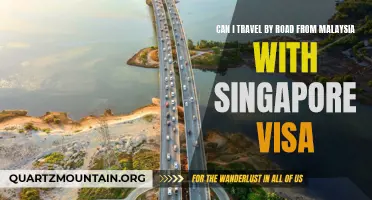
Road Travel from Malaysia to Singapore with a Singapore Visa: Everything You Need to Know
- Mar 17, 2024
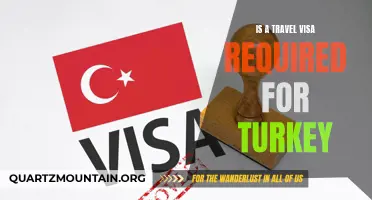
Is a Travel Visa Required for Turkey? Find Out the Answer Here
- May 05, 2024

The Ultimate Guide to Traveling from Denver Airport to Breckenridge
- May 17, 2024
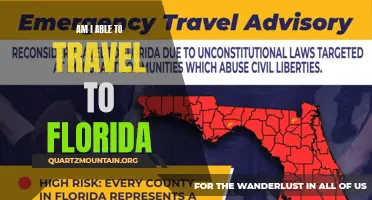
Can I Travel to Florida? Everything You Need to Know Before Your Trip
- May 13, 2024

The Exciting World of Travel Public Relations: A Closer Look at the Role
- May 28, 2024
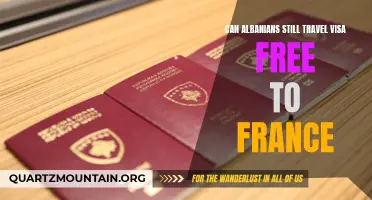
Albanians Still Have Visa-Free Access to France: What You Need to Know
- Mar 15, 2024

An Insider's Guide to Puglia, Italy — Incredible Pasta, Beautiful Beach Towns, and Boutique Hotels Included
This sun-drenched southern region offers the best of Italy with fewer crowds — at least in the offseason.
Word is definitely out on Puglia, the long, narrow coastal region that forms the heel of Italy’s boot. No longer a hidden gem or best-kept secret, Puglia’s dramatic beaches, Baroque cities, and whitewashed trulli are splashed over many an Instagram feed.
Yet compared to other regions of Italy, Puglia — pronounced pool-yah — still offers travelers the Italian vacation experiences they seek, while skipping much of the crowds and chaos of better-known destinations. “It’s definitely less-visited compared to iconic Italian regions like Tuscany and the Amalfi Coast,” says Madeline Jhawar, owner and custom travel planner with Italy Beyond the Obvious . “And Puglia really does have it all: fantastic food and wine, spectacular countryside and beach scenery, and a deep and fascinating history.”
Our guide highlights Puglia’s appealing mix of scenery, history, cuisine — and let’s not forget the agreeable weather most of the year — and maps out how to make the most of a trip to this sunny region.
Puglia, Italy
- At a hotel like Le Alcove in Alberobello, you can sleep in a trullo, a cozy, cocoon-like conical dwelling.
- Sample orecchiette, Puglia’s signature ear-shaped pasta, at a traditional eatery like Osteria Le Arpie in Bari.
- Make like an Italian at the mare (sea) and head to a lido (beach club) like the chic Pettolecchia near Torre Canne.
- Buy Puglia’s prized olive oil directly from the source, at a family mill like L’Acropoli di Puglia in Martina Franca.
- Take in the Baroque architecture of Lecce and prepare to be overwhelmed by its exuberant facades, altarpieces, and piazzas.
Best Hotels and Resorts
Borgo egnazia.
The established go-to luxury spot in Puglia, Borgo Egnazia is a sprawling and impeccably curated compound that ranks among Travel + Leisure ’s best resorts in Italy . T+L travel advisor Keith Waldon , founder and director of Departure Lounge , praises the outstanding service, where “privacy is guaranteed,” as well as the setting between the sea and the Valle d’Itria.
The six suites at this boutique hotel each occupy a whitewashed trulli, with cool stone floors, eclectic decor, and modern bathrooms. We love the almost mystical feeling of comfort these spaces convey, as well as the homemade breakfast and the location in the heart of Alberobello town, a UNESCO World Heritage Site.
Masseria Torre Maizza
A 2020 standout for best new hotels , Masseria Torre Maizza owes its polish to Rocco Forte — expect the brand’s unmatched service and serene, Olga Polizzi-designed interiors that seem to embody a cool breeze. Waldon says the feeling here is of “living in a real luxury masseria like at home, and it’s the only property with its own golf course.”
Palazzo Sant’Anna
Set in Lecce’s historic center, Palazzo Sant'Anna is curated to zen-like perfection. Puglia travel advisor Ylenia Sambati refers guests here for the light-filled suites, many with exposed stone and wood beams, as well as balconies. “Wake up to birds singing and a colorful and bountiful breakfast prepared with love by owner Beatrice and her team,” she says.
Best Things to Do
Take a cooking class..
Yes, cooking classes are ubiquitous in Italy, but the traditional cuisine of Puglia stands out, even in a country of great food. Waldon says to “take a pasta-focused cooking class in a local masseria with a mama” and go home with some new skills. Sambati likes the friendly vibe and easy instructions offered by Cook In Puglia in Lecce.
Relax at a lido.
Beaches in Puglia can be crowded in the summertime. Escape the ruckus at a beach club, or lido , such as Pettolecchia Il Lido , a luxury spot between Bari and Brindisi. Lounge beds, linen-clad gazebos, Frette towels, and waiter service set this one apart in a sea of beach umbrellas.
For families, try a trullo.
The cone-shaped trulli of Puglia’s Itria Valley are certainly unique, and according to Cherrye Moore of My Bella Vita Travel , they’re a hit with kids. “Families should rent a trullo villa and use it as a base for day trips to Alberobello, Ostuni, Locorotondo, and Monopoli. Many have pools and outside areas where the kids can run around.”
Head to the sea.
Puglia’s Adriatic coast is dramatic, especially between Polignano a Mare and Monopoli, where clear waters lap undulating cliffs and flow into the occasional sea cave. Both Waldon and Moore recommend chartering a private boat ( Cataurora is a good choice), either for a sunset cruise or a half-day tour with stops for swimming and snorkeling.
Best Restaurants
Laltrobaffo .
Puglia’s seafood is almost as famous as its orecchiette, and both Sambati and Waldon heartily recommend trying it at LaltroBaffo , an Otranto restaurant helmed by chef Cristina Conte, who, with her young, passionate team, turns out sophisticated takes on traditional Salento recipes.
Taverna della Gelosia
Sambati loves this rustic tavern in Ostuni’s old town. “It’s a bohemian, Salento-style trattoria serving local recipes that are lightly revisited.” Taverna della Gelosia is tucked away amid a jumble of alleys and stairways, which makes its vine-covered courtyard all the more romantic on a summer night.
Osteria Le Arpie
Handmade, ear-shaped orecchiette is the archetypal pasta of Puglia, and its production centers around Bari’s centro storico . Osteria Le Arpie is about as old-school as it gets, and its seasonal orecchiette con le cime di rapa (turnip greens) is Puglian comfort food epitomized. Also look for dishes served with pane di Altamura , Puglia’s heritage bread.
What to Buy in Puglia
Leather sandals.
“Puglia is famous for leather sandals, which you can find everywhere in local shops,” says Waldon. Erredibi is a top choice for handmade, locally made products, and they have stores in Brindisi, Ostuni, Lecce, and Otranto.
Primitivo Wine
“Puglia’s red primitivo wine, even when it’s just table wine quality, can stand up to reds from across the world,” says Moore. Combine some souvenir shopping with a winery tour and tasting at Masseria Li Veli , or just pop into a little grocery or enoteca to buy a few bottles to bring home.
Olive Oil
“Ancient olive groves define the landscape of Puglia, and buying newly pressed EVOO straight from a producer is something special,” says Moore. “ Savoia offers well-organized tours and great oil, but don’t overlook smaller producers like L’Acropoli di Puglia in Martina Franca.”
Cities and Areas to Visit
“We always tell our travelers not to miss the incredible small city of Lecce ,” says Jhawar. “It’s referred to as the ‘Florence of the South’ because of its rich Baroque architecture.” Lecce’s soft limestone meant easy carving for 17th-century artisans and well, they went to town , as evidenced at Basilica di Santa Croce, the Basilica del Rosario, and the Duomo of Lecce.
Alberobello
“It's hard to recommend people skip a visit to the town of Alberobello, with its iconic trulli houses,” says Jhawar. But a lot of travelers have the same idea. “We always encourage our guests to combine Alberobello with less touristy nearby towns such as Locorotondo or Martina Franca.”
While much of the tourist buzz centers around the Adriatic coast and the trulli area, don’t sleep on Gallipoli, which Waldon calls “ the beach town of Puglia.” The Ionian coast town has ancient history, a quiet old town, a newer town brimming with life, and a nonstop Italian party scene in the summertime.
The Gargano
This picturesque promontory on Puglia’s northernmost coastline is dominated by Gargano National Park, where the scenery changes from beaches to mountains in just a few miles. For smaller towns, incredible biodiversity, more natural beaches, plus some dramatic sea stacks and cliffs, this is the region’s wilder side.
Best Time to Visit
Waldon recommends visiting Puglia in the shoulder seasons of April to June and September to mid-November in order to avoid the summer heat and crowds, as Puglia is a major holiday destination for Italians. Jhawar agrees, but adds that “Puglia is very lively during the height of summer, with many local festivals.” The takeaway? If you plan a summer visit, book your accommodations and rental car well in advance, and brace yourself for crowded — albeit gorgeous — beaches and towns.
How to Get There
The airports at Bari and Brindisi serve flights from within Italy and Europe, though many incoming travelers opt to fly into Rome’s Fiumicino airport and arrange a rental car or transfer from there. Both Trenitalia and Italo trains serve Puglia, though be aware that with historic hill towns, train stations are usually in the lower town, which might be several miles away from the centro .
How to Get Around
You can get between Puglia’s major tourist centers via Trenitalia’s regional trains and a few private lines. But getting to smaller, rural destinations and more remote coastal areas is trickier by train. “We typically book private drivers or rental cars for our travelers,” says Jhawar. “Booking a rental car in Puglia is a decent approach — just make sure you know where to park in order to avoid the limited traffic zones found in most Italian cities.”
For more Travel & Leisure news, make sure to sign up for our newsletter!
Read the original article on Travel & Leisure .

Need help logging in?
Not Registered Yet?
- Browse Tours
- Educational Travel 101
- Teacher Stories
- ACIS Makes Planning Easy
- Keeping You and Your Students Safe
- Get Rewarded
- Student Stories
- Travel Scholarships & Fundraising
- Keeping Your Children Safe
- Paying For Your Trip
- Download Catalog
8 Helpful Travel Tips for Italy
Italy is one of the most popular destinations in Europe, with a reported 75 million people visiting in 2022 alone! The culture, food, history, and sunny climate are a massive draw for ACIS groups , and we are always thrilled to provide them with a taste of La Dolce Vita . To help you plan your perfect trip, the expert team at ACIS has gathered 8 key travel tips for Italy. Share your top recommendations in the comments!
1. Pack Layers
No matter what season you’re heading to Italy, you will want to bring clothing layers for a variety of climates and cultural norms. Heading to seaside towns like Livorno and Sorrento calls for a windbreaker, while the alpine regions of Lombardy and Pidemont may require a sturdier sweater, especially in winter.
It’s also important to bring at least one clothing item that covers the shoulders and a pair of pants or skirt that hangs below the knee. In order to enter many of Italy’s churches, including the Sistine Chapel, you will be asked to cover the shoulders and knees out of respect. Some chapels provide paper covers but don’t count on those being available if there’s something you really want to see!
Check out our full list of packing tips for international travel
2. Learn Key Italian Phrases
Trust us when we say an attempt to learn basic Italian for your travels is going to be met with a warm welcome! Don’t feel as though you need to be fluent and instead focus on key, commonly used sayings that will help you navigate your time abroad. Examples include:
- “Hello” and “goodbye”
- “Please” and “thank you”
- “I would like to order….”
- “Where is the restroom?”
- “How much is it?”
There are apps like Duolingo that can help you master these basic phrases. We also recommend podcasts designed for language learners that provide grammatical information as well as additional travel tips for Italy.
Download Free ACIS Visual Vocabulary Guides
“ My students are changed. They see the world differently now. We covered a lot of ground, but they definitely now have an introduction to Italy, its people and its history. “
— Robert C., ACIS Group Leader
3. Note the Breakfast Differences
Before you set out on a day of exploring, you’ll want to grab an Italian breakfast. But unlike in the United States, where hearty fare like bacon and eggs are the norm, a traditional Italian breakfast is lighter and sweeter. A simple pastry such as a cornetto or sfogliatella and an espresso is a very common way to start the day. But remember the upside: Lighter breakfast is just another reason to stop to refuel with gelato during the afternoon!
4. See the Small Towns
Many first time Italy travelers are understandly drawn to the capital of Rome : It is an incredible city with plenty of energy and modern amenities that also still feels like a page from history. We definitely recommend having a stop in Rome be part of your itinerary, but suggest supplementing your city adventure with some of the smaller Italian towns. Consider Verona, the birthplace of Romeo and Juliet, or a day trip to Assisi, where there is a beautiful medievel basilica dedicated to St. Francis, born in the city in 1181. In these quieter places, you can get a sense of every-day Italian life, and enjoy cuisine that is pulled straight from the local area.
5. Eat Slow, Local and Traditional
Across Italy, you’ll see food labels reading Denominazione d’Origine Protetta (DOP) , meaning Protected Designation of Origin. This badge of honor signifies a specialty product that comes from a specific region and nowhere else. Italy has some of the most famous DOP products available – and actually has the most number of them under the EU protection – from Prosciutto di Parma and Parmigiano Reggiano to Pasta di Gragnano and Pomodoro S. Marzano. You’ll want to take advantage of trying these beautiful ingredients, especially right in their regions of origin.
The slow food movement is also credited with having begun in Italy. Ingredients come farm-to-table and there is an emphasis on enjoying the meal at a slower pace. You may also find dinners are later in the evening, so don’t be surprised when you see diners sitting down at 9 or 10 at night. Don’t worry: On an ACIS Tour, you’ll be eating earlier!
6. Bring a Reusable Waterbottle
Skipping out on plastic bottles is one of our top tips for traveling sustainably . It is estimated that by choosing a reusable waterbottle, an average person can save 156 plastic bottles from being wasted per year. In Italy, there is also a unique cultural experience to be had with your refillable bottle in hand! Across cities such as Rome and Florence are fountains with clean, potable water ready to drink. In Rome, you can even filll your bottle at historic art pieces, such as Bernini’s Fontana della Barcaccia at the Spanish Steps.
View this post on Instagram A post shared by 🌍✈️✨ACIS Educational Tours (@acistours)
7. Plan Ahead for the Afternoon Riposo
You’ve spent the morning on a sightseeing adventure, and after lunch, you think to yourself “now is the perfect time to souvenir shop!” You’re ready to pick out a postcard to send home when you discover… the stores have all closed. Prepared travelers know that in Italy, the hours between 1-3 PM are the time of riposo , the afternoon rest. Just as Spain has the siesta, Italy has an afternoon break where shops closed up for several hours to give workers a rest. If you’re looking to shop, try the mornings or evenings, and be sure to check visiting hours for area attractions.
“Not only did we see the most fabulous sites in Italy, but we also ate real Italian food and really saw the culture. Our Tour Manager, Ian, was responsive to every need, patient beyond words, kind and knowledgeable. Great hotels, great experience. Cannot wait to plan another!” — Colleen S. , ACIS Group Leader
8. Embrace the Passeggiata (The Evening Stroll)
One of the delights of traveling in Italy is that the evenings are leisurely, made to help you unwind after a long day. After dinner, you’ll find locals on una passeggiata , an evening stroll, enjoying the sights and sounds of the city. While Italian culture varies from region to region, this is one of those activities you can find almost everywhere you go, and you may just find yourself wanting to bring it home to the US when you return! For many group leaders, a key factor in choosing ACIS is our centrally located hotels, which means you can enjoy the passegiata and other evening activities in the city, rather than having to stay outside city limits.
Travel to Italy with Your Students
Looking to use these travel tips for Italy to plan an educational tour ? ACIS Tours can help! With a dedicated team of experienced travelers, we can custom-build your Italian adventure to include history, culture, and plenty of good food. You’ll stay in centrally located hotels to save on commuting time, travel with the best Tour Managers in the industry, and access 24/7 support out on the road. Get started by giving us a call or download our 101 guide to planning an educational tour below.
Sarah Bichsel
Post a Comment Cancel reply
Your email address will not be published. Required fields are marked *
Save my name, email, and website in this browser for the next time I comment.
Related Posts
April 23, 2024 Sarah Bichsel
Beyond “Above and Beyond”: Behind the Scenes of ACIS Support
May 1, 2024 Sarah Bichsel
8 Helpful Tips for Traveling to Europe
April 2, 2024 Pilar Marotta
Top Must-Try Dishes in Northern Italy
May 16, 2024 Sydnee Goldman
Crossing Borders: Discovering Cultural Differences Living Abroad
March 19, 2024 Sarah Bichsel
ACIS to the Rescue: How Our Duty Officer Network Takes Care of Travel Hiccups
May 23, 2024 Jaden O'Rourke-Nelson
4 Goddesses of Ancient Egyptian Mythology
March 25, 2024 Sarah Bichsel
How to Prepare for Your First Time Flying on a Plane
May 20, 2024 Sarah Bichsel
ACIS Culture of Care: Preparing for the What Ifs of Travel
February 23, 2024 Sarah Bichsel
New ACIS Content: AP Learning and Educational Travel
February 21, 2024 Sarah Bichsel
Why Private Schools Choose ACIS
Subscribe now.
Things to do in Rome with kids
Book your individual trip , stress-free with local travel experts
Select Month
- roughguides.com
- things-to-do-in-rome-with-kids
Plan your tailor-made trip with a local expert
Book securely with money-back guarantee
Travel stress-free with local assistance and 24/7 support

written by Joanne Owen
updated 04.06.2024
From opportunities for littles one to unleash their inner gladiator, to creepy catacombs and activity-packed parks, Rome is loaded with fun things to do with kids of all ages. That said, it takes a little planning to make the most of your time in the city in ways that’ll keep everyone happy. Read on to discover how to do exactly that in our guide to things to do in Rome with kids.
Is Rome suitable for kids?
Rome with infants and toddlers, rome with pre-teen kids.
- Rome with teenagers
Where to stay in Rome with kids
- Recommended Rome itineraries with kids
- Practical tips for travelling to Rome with kids
How many days to spend in Rome with kids
Offering a huge variety of activities and attractions that cater to different age groups, Rome is a wonderful place to travel with kids — from energetic toddlers, to tricky-to-please teenagers.
If you're thinking of taking a family trip to the Eternal City, you’ll be pleased to know that when it comes to the essentials, Rome deliveries on every front.
First up — accommodation . You can take your pick from hotels equipped with the likes of family rooms, cots and high chairs, or apartments with multiple bedrooms, cooking facilities and a washing machine.
When it comes to eating out, Rome’s cafés and restaurants are typically very welcoming of kids, with stacks of family-run pizzerias and trattorias.
We share more general tips for travelling with kids in Rome later. In the meantime, dive into our run-down of the best things to do in Rome with kids of different ages.
Fancy taking a trip to the Eternal City with your family? For inspiration, read up on the best things to do in Rome , and browse our customisable itineraries

Trevi fountain, Rome © trabantos/Shutterstock
Chances are, if you’re travelling to Rome with infants and toddlers, you’ll be mindful of the fact they need space to explore and unleash their energy.
So, be sure to include Villa Borghese in your trip itinerary. This beautiful large park is perfect for little ones to run around. It has playgrounds, a boating lake, and plenty of shaded areas for picnics.
Add to that Rome’s zoo, a miniature train ride, and mini bikes available to hire, and Villa Borghese amounts to an all-round child pleasing part of town.
With epic views and a wonderful traditional outdoor puppet theatre, Gianicolo Hill is another great place to go with younger kids.
Back on the streets of the centre of town, Piazza Navona is spacious and lively, with fountains and street performers to entertain young children.

Visiting Villa Borghese is one of the best things to do in Rome with kids © Shutterstock
Being a veritable living outdoor museum of thrilling ancient history, of all age groups, pre-teen kids might just get the most from visiting Rome.
For example, you could book a fun family-friendly tour of the Colosseum that includes engaging stories and hands-on activities. Or how about enrolling them on a gladiator school experience?
Exploring the Roman Forum and Palatine Hill is another top way for kids to get up close to the past and imagine what life was like in ancient Rome. It’s also a beautiful open space with space for them to let off steam.
If the weather takes a turn for the worse, visit Time Elevator Rome — a fabulous 5D cinematic experience that takes visitors on a virtual journey through Rome’s history — or The Children’s Museum of Rome. This hands-on museum boasts a bounty of interactive exhibits that are fun and educational.
Finally, for something to please everyone, you could take a gelato-making class, or simply enjoy sampling different flavors at local gelaterias .

Gladiator school © Bee Bonnet/Shutterstock
Rome with teenagers
When it comes to the best things to do in Rome with teenagers, taking a Segway tour is a fun way to see the city, no matter where their interests lie. You can glide through historic sites, including the Vatican , with its stunning architecture and art collections.
The same goes for exploring the Roman catacombs. Here, beneath the bustling streets, a labyrinth of burial chambers, tunnels, and crypts reveal the city's early Christian heritage in creepy style.
But Rome’s not all about the past. Teenagers might also love cool neighborhoods like Trastevere and Ostiense — expect vibrant cafés, shops, and street art.
Meanwhile, sporty teenagers could kayak the Tiber or watch a footie match at the Stadio Olimpico. If you can’t get a ticket or aren’t in town when a match is on, you could always opt for a stadium tour.

Trastevere, Rome © Catarina Belova/Shutterstock
When it comes to deciding where to stay in Rome with kids , you’ll want to consider areas that offer easy access to family-friendly attractions, parks, and convenient transportation options.
Here’s an overview of the best areas to stay in Rome that deliver on all those fronts.
Centro Storico
If you opt to stay in the Centro Storico , you’ll be within walking distance of many major attractions, among them the Pantheon, Piazza Navona, Trevi Fountain. and Campo de' Fiori.
This area is also packed with cafes, restaurants, and gelaterias that cater to families, and also has lots of pedestrian zones.
- Rhome Colosseum : Rhome Colosseum offers accommodation in Rome, a 13-minute walk from Palatine Hill and half a mile from Cavour Metro Station. The air-conditioned apartment is an 8-minute walk from Santa Maria Maggiore.
- Lilium Boutique Hotel : Hotel Lilium is located on the third floor of an elegant building from the early 20th century. All its air-conditioned rooms are uniquely decorated with flowers. Termini Train Station is a 10-minute walk away.
- Hotel Giolli Nazionale : Hotel Giolli offers spacious rooms, friendly service and a 24-hour front desk. A buffet breakfast is served in the dining room with panoramic views. Staff can organize airport shuttle services and book tickets to museums.
A picturesque neighborhood with cobblestone streets and vibrant culture, Trastevere is close to the botanical gardens, Gianicolo Hill and Villa Farnesina, all of which offer kids open spaces.
It’s also a great place for family-friendly restaurants and cafes, many of which offer outdoor seating.
- Tree Charme : Hotel Tree Charme is located in central Rome, on the banks of the Tiber River, directly opposite Piazza Trilussa. It offers free WiFi throughout, a terrace, and elegant rooms.
- Home in trast II : Home in trast II apartment is just a 19-minute walk from Piazza Venezia and 0.8 miles from the Great Synagogue of Rome. The apartment is 0.9 miles from the city center and a 5-minute walk from Piazza di Santa Maria in Trastevere.
- Intra' Residenza in Trastevere : Located on the main pedestrian street Via Lungaretta in Rome's historic Trastevere district, this hotel offers modern rooms with free internet access. The hotel is non-smoking.
A central, hip-and-happening neighborhood with a mix of history and trendy spots, Monti is especially recommended if you’re travelling with teenagers.
It’s close to major attractions like the Colosseum and Roman Forum, with plenty of cafes, gelaterias and cool boutiques.
If you have younger kids, note that local gathering spot Piazza della Madonna dei Monti provides a safe place for kids to play while grown-ups relax.
- Colosseo Stylish Penthouse : Featuring a terrace and city views, this spacious apartment offers 1 bedroom, a living room, an equipped kitchen and 1 bathroom. The apartment comes with towels and bed linen and has an outdoor dining area.
- Residenza Santi ai Monti : This 1-bedroom apartment features a flat-screen TV, a washing machine and a fully equipped kitchen with a dishwasher and an oven. Towels and bed linen are provided in the apartment. For added privacy, the apartment has a separate entrance.
- B&B San Martino ai Monti : The air-conditioned apartment consists of 2 separate bedrooms, a living room, a fully equipped kitchen with a dishwasher and an oven, and 2 bathrooms. The apartment provides towels and bed linen and is non-smoking.
Want more family travel ideas? Discover more of the best family holiday destinations .

Roman pizza © Shutterstock
Recommended Rome itineraries with kids
While you’ll want to adapt your plans depending on how long you have in Rome and how old your kids are, here’s a suggested five-day itinerary that covers a range of bases in terms of getting to see top attractions, and pleasing a broad range of ages.
Devote your first day to exploring Ancient Rome, kicking off with a family-friendly guided tour of the Colosseum. Next, explore the Roman Forum and Palatine Hill. Being adjacent, these are easy to combine.
Book an early morning tour of the Vatican Museums for your second day before exploring Castel Sant’Angelo in the afternoon. Next, stroll to Piazza Navona, where kids can enjoy street performers and tuck into gelato.
Mix things up by allocating day three to the great outdoors, by which we mean visiting Villa Borghese park and Bioparco zoo in the morning, before enjoying a picnic lunch in the park. You could also consider visiting The Children’s Museum of Rome in the afternoon.
On day four, rise early to visit the Pantheon early before the crowds descend, before strolling to the Trevi Fountain to let kids throw a coin into the water for good luck.
Depending on how much energy you and your little ones have left, spend your last day wandering charming Trastevere, or heading up Gianicolo hill for panoramic views. If you’re there at noon, you'll get to see (and hear) the traditional cannon firing.
Alternatively, you could visit Villa Doria Pamphili. Less crowded than Villa Borghese, it offers plenty of space for picnics and play.
Thinking of a shorter stay? Read our suggested itineraries for spending four days in Rome , and three days in Rome .

St Peter's Basilica, the Vatican, Rome © Shutterstock
Practical tips for travelling to Rome with kids
Our number one tip is to remember that Rome can be overwhelming, so plan regular breaks in parks or cafes to rest and recharge.
We also suggest choosing accommodation in central areas to minimize travel time to major attractions.
Talking of which, these can be very, very crowded, so it’s best to book skip-the-line tickets in advance, and to visit early in the day.
Travelling in summer? Rome can get very hot, so ensure everyone stays hydrated, use sun protection, and plan plenty of gelato pitstops.
Getting around
In terms of getting around, across its metro, bus and tram networks, Rome’s public transport system is pretty extensive. Just be aware that some stations aren’t terribly accessible for strollers, so plan your routes accordingly.
Also be aware of the prevalence of cobbled streets in the city’s historic areas — tricky to navigate on wheels.
Find out more about getting around Rome.

Rome Metro © Shutterstock
Given that Rome can be pretty hectic, we recommend spending up to seven days in Rome with kids, perhaps a maximum of days if your kids are younger.
In this time, you’ll get to see a stack of top attractions while (hopefully!) maintaining everyone’s interest and energy levels.
On the other hand, given that tonnes of cool day trip trips can be taken from Rome , including trips to stunning seaside towns, you might want to extend your trip to enable you to max out your time in the area.
Alternatively, if you’re up for moving bases and fancy mixing immersive city experiences with the beaches, history and epic scenery of Italian southern coast, see our Wonders of Rome and the Amalfi Coast itinerary.
As well as covering key attractions in the Italian capital, it includes Naples , Pompeii , and the magical island of Capri .
Not set on Rome? Read up on the best places to go with kids around the world.

Visit Pompeii from Rome © Shutterstock
To help you plan your trip, read our travel tips for Rome , and get your hands on The Rough Guide to Rome .
Not keen on planning? Talk to our local experts about customising our Italy itineraries to forgo the hassle of planning.
Joanne is a Pembrokeshire-born writer with a passion for the nature, cultures and histories of the Caribbean region, especially Dominica. Also passionate about inspiring a love of adventure in young people, she’s the author of several books for children and young adults, hosts international writing workshops, and has written articles on the Caribbean and inspirational community initiatives for Rough Guides. Follow her @JoanneOwen on Twitter and @joanneowenwrites on Instagram.
- Inspiration
- See & Do
- Travel Advice
- Travel Tips
Planning your own trip? Prepare for your trip
Use Rough Guides' trusted partners for great rates
Travel advice for Italy
From travel safety to visa requirements, discover the best tips for traveling to Italy
- Eating and drinking in Italy
- How to get to Italy
- Getting around Italy: Transportation Tips
- Shopping tips for Italy
- Sports and Outdoor activities in Italy
- Travel Tips Italy for planning and on the go
- Best time to visit Italy
- How to spend 7 days In Italy - 8 unique itineraries
- The Best 10-Day Italy Travel Itinerary
- How To Spend 14 Days In Italy - 5 Unique Itineraries
- How to get from Rome to Florence
Find even more inspiration for 35 here

Ready to travel and discover Italy?
Get support from our local experts for stress-free planning & worry-free travels.
- Where to stay
- Itineraries
- Travel advice

Europe Travel Guide
Last Updated: April 18, 2024

From beautiful Paris to smoke-filled coffeeshops in Amsterdam, Oktoberfest to La Tomatina, Europe is a massive, diverse continent with an unlimited assortment of things to see and do. You won’t have any problem filling your time, whether you’re backpacking Europe for a few months on a budget or just spending a few weeks there on a well-earned vacation.
The continent boasts wonderful beaches, historical architecture, amazing wine, and tons of world-class festivals. Every country is incredibly different from the next too, providing limitless variety in what you do during your trip.
I first backpacked Europe in 2006 and was hooked immediately. I’ve been visiting every year since, have run tours around the continent, and even wrote a book on traveling in Europe . It’s a destination I love and never get tired of exploring.
This guide will give you an overview of Europe and the tips and tricks you need to start planning your trip. I’ve also written extensive travel guides to each country on the continent (linked below in this post) so you can get more in-depth information for your specific itinerary too!
Table of Contents
- Things to See and Do
- Typical Costs
- Suggested Budget
- Money-Saving Tips
- Where to Stay
- How to Get Around
- How to Stay Safe
- Best Places to Book Your Trip
- Related Blogs on Europe
Click Here for Country Guides
Top 5 things to see and do in europe.

1. Tour the Greek Islands
These islands are the mecca of summer beach fun and each is unique in its own great way. There’s Ios (beach party central with archeological ruins and awesome boat tours); Kos (ancient ruins and nature); Crete (Bronze Age ruins of Knossos, hiking, beaches, and wine), Santorini (iconic blue water, white buildings, and local wineries); Mykonos , (the upscale party island with beautiful beaches, villages, and sunsets), Naxos (best island in the Cyclades). Plus, Milos, Corfu, Lemnos, Zakynthos, and so many more! With hundreds of islands in the country, you can always find what you are looking for!
2. Ride the rails
Europe is famous for its international rail system. Rail passes like the Eurail Pass have been around forever and still make it very easy to get from country to country on a relatively small budget (and with lots of flexibility). Europe has some of the fastest trains in the world that travel up to an incredible 217 mph (350 kph). The whole continent is connected by trains and there’s a growing push for even more connections and long-distance, high-speed trains in order to reduce flying and help combat climate change. There’s nothing more quintessential than riding the trains in Europe and I encourage you to take as many trains as possible. It’s one of the best ways to see the continent.
3. Get lost in Paris
The “City of Lights” is everything people say it is. I fell in love with it the first time I stepped foot in Paris . The city is just magical. You have a ton of museums, cafes, jazz clubs, famous art, and beautiful architecture. I love just strolling around the streets of the Quartier Latin (Latin Quarter) or Montmartre neighborhood as it makes for a breathtaking day. Another one of my favorite things to do here is just sit in the Jardin des Champs-Élysées park and picnic like the Parisians. For something a bit different, check out the famous Catacombs and Paris Sewer Museum. With so much to offer in the way of culture, history, and gastronomy, it would take years to see everything here but you can still get a good feel of the city in a few days.
4. Go city hopping
There are so many amazing cities in Europe that we’d need a top 100 to list them all. Here are some of my personal favorites and must-see cities: London is rich in history, culture, and the famous Big Ben clock; Edinburgh is a vibrant medieval city with cozy pubs and a famous castle with a huge New Year’s Eve Party; Amsterdam has cozy coffee shops and canopied tree-covered canals; Berlin has a wild party scene, street art, and the Berlin Wall; Barcelona has tapas, beach, and unique Gaudi architecture; coastal Lisbon has colorful tiles, old tramcars, cobblestone streets and plenty of fresh seafood; Prague has a beautiful intact Old Town, incredible architecture and eclectic bars; Tallinn Estonia has beautiful medieval buildings with colorful roofs. Florence is a mecca for Italian Renaissance architecture, art history, and gelato; Stockholm mixes medieval architecture and modern art and design. Crisscross the continent, take in the culture, and enjoy all the historic cities!
5. Hit the Alps
Whether you go skiing in the winter or hiking in the summer, the Alps hold some of the most breathtaking views in all the world. You don’t even need to be an expert hiker because there are mountain trails for all levels and crystal-clear Alpine lakes. Check out the spectacular Eibsee trail loop in Bavaria at the foot of Die Zugspitze, Germany’s tallest mountain, for the clearest, multi-colored, sparkling lake you’ve ever seen. Or the Männlichen Kleine Scheidegg Panorama trail in Switzerland’s stunning green and snow-capped Alps. Or visit Italy’s Dolomites in South Tyrol for the scenic Seceda trail. The Alps have trails for every fitness level and in every season.
Other Things to See and Do in Europe
1. tour amsterdam.
I love Amsterdam so much that I lived here for a short period of time in 2006. Here cobblestone and brick streets weave around lovely canals as people ride their bikes to and fro. My favorite things to enjoy here are Amsterdam’s vibrant art and music scene and there are also a ton of interesting museums here like the Anne Frank House, FOAM, the history museum, and the hemp museum. Be sure you get out of the center into Jordaan and Oost with their wonderful outdoor cafes and fewer tourists. Also, a visit to Amsterdam wouldn’t be complete without a canal cruise to visit the many islands and there are many to choose from that include snacks and drinks, sunset cruises, live guided tours, and more.
2. Hang out in Barcelona
Barcelona is a city that goes 24 hours a day, 7 days a week. It truly could give NYC a run for the “city that never sleeps” title. Be prepared for late-night dinners and parties until dawn. Besides a great food and nightlife scene, there is a wonderful beach, tons of Gaudi architecture (including the fairytale-like Parc Güell, as well as the iconic Sagrada Familia , which has been under construction for over 100 years!), incredible food tours, one of the best history museums in the country, and lots of outdoor spaces. What I love about Barcelona is that when you’re ready to chill, you can wander around Parc de la Ciutadella and marvel at the majestic fountains, plant life, and buildings created from an ornate military fortress.
3. Visit Berlin
Hip and trendy Berlin is an energetic destination. It is one of Europe’s most affordable capital cities, with a vibrant music and art scene and a growing foodie movement. Be sure to spend some time learning about the city’s darker history via the many excellent museums, memorials, and landmarks. The East Side Gallery, a section of the Berlin Wall that’s now painted with murals, and the Memorial to the Murdered Jews of Europe are two especially powerful reminders of Germany’s past. For all periods of German history, don’t miss the Deutsches Historisches Museum (German Historical Museum) – it’s one of the best history museums in the world. Once you’ve had your fill of history, relax in Berlin’s many green spaces, from Tempelhof Field, the site of a former airfield and popular local hangout spot, to Tiergarten, a tree-covered former hunting ground for 17th-century aristocrats.
4. Drink beer at Oktoberfest
Oktoberfest is a must for anyone going to Germany at the end of September. While not a budget option since beers now cost 15 € a maß, I love the energy and friendly camaraderie this event inspires. For two weeks, millions of people from all over the world gather for lots of beer, excitement, music, and wild fun. Watching thousands of people sing together, raising quart-sized beer mugs for endless toasts, and enjoying the general party atmosphere makes you feel good about the world. (Or maybe that’s just the beer?) Just be sure to book your accommodation well in advance and be prepared to pay top prices for them. If you don’t have an outfit, don’t worry, there are plenty of shops even at the main train station where you can buy a Bavarian dirndl dress and men’s lederhosen.
5. Experience London
Get a taste of English culture in diverse London . The museums here are some of the best in the world (most are free) and include the Tate, the British Museum, the City Museum, the National Gallery, the Historical Museum. There’s no shortage of iconic sights here as well, with Big Ben, the House of Parliament, the London Eye, the Tower of London, Tower Bridge, and of course, Buckingham Palace. I love London’s diversity because of the countless international eateries with great food and wonderful pub culture, perfect for after a long day seeing the sights. Head to Brick Lane on the weekends for some amazing food and craft markets. I prefer Paris to London, but there is something sophisticated and fun about London. Just watch those pints — London is not a cheap destination!
6. Get outdoors in Scandinavia
My favorite region in Europe is Scandinavia. The quality of life here is high, the people are beautiful and friendly, and the cities are clean and historic. Cycling the cities, taking canal tours, hiking the vast forested areas, archipelago hopping, enjoying fika (a Swedish coffee break), and warming up in saunas are just a few of the popular activities that await you here. True, this area of Europe is not cheap, but there are plenty of ways to reduce your expenses. Don’t let the high prices scare you away. Highlights for me include Copenhagen , Stockholm , Gotland, Norway’s fjords, and Lapland in Finland .
7. Get enchanted in Prague
Prague has an amazing history and is one of the most beautiful and picturesque cities I’ve ever seen. Highlights include the 9th-century Prague Castle, the magnificent Charles Bridge (built in the 14th century and one of the oldest standing bridges in the world), the 10th-century old square with its iconic astronomical clock, and the winding Jewish Quarter. Even if you only have a few days there don’t miss the free walking tour which is one of my favorites in Europe and the best way to learn about the Old Town and the tragic history of the city that went from thriving Bohemian capital of art, music, and literature to part of the Iron Curtain after WWII. Some of my favorite gems here include the fantastic black light theater shows in 4D and the one-of-a-kind medieval dinner show in an old tavern complete with musicians and jugglers not to mention hearty food and drinks. During the weekends it heaves with people enjoying the bars, cheap beer, and delicious food so try to visit during the week (and in the spring or fall) to beat the crowds.
8. Relax on the French Riviera
Here, you can pretend to live the high life for a little bit. Have fun in the sun, relax on the beach, swim in azure blue water, hobnob with the rich and famous, and sail on (or gaze at) gigantic yachts. As for cities, Nice is nice with its palm-tree-lined promenade, old town, and many art museums. If you want to go see how the rich and famous live, spend an afternoon checking out Cannes to soak up some glamorous vibes on La Croisette where they hold the famous Cannes Film Festival. The kingdom of Monaco with its tiny streets, beautiful buildings, and world-famous casino is just a skip away too.
9. Enjoy the great outdoors in Interlaken
Located in the beautiful mountains of Switzerland, Interlaken is a gorgeous place to unwind with fantastic hiking, delicious hot chocolate, and plenty of outdoor sports. The area is full of natural attractions to explore, including the St. Beatus Caves (complete with a legendary dragon), the cascading 500-meter-high (1,640 feet) Giessbach Waterfalls, the Jungfraujoch mountain railway (which leads to the highest train station on the continent), and a plethora of lakes (hence the town’s name). It’s a good alternative to all the cities and museums. Interlaken is also a popular party destination for backpackers and other young travelers. By far, my favorite scenic and visually stunning trail was the Oberberghorn panoramic hike, where you can wander the green mountain ridge ogling the amazing views and the turquoise-blue Brienzersee.
10. Experience history in Rome
In this thriving historical city, you can’t walk two feet without stumbling over a ruin, making Rome a history buff’s dream. Its tiny streets are perfect for wandering as you explore the Colosseum, see the Forum and Palatine Hill, visit the Pantheon, spend time in Vatican City, admire the Spanish Steps, and toss coins into the famous Trevi Fountain. The skip-the-line tickets can definitely be worth it so you don’t waste time waiting outside attractions. Rome also has amazing food (it’s Italy, after all) and nightlife. Visit the Trastevere area for a taste of “local” Rome and chill bars. It’s my favorite area in the city because you feel like you’re in a small village in the middle of a big city.
11. Hike around the Cinque Terre
Cinque Terre is my favorite part of Italy. These five beautiful cliffside towns are perched near warm waters and beautiful olive and grape groves. There are wondrous and strenuous hikes in these hills; for a real challenge, take trail #8. Or just walk the coastline for something less difficult. Many activities here revolve around the coastline: kayaking, swimming, having a beach picnic or visiting the Technical Naval Museum. If you happen to be here in December or January, don’t miss the Nativity Manarola, the world’s biggest lighted nativity scene.
12. Tour Krakow
Krakow looks like it stepped out of a medieval postcard. It’s a hip, trendy, and youthful city that’s the center of education in Poland, meaning there are a lot of university students here. Most travelers come to party here (the vodka is cheap) but try to enjoy the city’s history and food besides just the bars. Walk the Royal Road through the Old Town to the 13th-century Wawel Castle, tour Schindler’s Factory (where Schindler saved over 1,200 Jews during World War II), and visit the sobering Auschwitz-Birkenau concentration camp. You can also take a fascinating day trip to the UNESCO World Heritage Wieliczka Salt Mine, a 13th-century mine with cavernous chambers, statues, chapels, chandeliers, and cathedrals all carved out of salt.
13. Visit the ruin bars in Budapest
The coolest nightlife in all of Europe is found in Budapest . Built in abandoned buildings, ruin bars feature funky art installations, repurposed furniture, and quirky decor. They are amazing, fun, and great places to meet locals, as people of all ages flock here. Open since 2001, Szimpla Kert is the original ruin bar and one of my favorites, along with Instant-Fogas Complex, which takes up an entire building and is actually many different bars in one. Don’t skip the ruin bars — they’re one of the most unique things about the city!
14. Explore Cornwall
The best part of England is outside London, yet unfortunately, not a lot of travelers leave London. Head west to the area of Cornwall for cheaper prices, welcoming locals, natural beauty, great hiking, rolling hills, plenty of medieval castles, and picturesque small towns. If you like biking, the Camel Trail from Bodmin to Padstow is worth the trip and you even pass by a local vineyard. It’s an easy way to spend a day (and it’s pretty flat so it’s not too hard to do.) Plus, I had the best fish and chips in Cornwall! Overall, it’s what you think of as “traditional England.”
15. Walk the Camino
El Camino de Santiago (The Way of Saint James) is an ancient pilgrimage route that stretches from France all the way across northern Spain. It is a 500 mile (800 km) trail that winds through incredible terrain, ending in Santiago de Compostela at the cathedral where St. James is supposedly buried. As a pilgrim, you get a “pilgrim’s passport” which allows you to stay in affordable pilgrim-only hostels, making this a surprisingly budget-friendly adventure. While it usually takes over a month to complete, you can just walk a section if you don’t have the time. To receive a “Compostela” (certificate of completion), you just need to walk the last 62 miles (100 km), which generally takes 4-5 days.
16. Throw tomatoes during La Tomatina
By far my favorite festival, the largest food fight in the world happens during the last Wednesday of August in Bunol, Spain. What started in 1945 as a local brawl has turned into a massive event drawing tens of thousands of people from all over the world. For about an hour, everyone throws tomatoes at each other, leaving streets ankle-deep in tomato juice. Afterward, everyone walks down to the river, cleans off, and then heads to the town square for sangria and music.
17. Find Dracula in Romania
Not a lot of people visit Romania but this underrated country in Eastern Europe has undiscovered yet picturesque medieval towns like Brasov (home to “Dracula’s castle”), Sighisoara, and Sibiu; gorgeous beaches on the Black Sea; and incredible hiking in the Fagaras Mountains — all at dirt-cheap prices. Other major sights include frescoed Byzantine monasteries, the steepled wooden churches of Transylvania, the hip university town Cluj-Napoca, the post-communist capital of Bucharest, and the Danube Delta, a huge nature reserve.
18. Drink whisky in Islay
Whisky has a long history on Islay , an island off Scotland’s west coast. It’s been made there since the 16th-century — first in backyards and then, starting in the 19th-century, in large distilleries. Over the years, whisky from the island came to be considered a specialty and was used to flavor a lot of other blends on the mainland. There are currently nine working distilleries on the island, all located along the island’s shores, with Laphroaig, Ardbeg, and Lagavulin being the most famous. Most distilleries here make single-malt Scotch, meaning that only one type of grain (barley) is used. My visit here was amazing and, even if you don’t like whisky, there are tons of good hikes and walks throughout this magnificent island.
19. Explore Iceland
Iceland is a magical country with majestic waterfalls, hidden hot springs around every corner, and sweeping vistas unlike anywhere else in the world. After my first visit, the country quickly became one of my favorite countries. With whale watching in the summer, the northern lights in the winter, and geothermal baths for soaking in year-round, there really is no bad time to visit! While Iceland’s main draw is the epic natural landscapes, it’s worth spending a couple of days in Reykjavik with its café culture, artsy feel, and brightly colored wooden row houses.
20. Sail the Croatian coast
With calm winds, short distances, a coastline littered with over 1,000 islands, and countless historical sites, Croatia is one of the world’s best sailing destinations. If you can, go during the shoulder season when you can find some great deals. Plan to stay at least a couple of days on one of the islands, with the most popular being Brac, Hvar, Krk, Cres, and Lošinj. However, don’t be afraid to get off the beaten path and explore some of the lesser-known islands such as Silba, Vis, and Lastovo. If you want to splash out and spend a week partying on a yacht, check out The Yacht Week, which hosts week-long parties, complete with DJs, from May-September. You can book a full boat to share with friends or just a cabin if you’re traveling solo. Prices start at 5,250 HRK per person and go up to 9,300 HRK.
21. Explore the Balkans
While the Balkans have become more popular with backpackers in recent years, it’s still largely overlooked by most budget travelers, despite being an extremely budget-friendly region. The Balkan peninsula is home to great (and again, overlooked) wine, beautiful medieval towns like Kotor and Mostar, stunning mountainous landscapes, beautiful pebble beaches, coffee culture, fresh, hearty yet inexpensive food, and museums covering the area’s history, including the most recent turbulent events of the early 1990s. I especially loved my time in Albania . Don’t miss the beautiful beaches in Ksamil, nicknamed the “Maldives of Europe’ as well as the mountain village of Gjirokastër, which was occupied by Romans, Byzantines, and Ottomans. The Balkans have so much to offer for every budget and every country has its unique cultural flavor.
22. Take a wine tour in the Loire Valley
Located in central France, the picturesque Loire Valley is a UNESCO World Heritage site and stretches 280 kilometers (174 miles) along the Loire River. One of the major wine-producing regions of France, the area is home to some of the best wines in the world, with over 1,000 vineyards open to the public. Even those who don’t drink wine will enjoy the beautiful small towns, great food, and the region’s over 300 impressive chateaux. I loved the medieval Chenonceau Castle and Chateau Villandry and the small villages like Saint-Florent-le-Vieil. Spring and Autumn are my favorite times to visit because you can go biking and do outdoor activities when it’s not too hot and there are fewer people. It’s an area not to be missed.
23. See Fado in Portugal
Fado is an important musical tradition in Portugal , originating in Lisbon and stretching back some 200 years. The word “fado” likely stems from the Latin word for fate, and it’s very haunting, poetic, and emotional music. Most of the songs follow themes of loss and mourning, and the music was popular with the working class (especially sailors). Performances normally take place in restaurants during dinner. In Lisbon, head to Clube de Fado, Tasca do Chico, Parreirinha de Alfama, or Senhor Vinho.
24. Tour green Slovenia
Slovenia is one of Europe’s least-visited destinations, which is mind-blowing to me because it’s an amazing place to visit. Slovenia offers all the beauty of Western Europe but at a fraction of the cost and with a fraction of the crowds. Perfect for outdoor adventure lovers, Slovenia offers rugged mountains, untouched landscapes, fantastic ski resorts, plentiful wine, sprawling cave systems, incredible food, and postcard-perfect lakes, such as the famous Lake Bled with its castle on an island. I loved Piran, Slovenia’s often overlooked coastal Venetian-style harbor town that was actually founded 3000 years ago. Stroll around its beautiful windy cobble-stoned streets, beautiful plazas, and take advantage of the many affordable restaurants right on the water. Make sure to also spend a few days in the country’s capital, Ljubljana, known as one of the continent’s greenest and most livable cities. Take a river cruise to see the city and enjoy the friendliness of the locals.
For more information on specific countries in Europe, check out the guides below:
- Albania Travel Guide
- Austria Travel Guide
- Belgium Travel Guide
- Belarus Travel Guide
- Bosnia & Herzegovina Travel Guide
- Bulgaria Travel Guide
- Czechia Travel Guide
- Croatia Travel Guide
- Denmark Travel Guide
- England Travel Guide
- Estonia Travel Guide
- Finland Travel Guide
- France Travel Guide
- Germany Travel Guide
- Greece Travel Guide
- Hungary Travel Guide
- Iceland Travel Guide
- Ireland Travel Guide
- Italy Travel Guide
- Latvia Travel Guide
- Lithuania Travel Guide
- Malta Travel Guide
- Moldova Travel Guide
- Montenegro Travel Guide
- Netherlands Travel Guide
- Norway Travel Guide
- Portugal Travel Guide
- Poland Travel Guide
- Romania Travel Guide
- Scotland Travel Guide
- Slovakia Travel Guide
- Slovenia Travel Guide
- Spain Travel Guide
- Sweden Travel Guide
- Switzerland Travel Guide
- Ukraine Travel Guide
Europe Travel Costs

Accommodation – Accommodation prices vary greatly by region. In Western Europe, hostel dorm rooms cost between 25-45 EUR per night, depending on the room’s size and the popularity of the hostel. I stayed in a 6-bed dorm in Berlin for 20 EUR, while the same one would have cost me around 45 EUR in Paris. A room in Paris costs on the higher end and a room in cheaper Athens costs on the lower end.
In Eastern Europe, hostel dorm rooms cost between 10-15 EUR per night depending on the size of the dorm room and the popularity of the hostel. The further east you go, the cheaper it gets. Expect to pay around 30-60 EUR per night for a private room that sleeps two.
In Scandinavia, hostel dorm beds cost around 25-45 EUR, while private rooms are 65-80 EUR. Budget hotels start around 85 EUR.
Most accommodations offer free linens, free Wi-Fi, and a lot offer free breakfast, but it’s important to check specific websites for exact amenities.
Campsites cost between 10-15 EUR per night for a basic plot for two without electricity.
Food – Food traditions in Europe run deep, stretching back centuries to become integral parts of each country’s culture. From baguettes in France to tapas in Spain, from hearty Eastern European stews and goulash to the fresh vegetables and olive oils of the Mediterranean, European cuisine varies as much as the countries themselves. Food prices differ greatly across the continent, so check individual country guides for specifics.
But no matter where you are, even in the more expensive countries, finding places to eat within your budget is easier than you might think. Throughout Western Europe, you can find small shops, street food stalls, or food trucks where you can get sandwiches, gyros, kebabs, slices of pizza, or sausages for between 3-7 EUR. These shops are most often found in train stations, bus stations, and main pedestrian areas, and offer cheap food alternatives that can have you eating on 12-17 EUR per day. Fast food (think McDonald’s) costs around 7-10 EUR for a combo meal.
Turkish, Middle Eastern, and Vietnamese eateries abound in Germany, while Indian food is incredible and everywhere in the United Kingdom. Meals at these restaurants usually cost between 8-12 EUR.
Restaurant meals in casual, traditional eateries generally cost around 13-25 EUR for a main dish and drink. Food is much cheaper in the east than in the west, and in the west, northern regions like Scandinavia and the UK are more expensive than southern countries like Spain, Portugal, and Italy.
In Eastern Europe, even if you are eating out for all your meals, you can still get by on a food budget of as little as 15 EUR per day.
For drinks, a pint of beer is 2-5 EUR, a glass of wine is 2-7 EUR, a cappuccino is 2-5 EUR, and cocktails range from 6-14 EUR.
If you eat out, do so at lunch and get the prix-fixe menu (two-course or three-course set menu). Restaurants offer this set menu during lunch, and with prices between 10-20 EUR, it’s a way better deal than the regular dinner menu. You can also get affordable lunches at outdoor markets. So many European cities have huge fresh food markets throughout town.
You can cook your own food for around 45-65 EUR per week. This gets you basic staples like rice, pasta, seasonal produce, bread, and some meat. You can save money by shopping at discount supermarkets like Profi, Lidl, Aldi, and Penny Market.
If you want to save big money on meals, head to one of the markets, pick up some cheese, wine, bread, meats, or anything else, and go to the park for a picnic. (Or grab a sandwich for later!) You’ll find the locals doing the same thing, and it’s one of the cheaper ways to get a true taste of local food.
Backpacking Europe Suggested Budgets
Prices for travel in Europe vary greatly depending on how far north, east, south, or west you travel. If you stick to the budget accommodations, food, and tours listed here and use all my tips on saving money, you need about 65-110 EUR per day in Western Europe, 40-50 EUR in Eastern Europe, and about 85-130 EUR in Scandinavia.
Those numbers reflect a traveler who stays in hostels, cooks some meals and eats out cheaply, enjoys a few drinks, and sticks to free and cheap activities like hiking, walking tours, and enjoying nature. This is your typical backpacker budget. You aren’t going to have a fancy time, but you aren’t going to want for anything either.
However, by getting tourist cards and rail passes, avoiding flights, occasionally Couchsurfing or camping, cooking all your meals, and not drinking, you can travel a lot cheaper. On this budget, you could do Western Europe on 35-45 EUR per day, Eastern Europe on 20-25 EUR, and Scandinavia on 50-65 EUR. That would require you to take a train or a bus or hitchhike everywhere, skip most museums, and limit how often you go out.
Generally, the suggested daily budget for Europe is 80-120 EUR. You can use the chart below to get an idea of how much you need to budget daily. Keep in mind these are daily averages – some days you’ll spend more, some days you’ll spend less (you might spend less every day). We just want to give you a general idea of how to make your budget. Prices are in EUR.
Europe Travel Guide: Money-Saving Tips
Individual country guides have more specific information on how to save money in them but here are some general tips on cutting your costs while you explore Europe:
- Picnic – This continent has a lot of little shops where you can buy pre-made sandwiches or ingredients to make your own. Many supermarkets have delis as well where you can get food to go. Buy some food, eat outside, and watch the city and its people go by. It’s a much more enjoyable and cheaper way to eat.
- Eat local and cheap – Not into picnicking? Eat at local sandwich shops, pizza parlors, Maoz, Wok to Walks, and outdoor street vendors. Avoiding restaurants and eating at a lot of the local “grab n’ go” places gives you a taste of the local cuisine at a much cheaper price. If you’re really on a budget, use your creative cooking skills to prepare meals at the hostel as well.
- Stay with a local – Hostels can add up really quickly. If you don’t have any friends with whom you can stay, consider using Couchsurfing , which connects you with locals who let you stay with them for free. Plus, they tend to also have meetups to meet other locals and travelers. It’s a great way to save on accommodation and meet a local who can share their insider tips and advice.
- Camp in a garden – A very good camping service specific to Europe is Campspace , which allows you to pitch a tent in someone’s backyard for free or for a small fee (around 10-20 EUR). All of the garden owners have profiles that tell you what services and facilities they offer. Also, many countries allow wild camping (like Sweden), which can save you a fortune if you have a tent.
- Take the bus – Budget bus companies like Flixbus can take you across the continent for cheap. I personally feel it’s best for day travel as sitting up for an overnight bus isn’t really ideal for sleeping. It isn’t glamorous, but with tickets starting at 5 EUR, you really can’t complain!
- Get a Rail Pass – Eurail Passes have saved me hundreds of dollars. If you are traveling far distances and through many countries, they are a great deal.
- Take the free city tours – One of the great things about Europe is that you can find free walking tours in all the major cities. They can be a great way to see the city attractions, take in some history, and learn your bearings without spending any money. Just make sure to tip your guide at the end!
- Plan accordingly – Plan your trip around Europe so you avoid doubling back. Transportation is a big expense so proper planning can save you a lot of money (and time). Go in a straight line or a loop. Booking your accommodation ahead helps you save as well since cheap, good places unsurprisingly get reserved first. One thing I’ve learned is that waiting until the last minute means you get stuck with expensive places or cheap places no one wants.
- Fly cheap – If you know where you are going and a train won’t do, try to book flights early. You can often get round trip fares for as little as 5 EUR from many of the European discount airlines like Ryanair or Wizz. Many capital cities have smaller airports farther from the city with ‘inconvenient’ times but cheaper fares. Keep in mind you might need to factor in an early morning Uber or taxi if the busses aren’t running and you have an early flight!
- Drink less – Those 5 EUR beers add up. Hit happy hours or pick and choose when you party. Hostel bars are a good place to get cheap drinks or buy your alcohol at the supermarket. Plus, in Europe, it’s legal to drink outside in parks, plazas, by the lakes or rivers. You’ll find you can save a lot of money by not going to bars and clubs. Partying your way across the continent will destroy your bank balance in no time.
- Get a city tourist card – Many local tourism offices sell a tourism card for all their attractions, tours, and restaurants. This card gives you free entry and substantial discounts on all the attractions and tours in a city, free local public transportation (a huge plus), and discounts at a few restaurants and shopping malls. They save a ton of money. If you plan on doing a lot of sightseeing, get one of these cards.
- Rideshare – If you’re flexible in your schedule, use the ridesharing service BlaBlaCar to catch rides with locals between cities (or countries) by paying a small fee. It’s like Airbnb but for rides. I used this service in Switzerland and, not only did I save a lot of money, but I got to meet interesting people and learn about local culture and life. Drivers are verified and it’s perfectly safe, though sometimes rides cancel at the last minute (which is why you need to be flexible). Check their ratings first and try to use rides where the person has done many trips.
- Bring a water bottle – The tap water is safe to drink in most of Europe, so bring a reusable water bottle to save money and reduce your plastic use. LifeStraw is my go-to brand as their bottles have built-in filters to ensure your water is always clean and safe.
- Get a HostelPass – HostelPass is a discount membership for hostels in Europe. Members get 10-20% off select hostels around Europe, as well as perks like free breakfast or free drinks. There are discounts on tours and activities too. It’s a great way to save money if you’re bouncing around Europe as they have hostels in 18 countries around the continent.
Where to Stay in Europe
Europe has a ton of budget accommodation options. The individual country and city guides have tons of recommendations but here’s a short list of some of my favorite budget hostels and hotels around Europe:
- The Flying Pig (Amsterdam, The Netherlands)
- Hotel 54 (Barcelona, Spain)
- Generator Hostel (Copenhagen, Denmark)
- Harcourt Hotel (Dublin, Ireland)
- Castle Rock (Edinburgh, Scotland)
- Ios Palm Pansion (Ios, Greece)
- Greg and Tom’s Party Hostel (Krakow, Poland)
- Largo da Sé Guest House (Lisbon, Portugal)
- Sophie’s Hostel (Prague, Czech Republic)
- The Yellow (Rome, Italy)
- City Backpackers (Stockholm, Sweden)
How to Get Around Europe

Public transportation – Transportation around most European cities is by tram, subway, or bus. Prices are typically around 2 EUR for a one-way ticket in Western Europe and closer to 1 EUR in Eastern Europe. Most large cities also have day passes available that offer unlimited public transportation. These passes are usually 5-12 EUR per day.
In large cities with international airports, there is usually a bus or train available that ferries travelers from the downtown core to the airport. Expect to pay around 5-15 EUR to get to/from the airport.
Bus – Buses are not quite as comfortable as Europe’s trains, although certain lines do have great amenities (like roomy seats and Wi-Fi). While buses are not the most efficient way to travel around the continent, they’re certainly dependable, reliable, and cheap. You can find last-minute rides for as little as 5 EUR. A route from Berlin to Munich is about 25 EUR, while Paris to Bordeaux can be as low as 10 EUR. Longer routes, like Amsterdam to Copenhagen, start at around 47 EUR.
Each country has its own national bus service, but some lines also take you long distances internationally. Megabus and Flixbus (which now owns Eurolines) are the most popular companies.
Train – Train travel is a great way to see Europe. Intercity train prices vary wildly from country to country, depending on whether you take the slow train or a high-speed train and how far in advance you book. For example, a high-speed train from Berlin to Munich costs around 38-60 EUR, Bordeaux to Paris is about 50-85 EUR, and Madrid to Barcelona ranges from 45-85 EUR. Non-high-speed trains and other intercity lines are a lot cheaper, generally costing about 40-50% of the price of high-speed trains. Eastern Europe inter-country trains usually cost between 45-100 EUR when the ticket is booked last minute. Short train rides of 2-3 hours within countries cost about 27 EUR.
To find routes and prices for trains around Europe, use Trainline .
You may also want to consider getting a Eurail Pass , which allows travelers to explore Europe by providing a set number of stops in a specific time period. These passes are continent-wide, country-specific, or regional. It can potentially save you hundreds of dollars.
Ridesharing/Car sharing – If your schedule is flexible, use a ridesharing service and catch rides with locals between cities (or countries). Drivers are verified and it’s perfectly safe. BlaBlaCar is the most popular.
If you’d rather rent a car yourself and find passengers to share a ride with, use Discover Cars to find the best car rental prices.
Flying – Budget airlines are so prolific that competition helps keep fares low. You can often find tickets where the fare is just 5 EUR round-trip! Companies like EasyJet, Ryanair, Wizz, and Vueling offer mind-blowingly cheap flights throughout Europe. Book at least a month early to scoop up great deals.
Make sure that the airport they fly into isn’t too far out of your way (transportation from the secondary airport sometimes negates the savings from using the budget airline itself).
Keep in mind that you’ll have to pay to check your baggage on these cheap flights. It costs about 25-39 EUR for one checked bag. If you wait to pay for your luggage at the gate, you end up paying almost double. Travel carry-on only to avoid this added cost.
Hitchhiking – Hitchhiking in Europe is very safe, but it’s not for everyone. Hitching is quite common around the continent and I’ve met a number of travelers who have done it (I, myself, traveled this way in Bulgaria and Iceland). Some countries are very supportive (Romania, Iceland, Germany) while others may be a bit more time-consuming (Italy, Spain). HitchWiki is the best website for hitchhiking info.
Here are my suggested articles for how to get around Europe:
- 7 Cheap Ways to Travel Across Europe
- Are Eurail Passes a Giant Scam or Do They Save You Money?
- The Ultimate Guide to Finding Cheap Flights
When to Go to Europe
There’s no wrong time to visit Europe. Peak season is summer, when Europe gets crowded and August is the time most European families are at the beach so everything becomes more crowded and expensive. But the overall atmosphere and weather are great during this time, so it’s still worth visiting during peak season (just book your accommodation in advance — especially in August). Keep in mind it’s much hotter in summer so if you like AC, be sure to check that your hostel or hotel has it before you book. You can expect the most crowds in Western Europe. For this reason, I feel summer is a great time to visit the Balkans and the Baltics because many people head to the beaches in Spain, France, Italy, Croatia, and Greece.
Shoulder season is spring and fall (April-May and September-October). It’s still warm during this time but there aren’t as many crowds and prices are cheaper. This is my favorite time to visit hotspot places like Spain, Croatia and Greece, where it’s still hot enough to swim in the sea but you have way more room on the beach. It’s also a good time to go hiking in the Alps in Germany, northern Italy, Slovenia and Switzerland because it’s cooler during the day so you’re much less sweaty on the mountain without shade. The weather is good, the crowds are smaller, and the prices lower.
Winter is from November to February but in much of Central Europe, it’s wet and cold until March or April. It gets cold, even as far south as it gets (like Greece). On the other hand, the Christmas season has Christmas markets and festivals galore! Even if it’s cold, this is a cultural tradition you can’t miss and why I love Europe in December. There is hot mulled wine, sweets, and plenty of hot snacks, which vary by country. One of my favorites is Prague because the Old Town Square is lit up with a gigantic tree with aromas of crispy cinnamon pastries and mulled wine. Berlin takes their Christmas markets very seriously, so there are around 80 different markets with special themes.
Winter is fantastic in Europe for skiing and snowboarding but it doesn’t have to break the bank if you plan carefully. While Switzerland and France are probably the most famous, they are also expensive, but there are plenty of budget winter options.
How to Stay Safe in Europe
Europe is very safe for backpacking and solo traveling, even if you’re traveling solo, and even as a solo female traveler. Violent crimes against tourists are very rare. In fact, some of the safest countries in the world are in Europe. (I wrote a whole article about how Europe is safe to visit right now .)
That said, there are scams and petty crimes you should watch out for, especially around popular tourist landmarks. The most important thing to be aware of is pickpockets in crowds and on public transportation. Zip your bags and don’t put your mobile phone in a jacket pocket where someone could quickly take it. This should be obvious but don’t flash your money to let everyone know you have a huge wad of cash.
When choosing a hostel, look for ones with lockers. It’s always a good idea to carry around a padlock or combination lock. Most hostels are safe and travelers respect each other and I’ve rarely seen things happen to people’s valuables. Nevertheless, I always think that prevention is better.
As anywhere, the standard precautions apply (never leave your drink unattended at the bar, never walk home alone intoxicated, etc.). When at the bar, always keep an eye on your drink. Avoid walking home alone at night if you’re intoxicated.
For female travelers in particular, it’s always a good idea to have a bit of extra money on you just in case you need to take an Uber or taxi back by yourself so you don’t take unnecessary risks to save money. If you’re using apps to date people while traveling, please use common sense and meet in public places. Since I’m not a female traveler, please check out the numerous female bloggers who have first hand knowledge of this.
If you’re worried about scams, you can read about common travel scams to avoid here.
If you rent a vehicle, don’t leave any valuables in it overnight. Break-ins are rare, but it’s always better to be safe than sorry. Be aware that the UK drives on the left and that most rental cars in Europe will have manual transmissions unless you request otherwise.
When hiking, always bring water, sunscreen, and bandaids or foot plasters. There is nothing worse than being halfway up the mountain with a blister and nothing you can do about it!
Likewise, when at the coast, don’t forget not only to wear sunscreen! I can’t tell you how many times I’ve seen people get burnt to a crisp the first day. Be sure to check the weather before you depart and dress accordingly.
If you do experience an emergency, dial 112 for assistance.
Always trust your gut instinct. Make copies of your personal documents, including your passport and ID. Forward your itinerary to loved ones so they know where you are.
The most important piece of advice I can offer is to purchase good travel insurance. Travel insurance will protect you against illness, injury, theft, and cancellations. It’s comprehensive protection in case anything goes wrong. I never go on a trip without it as I’ve had to use it many times in the past. You can use the widget below to find the policy right for you:
Europe Travel Guide: The Best Booking Resources
These are my favorite companies to use when I travel. They consistently have the best deals, offer world-class customer service and great value, and overall, are better than their competitors. They are the companies I use the most and are always the starting point in my search for travel deals.
- Skyscanner – Skyscanner is my favorite flight search engine. They search small websites and budget airlines that larger search sites tend to miss. They are hands down the number one place to start.
- Hostelworld – This is the best hostel accommodation site out there with the largest inventory, best search interface, and widest availability.
- Booking.com – The best all around booking site that constantly provides the cheapest and lowest rates. They have the widest selection of budget accommodation. In all my tests, they’ve always had the cheapest rates out of all the booking websites.
- HostelPass – This new card gives you up to 20% off hostels throughout Europe. It’s a great way to save money. They’re constantly adding new hostels too. I’ve always wanted something like this and glad it finallt exists.
- Get Your Guide – Get Your Guide is a huge online marketplace for tours and excursions. They have tons of tour options available in cities all around the world, including everything from cooking classes, walking tours, street art lessons, and more!
- The Man in Seat 61 – This website is the ultimate guide to train travel anywhere in the world. They have the most comprehensive information on routes, times, prices, and train conditions. If you are planning a long train journey or some epic train trip, consult this site.
- Rome2Rio – This website allows you to see how to get from point A to point B the best and cheapest way possible. It will give you all the bus, train, plane, or boat routes that can get you there as well as how much they cost.
- FlixBus – Flixbus has routes between 20 European countries with prices starting as low 5 EUR! Their buses include WiFi, electrical outlets, a free checked bag.
- SafetyWing – Safety Wing offers convenient and affordable plans tailored to digital nomads and long-term travelers. They have cheap monthly plans, great customer service, and an easy-to-use claims process that makes it perfect for those on the road.
- LifeStraw – My go-to company for reusable water bottles with built-in filters so you can ensure your drinking water is always clean and safe.
- Unbound Merino – They make lightweight, durable, easy-to-clean travel clothing.
- Top Travel Credit Cards – Points are the best way to cut down travel expenses. Here’s my favorite point earning credit cards so you can get free travel!
GO DEEPER: Nomadic Matt’s In-Depth Budget Guide to Europe!

While I have a lot of free tips on Europe, I also wrote an entire book that goes into great detail on everything you need to plan a trip here on a budget! You’ll get suggested itineraries, budgets, even more ways to save money, my favorite restaurants, prices, practical information (i.e. phone numbers, websites, prices, safety advice, etc etc), and cultural tips.
I’ll give the insider view of Europe that I got from years of traveling and living here! The downloadable guide can be used on your Kindle, iPad, phone, or computer so you can have it with you when you go. Click here to learn more about my book on Europe!
Europe Travel Guide: Related Articles
Want more tips for your trip? Check out all the articles I’ve written on Europe travel and continue planning your trip:

The 7 Best Hotels in London

10 Scotland Road Trip Tips You Need to Know Before You Go

The Perfect 7-Day Croatia Itinerary

The 6 Best Hotels in Copenhagen

The 6 Best Hotels in Florence

The 7 Best Hotels in Madrid
Get your free travel starter kit.
Enter your email and get planning cheatsheets including a step by step checklist, packing list, tips cheat sheet, and more so you can plan like a pro!

- Where To Stay
- Transportation
- Booking Resources
- Related Blogs
- How to Tie a Tie
- Best Coffee Beans
- How to Shape a Beard
- Best Sweaters for Men
- Most Expensive Cognac
- Monos vs Away Luggage
- Best Luxury Hotel Chains
- Fastest Cars in the World
- Ernest Hemingway Books
- What Does CBD Feel Like?
- Canada Goose Alternatives
- Fastest Motorcycles in the World
Olympian Tom Daley shares his top European travel spots for sports enthusiasts
See europe like an olympian.

Summer in Europe . There is so much to see and do — especially if you’re a sports fan. But if it’s your first time visiting, or you don’t know your way around, you could be lost and confused instead of having the time of your life. Not only that, but flying between cities takes time and energy, taking away from time spent exploring.
More about Tom Daley
- Tom Daley’s Summer Sports Tour
- Tom Daley’s dream knitting project
To help you plan a European vacation like nothing else, Trainline — Europe’s No. 1 train and bus booking service — tapped Olympic gold medal-winning diver Tom Daley. With Tom’s experience traveling the world and his diverse interests, he authored “Tom Daley’s Summer Sports Tour of Europe,” so you can know where to go and enjoy the convenience of going by train.
I spoke to Tom about what he looks for in travel experiences, what it’s like to unwind after competition, and his favorite hobby away from diving. Here’s what he had to say.
- Travel tips: Why you need to set a flight alert even after you book a flight
- The best places to visit in the south of France: These charming spots are must-see
- 4 reasons why Seattle is Kayak’s No. 1 summer travel destination
Tom has an Olympic resume that’s hard to match, along with eclectic interests and a burgeoning family. He’s competed and triumphed on the world stage, and also brought creativity to the masses. It’s this combo of traits that makes his travel guide all the more interesting.
In 2008, at age 14, Tom competed in the Beijing Olympics, as one of the youngest ever British Olympians. From there, he competed in London (2012), Rio (2016), and then Tokyo (2021), earning three bronze medals (individual) and one gold (synchronized). This summer, he’ll compete in his fifth Olympic Games in Paris, in the synchronized event.
But it’s Tom’s bright personality and creative side that captured the public’s interest. He’s been a TV host on his own show, “Splash!” and brought his favorite hobby — knitting — to the masses with his company, Made with Love by Tom Daley. He also authored a book by the same name.
He’s also a family man, with partner Dustin Lance Black and sons Robbie and Phoenix Rose. That plays a central role in his travel interests, as he relayed to me during our interview.
I asked Tom to expand on his picks for the Summer Sports Tour of Europe and what he is looking for in travel destinations. He responded, “You know, for me, I mean, there are all kinds of things that I feel like I want to experience when I go to places. And I think the nice thing about traveling within Europe is that it is so super easy to get around from city to city.”
Over the years, he learned the value and convenience of travel via train while going from competition to competition. He noted, “I grew up in Plymouth, which is in the southwest of the UK. And I used to have to travel from Plymouth to London on an extremely regular basis. I had competitions in Leeds. I had competitions in South Hampton. And all the way up to even Edinborough. So I was on the train all the time. And then, as I got older and started traveling into Europe, the train just made things so much easier.”
Further, I asked Tom what it’s like going from an intense competition to a travel getaway, and what he likes to do. He answered, “You know, for me, when I’m able to switch off from competition mode, I – there’s so many things I enjoy doing. Obviously, I train all the time. And I am doing very diving-specific and gymnastics-specific kinds of exercises. So being able to kind of switch off from that and do things I really enjoy. For example, in Plymouth, I grew up wakeboarding and surfing a lot.”
“So I enjoy — like being outdoors — whether that’s going on hikes — whether that’s being — just generally, I’m a competitive person. So, my kids and I like to be outside. We like to be swimming in the ocean. So I think that’s the main thing I love to do outside of my sport is spending time with my family.”
He continued about his excitement over the summer ahead, saying, “And for me — especially with this summer coming up — there’s a big summer of sport. And I actually wrote a blog on Trainline’s website about the summer of sport, and all the things you can get up to, how easy it is to travel around Europe, being able to participate in sport, to watch sport.”
So what were Tom’s picks for edge-of-your-seat experiences across Europe? Read on to find out.
Tom Daley’s Summer Sports Tour
Here it is — Tom’s curated guide to this summer’s sporting events throughout Europe, all accessible via train. Even better, you can seamlessly book tickets to each city through the Trainline app . Instead of worrying about connecting flights or spending time at airports, you can focus on the thrill of competition and gorgeous surroundings. Let’s dive in.
United Kingdom
Tom grew up in Plymouth surfing and wakeboarding, and you can do the same along this picturesque stretch of coast. After a day on the water, take a train to London, and enjoy the culture and cuisine for a true British experience.
On May 27th, attend the Cooper’s Hill Cheese-Rolling and Wake in Gloucestershire and chase cheese wheels down a hill for plenty of laughs and good times. Afterward, grab a pint at The Butchers Arms, a classic English pub, and share stories with fellow participants.
In early July, watch the world’s tennis stars play on Wimbledon’s grass courts in the shadow of historic London. If you can’t get tickets for center court, try watching at The Famous Three Kings, one of the city’s best sports bars, with numerous screens and abundant food and drink.
Lastly, from July 14-21, devoted golfers will want to be at Royal Troon, Scotland for The Open Championship, and witness a major championship in the sport’s birthplace. If you’re staying in Glasgow, check out Waxy O’Connors, a three-floor bar with a ton of screens and an unbeatable atmosphere.
France has an ideal mix of outdoor and adventure and sporting excitement. If you’re a hiker or trail runner, try the Tour du Mont Blanc in Chamonix. Hike or run through stunning landscapes on your adventure through the high alpine. Among the French Alps lie villages and glaciers for an awe-inspiring yet charming experience.
From May 20 to June 9, the French Open tests tennis skill on a challenging clay surface. Take in the historic event at Rolland Garros Stadium, as players grip and slide on the clay, in a test of strategy and skill. If you’d prefer a pint in the company of friends, try watching at Le Players in Paris, for cheery ambiance and interesting drink menu.
The Tour de France is an endurance test without equality. From June 21 to July 21, watch cyclists strive for the yellow jersey, day after day, testing the limits of what’s possible. In Nice, try watching Ma Nolan’s, a popular pick for locals, with tons of screens to take in the action.
The 24 Hours of Le Mans (July 15-16) tests the limits of teams, drivers, and machines over a grueling race. If you prefer the ambiance of a pub, try local sports bar Le Mulligan’s and enjoy camaraderie with fellow gearheads.
Spain has a summer filled with sporting action but also has plenty of outdoor adventures. Options inclue sailing or swimming in San Sebastián’s La Concha Bay, or hiking along the Caminito del Rey in Andalucía.
For football fans, Spain’s top professional league, La Liga, offers intense competition and plenty of thrills. Watch the world’s best players duke it out on the pitch and historic clubs like FC Barcelona and Real Madrid compete for the title. Enjoy the crowd’s roar and daring saves in venues like Camp Nou in Barcelona and Ramón Sánchez-Pizjuán Stadium in Seville. If you’d like to experience a match in the comfort of a pub, try Sports Bar in Madrid for plenty of screens and abundant grub.
Formula 1 is the pinnacle of motorsports and the show visits the Circuit de Barcelona-Catalunya on June 21. If you can’t get tickets, enjoy the action from O’Neill’s Irish Pub in Barcelona and try some Irish whiskey as the race unfolds.
On August 28, let your inner child run free at the La Tomatina Festival , where participants throw ripe tomatoes at each other in the world’s biggest food fight. After the action, try visiting Valencia’s Giant’s Pub, with huge screens showing top events.
For hikers and trail runners, Italy’s Dolomites offer harrowing climbs and stunning vistas . Try traversing the peaks between Bolzano and Cortina d’Ampezzo for a real alpine accomplishment.
The Giro d’Italia (May 16-19) tests cyclists over 13 days, going from city to city and through pristine countryside. As riders compete for the pink jersey, take in the race at The World Famous, a sports bar located in Turin. With its large screens, it’ll feel like you’re in the middle of the action.
From May 6-19, the Italian Open welcomes the world’s top tennis players to a historic, festive venue. At Foro Italico, players negotiate a red clay court while in the shadow of Rome, creating a scene of athletic prowess and immersive history. If you’d like a pint during the match, visit The Highlander Pub in Rome, a Scottish-themed bar with a fun mood and Scottish whiskies and beers.
Tom Daley’s dream knitting project
Tom Daley likes to knit. Loves to, in fact. Maybe that’s where his company — Made with Love by Tom Daley — got its name. As he described his travels, he mentioned, “And for me, it’s time to knit. Whenever I’m on the train, I’m knitting. And that’s when I’m in my happy place.” He picked up the hobby during the pandemic and later could be seen knitting during the Tokyo Olympics .
I wanted to know more, so I asked Tom to describe his dream knitting project. His face lit up as he said, “You know, there have been so many different things I have wanted to do. And I have lots of different ideas about to make knit in like a quite high fashion way. And I’ve always wanted to make Zendaya a dress. That’s, like, on my bucket list. So, I mean, I keep saying it and manifesting it. So, one day, when Zendaya wants a knit dress made by me out of something interesting — that isn’t necessarily made from yarn — I’m here.”
A European vacation offers possibility after possibility for the sports fan. But with so much to experience, knowing where to go — and how to get there — could prove a hassle. Tom Daley’s Summer Sports Tour puts you in the know, and since it’s all reachable via the Trainline app, planning your route is a piece of cake. Time to decide on events and book those tickets — true sporting thrills await.
Editors' Recommendations
- How to check for bed bugs: Every traveler needs to know this
- These are the 10 best things to do in San Diego, according to a local
- This is the best time to visit Switzerland
- Sleep tourism is really a thing, and these are the best places for it
- This is the best time to visit Thailand

Emerald Bay, Lake Tahoe Cheyenne Knowles via Unsplash
When I’m in a beautiful setting — like The Chin of Mount Mansfield — I’ll get out my iPhone and begin snapping photos. Some places are too striking to ignore, and I’ll want to capture the moment to share on social media or reflect on later. Over time, it’s fun to build up a library and look back on those places.
- Food & Drink
Writers and bars have a special connection. These haunts are where ideas are forged, new characters are developed, and--in some cases--where the next great American novel is created.
Within these hallowed walls, you can feel the buzz of creative energy. Sure, Hemingway and Hunter S. Thompson may be gone, but their spirit remains, permeating these watering holes with an atmosphere you just don't get anywhere else.
When the day of a trip arrives, there’s a feeling of freedom and excitement. Whether you’re going for some spring skiing in Lake Tahoe, or visiting Italy’s Amalfi Coast, it’s a time to relax and unwind and experience new things. But airport hangups can throw a wrench in your plans.
Flight delays and cancellations, lost baggage, and hidden fees make your getaway a hassle, producing long waits and questionable charges. But all that’s set to change with the Department of Transportation’s (DOT) new rules for airlines. For travelers, they’re a game changer. Here are the details. New DOT regulations save travelers money

IMAGES
VIDEO
COMMENTS
Get to the heart of Italy with one of our in-depth, award-winning guidebooks, covering maps, itineraries, and expert guidance. Italy $ 28.99. Pocket Rome $ 13.99. Florence & Tuscany $ 22.99.
Italy has a whole (unwritten) rule book on the dos and don'ts of drinking. As a foreign visitor you'll get a pass if you order the wrong drink at the wrong time, but it helps to know that Italians regard cappuccinos as breakfast drinks, call an espresso un caffè, and drink beer with pizza.
Bell'Italia! Italy has Europe's richest, craziest culture. After all, this nation is the cradle of European civilization — established by the Roman Empire and carried on by the Roman Catholic Church. As you explore Italy, you'll stand face-to-face with some of the world's most iconic images from this 2,000-year history: Rome's ancient Colosseum and playful Trevi Fountain, Pisa's Leaning ...
Follow our guide and you'll be on your way to planning your own trip or choosing the right tour for you and your travel companions. Step 1 - Decide when you want to go and your budget. Step 2 - Do some preliminary research and preparation. Step 3 - Confirm your itinerary.
This is our ultimate guide to Italy, a resource compiling all of our recommendations and tips, whether Rome, Florence, Venice, Milan, Tuscany, Lake Como, the Amalfi Coast, or Sicily are on your ...
Italy Travel Guide. Last Updated: June 3, 2024. Italy is one of Europe's most iconic and popular destinations. Home to incredible food, fabulous wine, tons of ancient ruins, undying romance, and picturesque landscapes, it should come as no surprise that this is one of the most sought-after travel destinations in the world.
Plugs: The plugs in Italy are Type C, F, and L. The standard voltage is 230 V, and the standard frequency is 50Hz. I recommend buying a universal adapter (make sure it has surge protection) and using a converter for hairdryers and hot tools. Safety: While Italy is generally a safe destination for solo female travelers, the one thing you need to ...
All the information here is from The Rough Guide to Italy, our in-depth Italy travel guide - check it out for your all your Italy travel needs.. Travel Facts about Italy; Language: Italian, with a whopping 34 dialects. Population: just under 60 million, with around three million residing in Rome, the capital.
A Travel Guide to Italy with ️ Travel Itineraries, ️ Top places to visit in 2024, ️ Beautiful coastlines and beaches, and more! Italy. Travel Guide. More than pizza, pasta, and gelato - Italy has impressive mountains, beaches, famous museums, and stunning architecture. Itineraries;
If you are planning a road trip, make sure to book your car well in advance. 4. Card payments are now widely accepted, but carrying some cash is a good idea. For a long time, Italy has been a cash-first country. But in 2022, a new law introduced a fine for businesses not accepting card payments.
This site is owned by Apa Digital AG, Bahnhofplatz 6, 8854 Siebnen, Switzerland. Rough Guides® is a trademark owned by Apa Group with its headquarters at 7 Bell Yard London WC2A 2JR, United Kingdom. Plan an unforgettable trip to Italy with our ultimate itinerary guide packed with advice, tips, and the best times to visit Click now!
Costs of Traveling in Italy. Travel on a budget in Italy, from $570 − $630 USD weekly per person, mid-range $1220 − $2800 USD, and high-end from $2660 − $4090 USD. However, costs depend on factors like accommodation, transportation, and activities. We did not include flights. Check flight prices here.
Planning Your Trip. Best Time to Visit: The best months to visit Italy depend on your preferences as a traveler. Springtime and early summer—April, May, and June—sees gorgeous weather, mostly mild temperatures and crowds that range from moderate to dense.
The Ultimate Italy Travel Guide - A Local's Guide To Traveling To Italy. March 8, 2023 by Angela Corrias. Even though a popular tourist destination, when planning a trip to Italy, there are several things to keep in mind, especially if it's your first time. Our extensive Italy travel guide will cover the most important steps to organizing ...
The Po Delta is one of the most fascinating natural sites in Italy. What's more: it is a unique and special site. Nowhere else in Italy can you find so many environments in such a small space: sand dunes, with typical Mediterranean scrub vegetation; ancient pine forests with a classic umbrella shape; salt flats, some of which are still in operation; brackish water lagoons, which host ...
Italy is a country of 20 provinces, each of them proudly distinct, offering their own unique culinary, architectural, art, history, fashion, sightseeing, and cultural scenes. Ahead, our guide to ...
Lonely Planet Italy Travel Guide. Lonely Planet books are always a safe bet! The information is good, accurate, and kept up to date. Getting to Italy. It's a great time to visit Italy right now. With so many cheap flights to Italy, it's much more affordable! A flight that would have cost you a thousand dollars 3 years ago now costs under $500!
Taking the train is easy: You can purchase tickets easily online ahead of time or last minute depending on your travel style. You can visit spots like Milan, Rome, Florence, Venice, Turin and Naples on the Frecciarossa trains. 6. Don't discount the islands. Italy's island culture goes beyond just the beach. And, there are over 450 of them!
GETTING AROUND - ITALY TRAVEL GUIDE. Once in Italy, you'll have a good choice of affordable and efficient transport options: To best way to get around in Italy is by car. All major car rental agencies have offices in the main cities and airports. To rent a car in Italy, you must be at least 20 years old and have a valid driver's license.
Rick Steves Italy is an invaluable travel companion for anyone venturing into Italy's breathtaking landscapes and vibrant cities. Rick's guide is packed with comprehensive, up-to-date information for planning an unforgettable multi-week trip to Italy. It introduces readers to top sights and hidden gems, from iconic architectural wonders like the Colosseum and Michelangelo's David to cozy ...
Call us in Washington, D.C. at 1-888-407-4747 (toll-free in the United States and Canada) or 1-202-501-4444 (from all other countries) from 8:00 a.m. to 8:00 p.m., Eastern Standard Time, Monday through Friday (except U.S. federal holidays). See the State Department's travel website for the Worldwide Caution and Travel Advisories.
A coffee typically costs around €1.50 to €2.50, depending on the location. The same goes for pastries and baked goods, which are often priced individually. Tipping: While tipping is not mandatory in Italy, it is appreciated. If you receive exceptional service, leaving a small tip of around 5% to 10% is a nice gesture.
The established go-to luxury spot in Puglia, Borgo Egnazia is a sprawling and impeccably curated compound that ranks among Travel + Leisure's best resorts in Italy. T+L travel advisor Keith ...
Italy is one of the most popular destinations in Europe, with a reported 75 million people visiting in 2022 alone! The culture, food, history, and sunny climate are a massive draw for ACIS groups, and we are always thrilled to provide them with a taste of La Dolce Vita.To help you plan your perfect trip, the expert team at ACIS has gathered 8 key travel tips for Italy.
Travel advice for Italy. From travel safety to visa requirements, discover the best tips for traveling to Italy. Eating and drinking in Italy; How to get to Italy; Getting around Italy: Transportation Tips; Shopping tips for Italy; Sports and Outdoor activities in Italy; Travel Tips Italy for planning and on the go; Best time to visit Italy
Backpacking Europe Suggested Budgets. Prices for travel in Europe vary greatly depending on how far north, east, south, or west you travel. If you stick to the budget accommodations, food, and tours listed here and use all my tips on saving money, you need about 65-110 EUR per day in Western Europe, 40-50 EUR in Eastern Europe, and about 85-130 EUR in Scandinavia.
It's this combo of traits that makes his travel guide all the more interesting. In 2008, at age 14, Tom competed in the Beijing Olympics, as one of the youngest ever British Olympians. From ...
A gorgeous grand staircase, with walnut handrails and stone steps, leads up to the second-floor main dining room, where a 360-degree, 22-seat bar takes center stage in the middle of the restaurant.